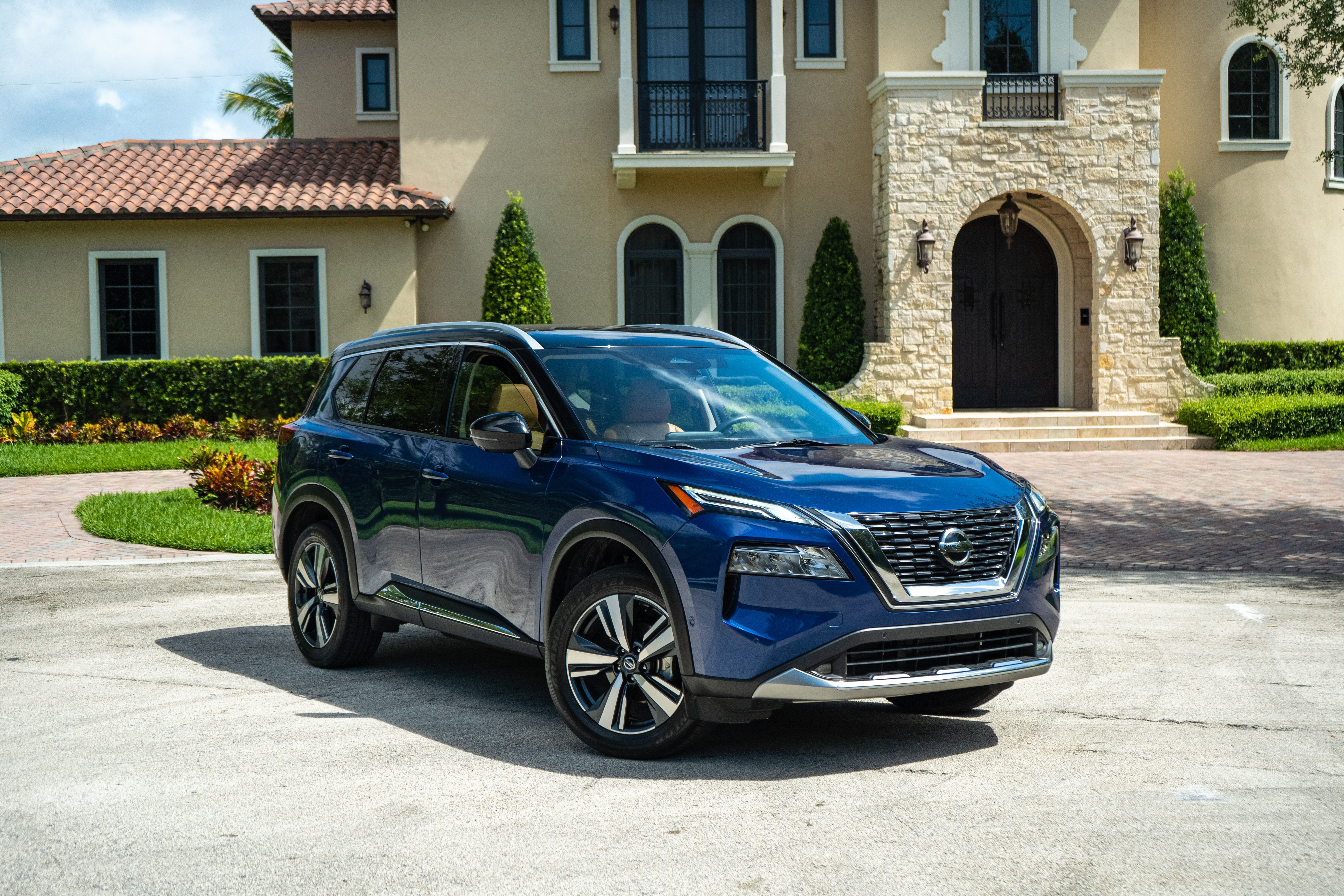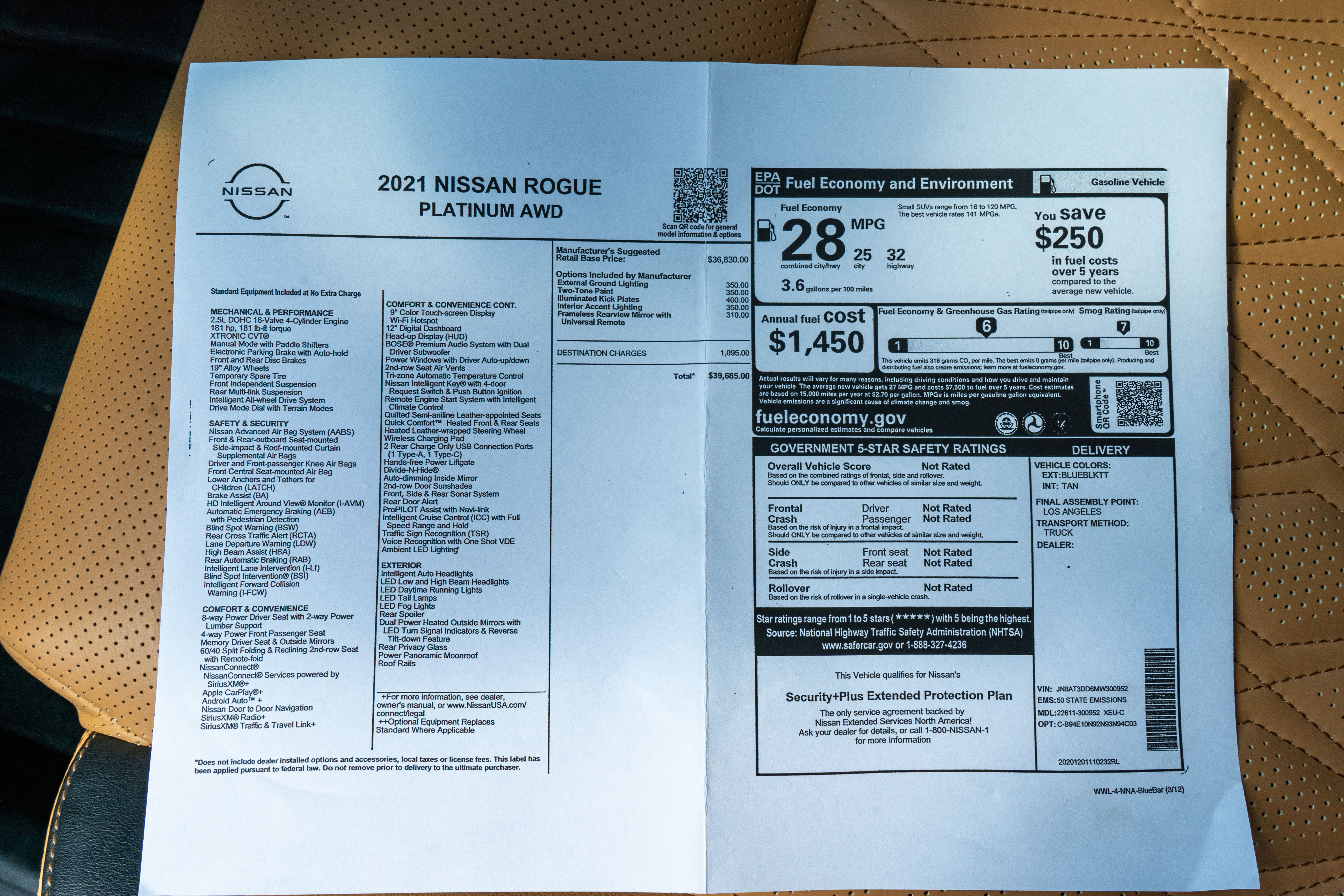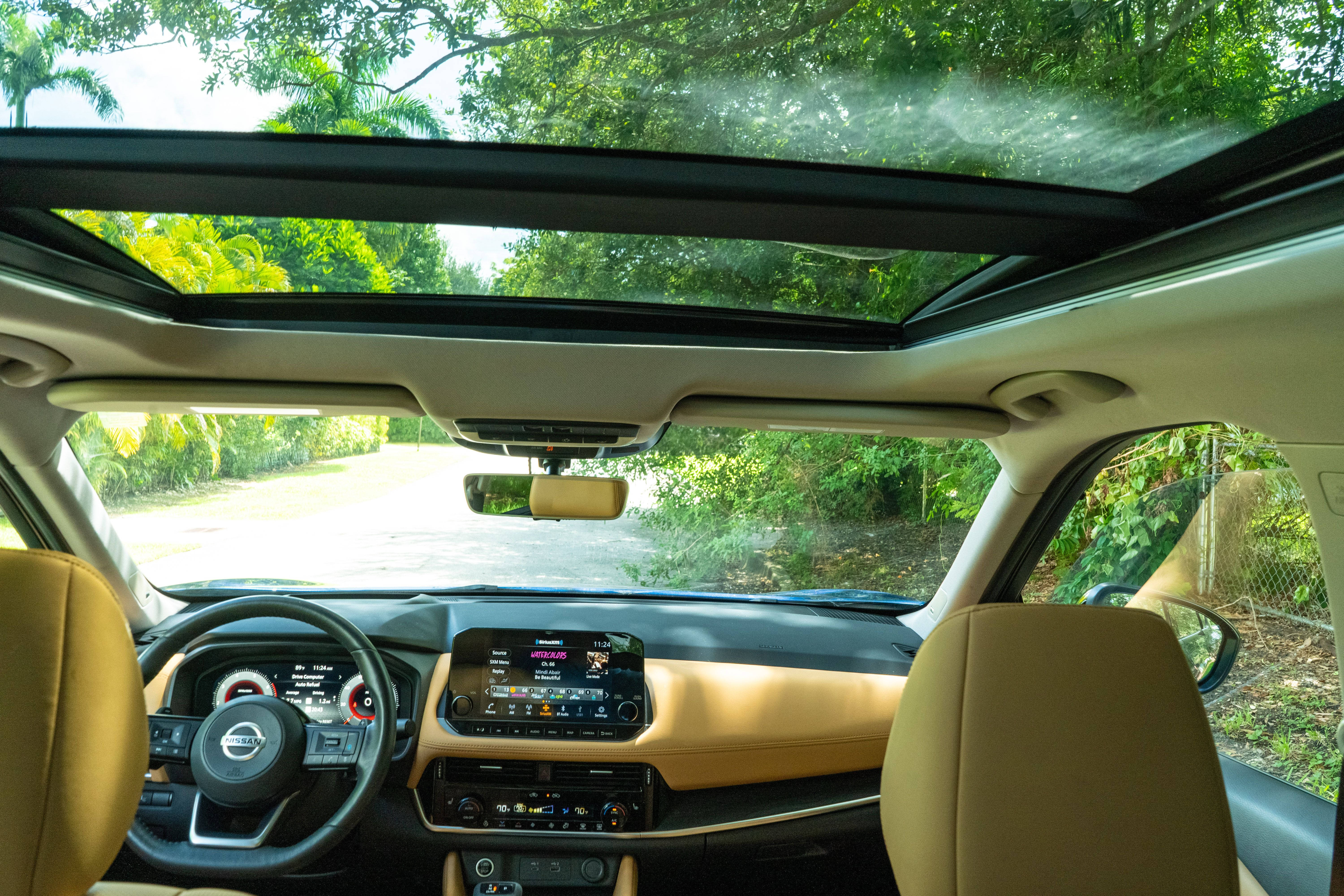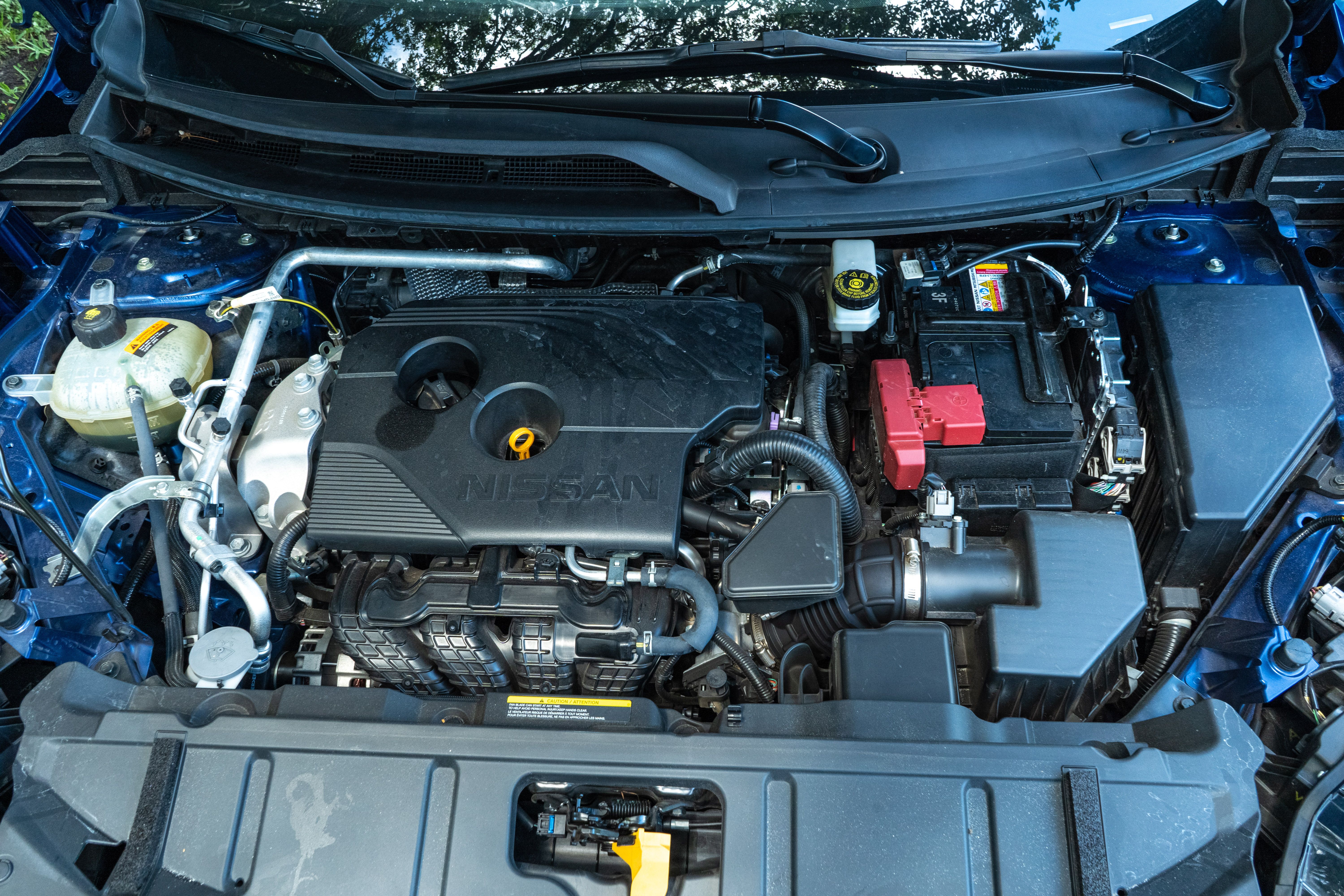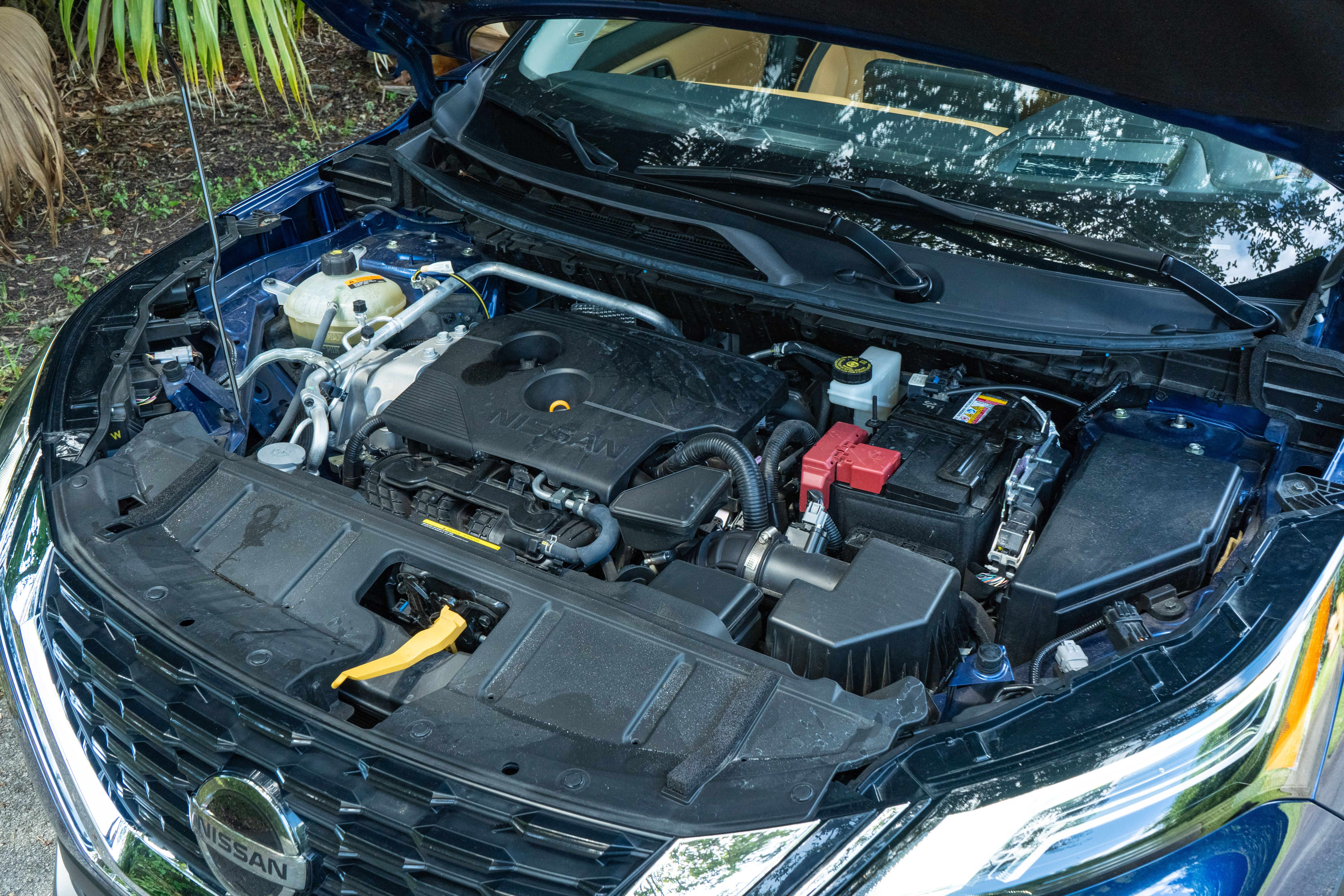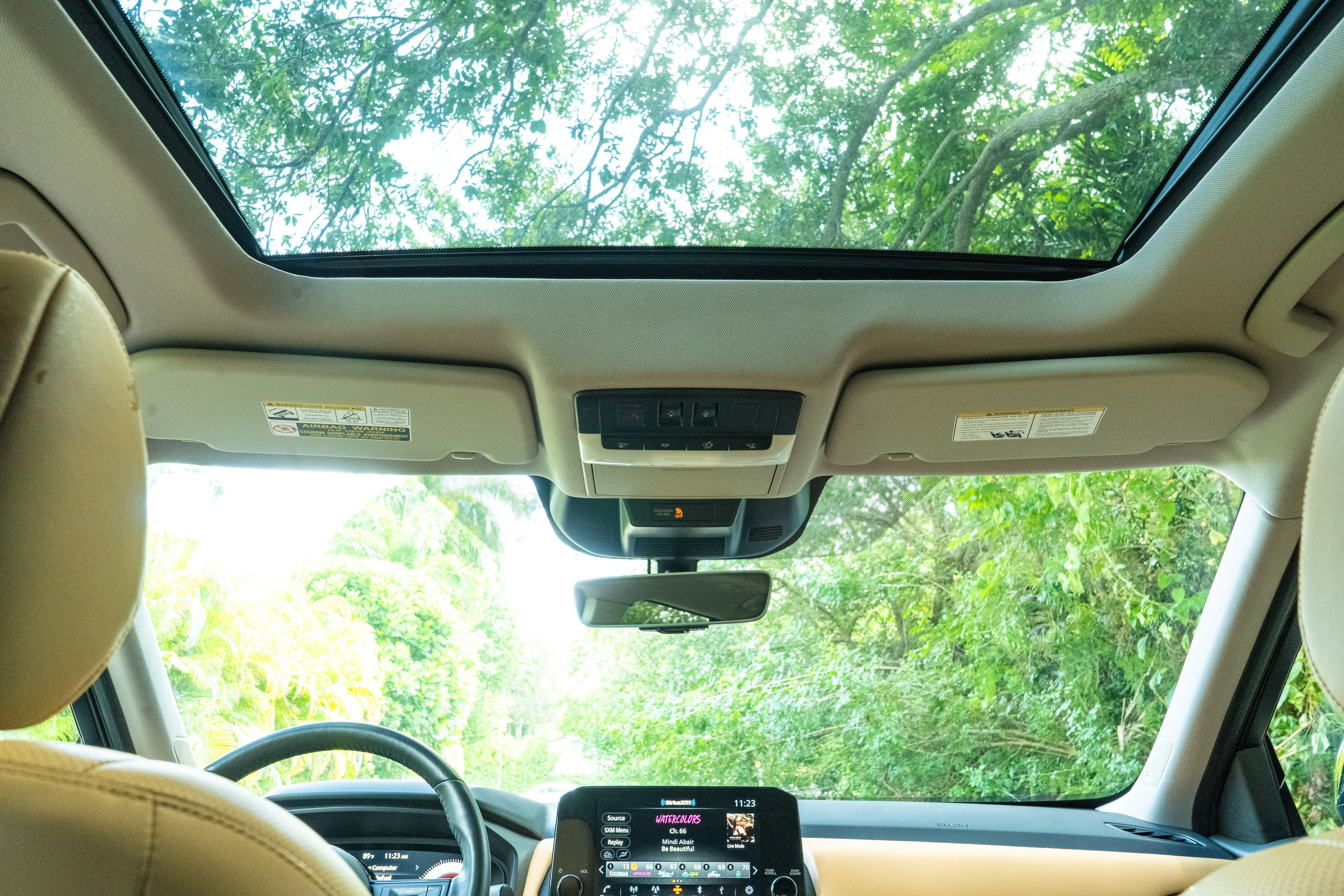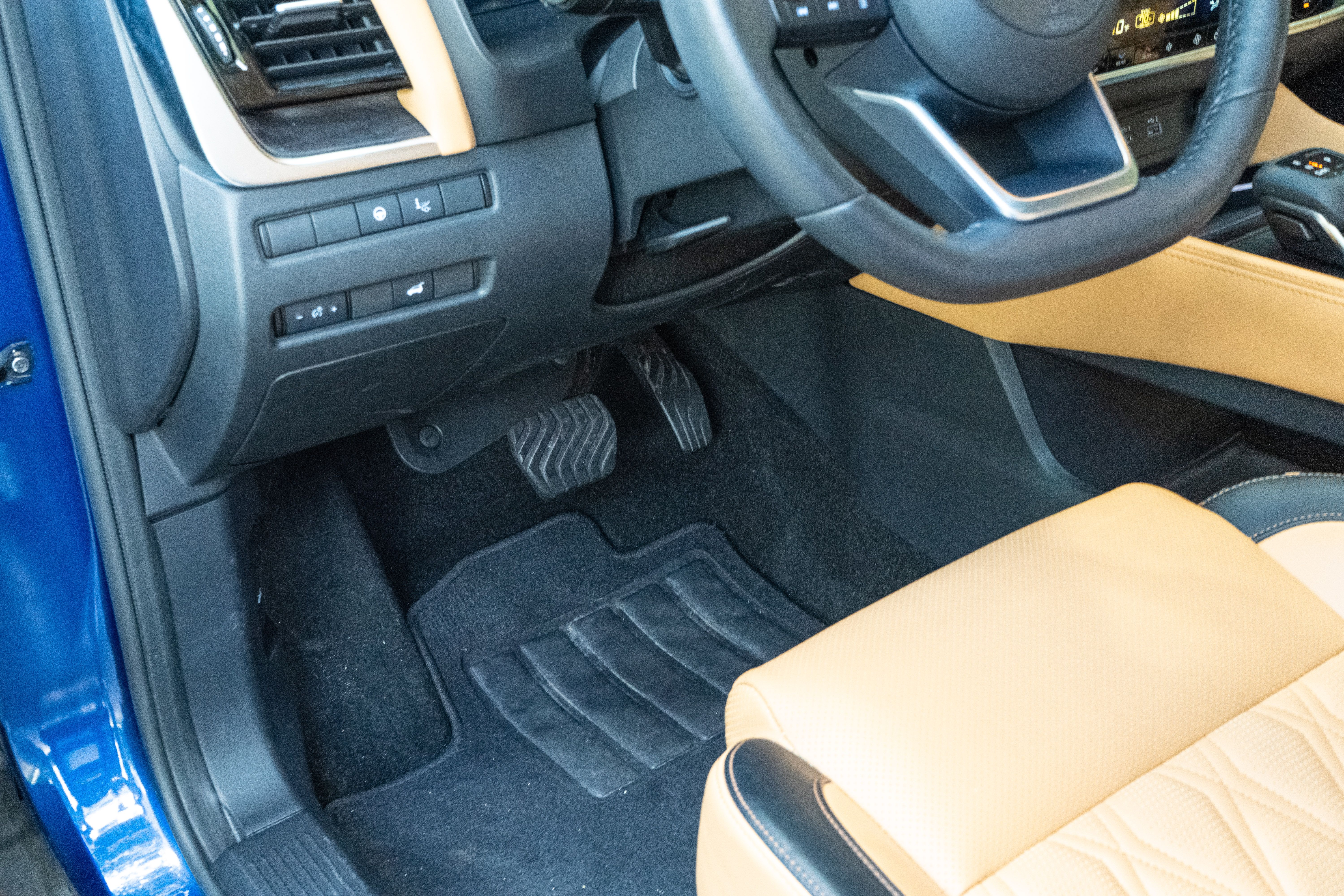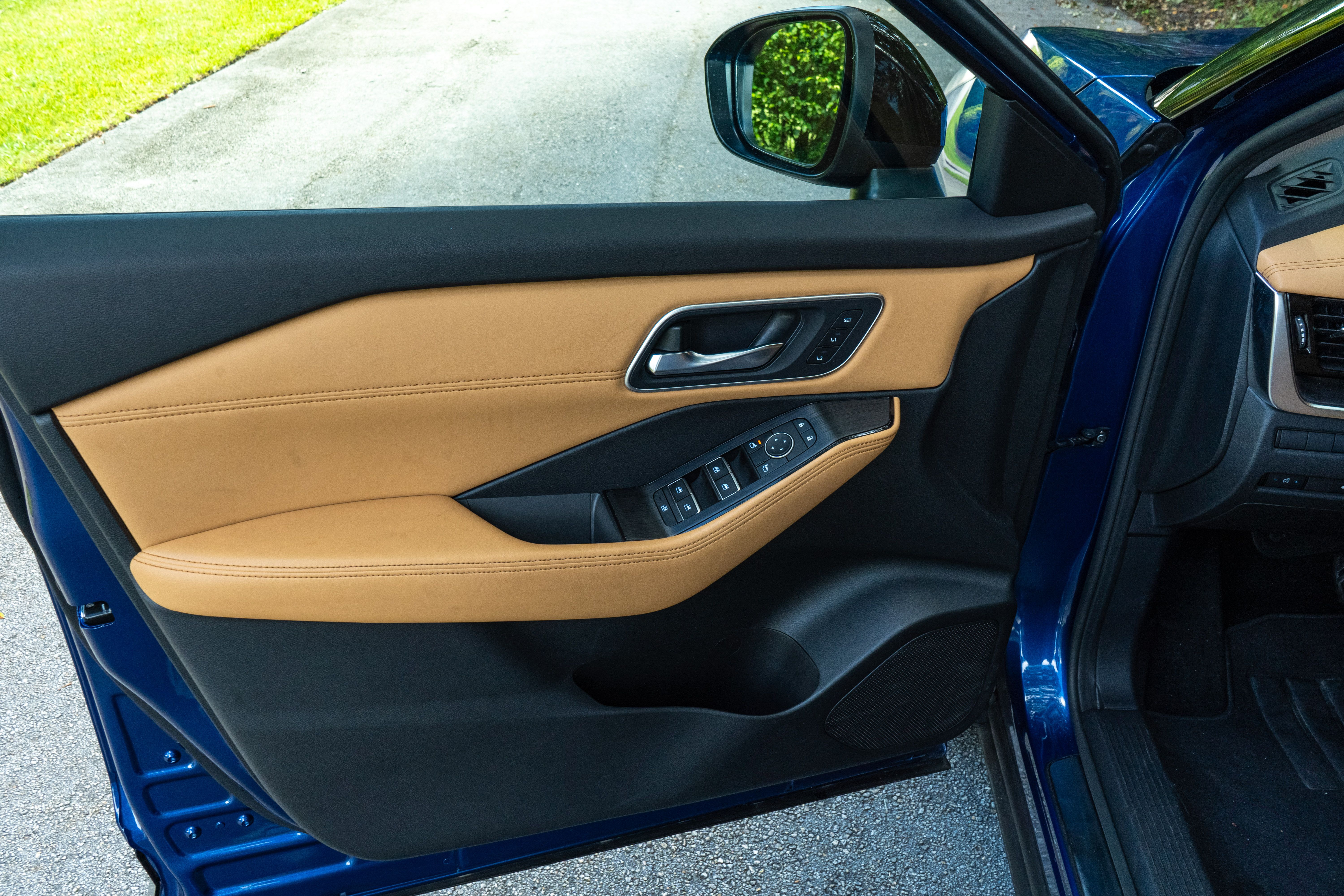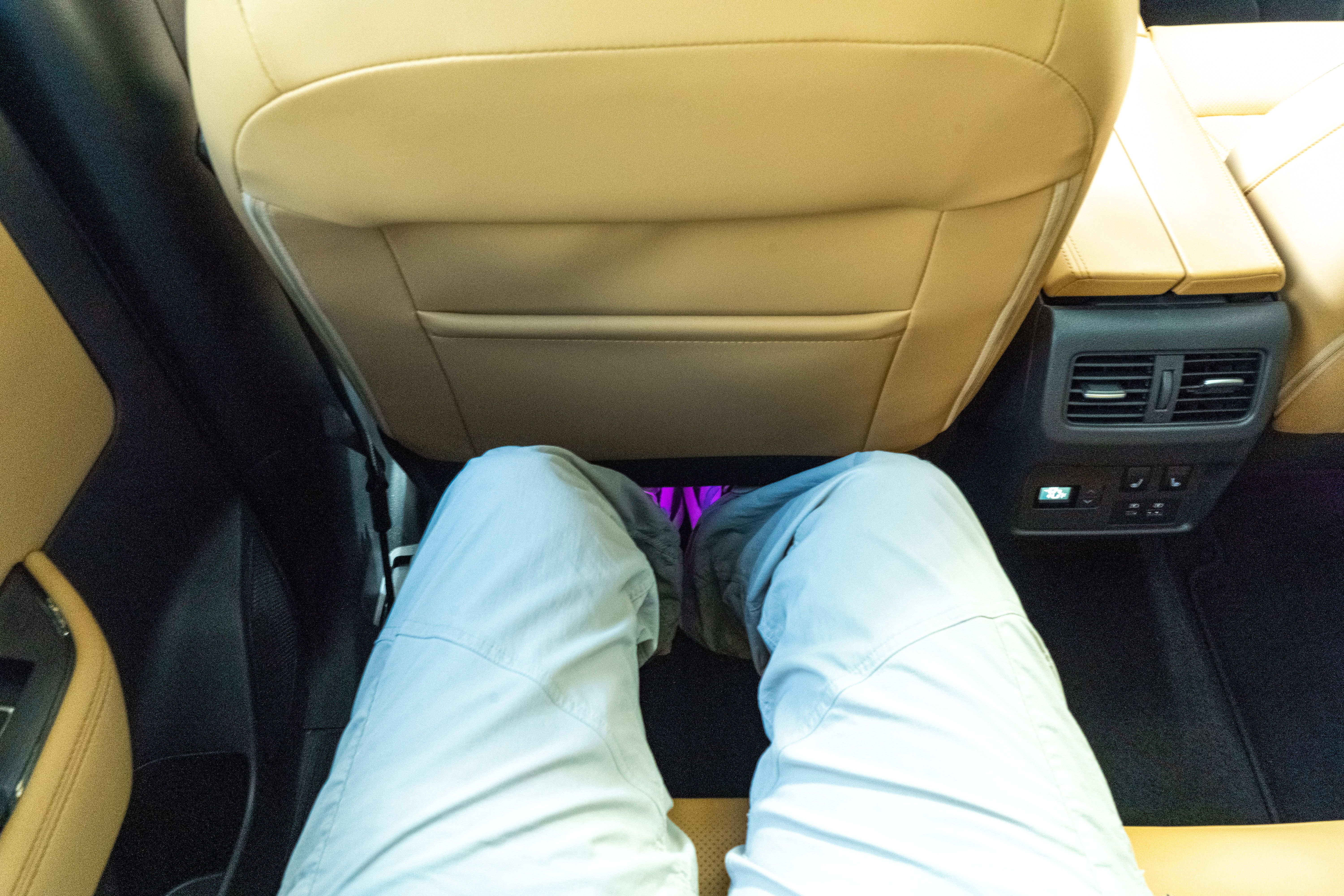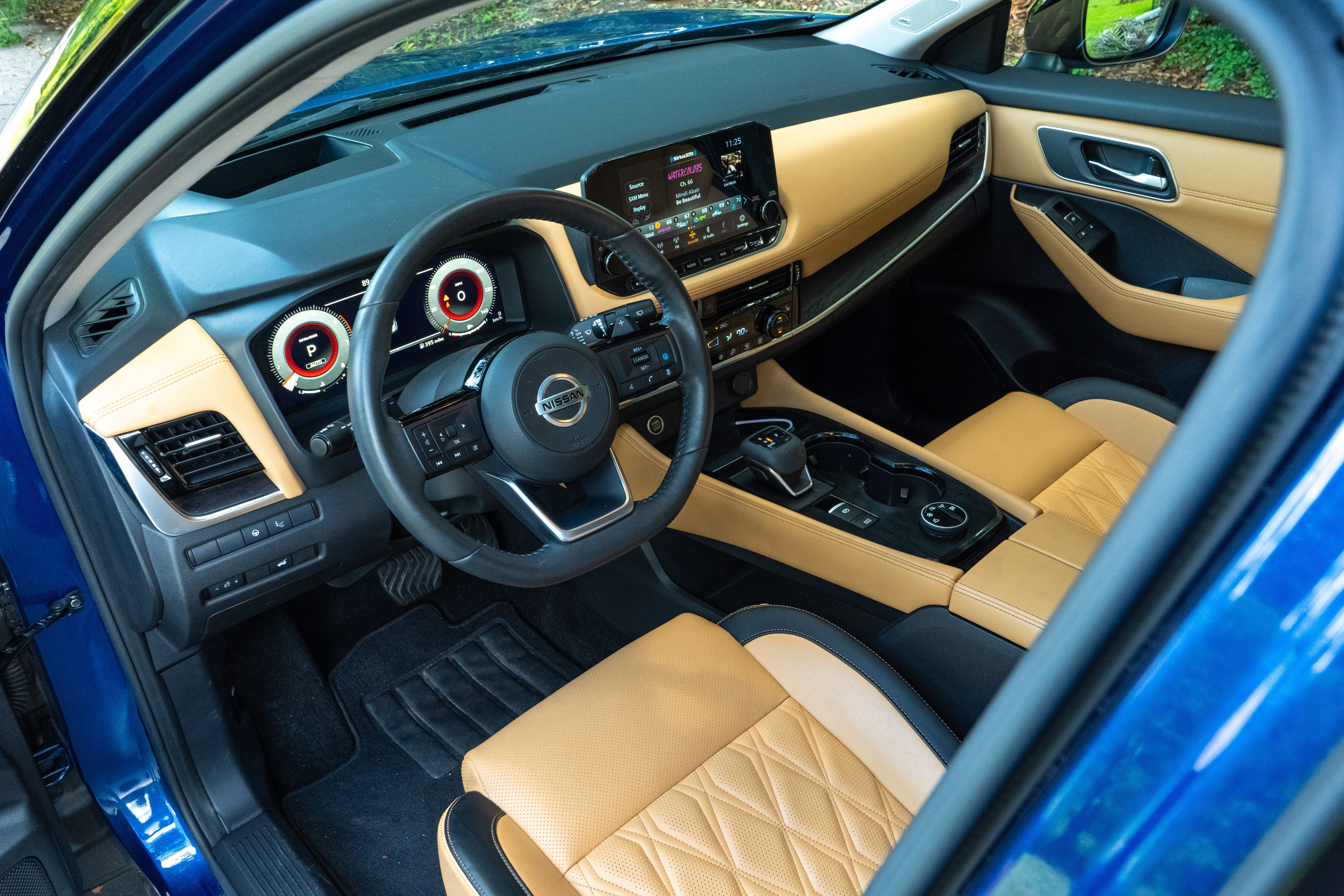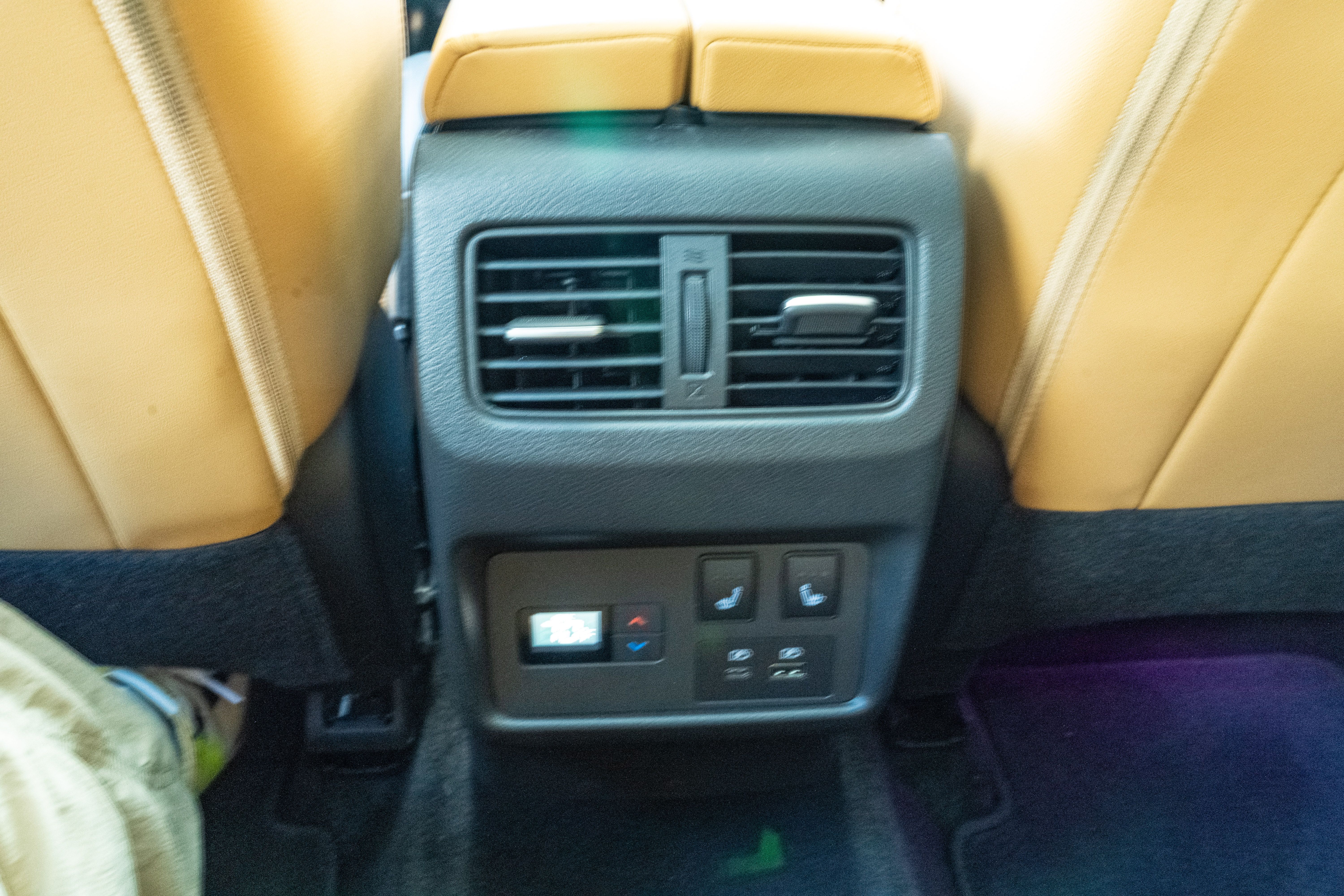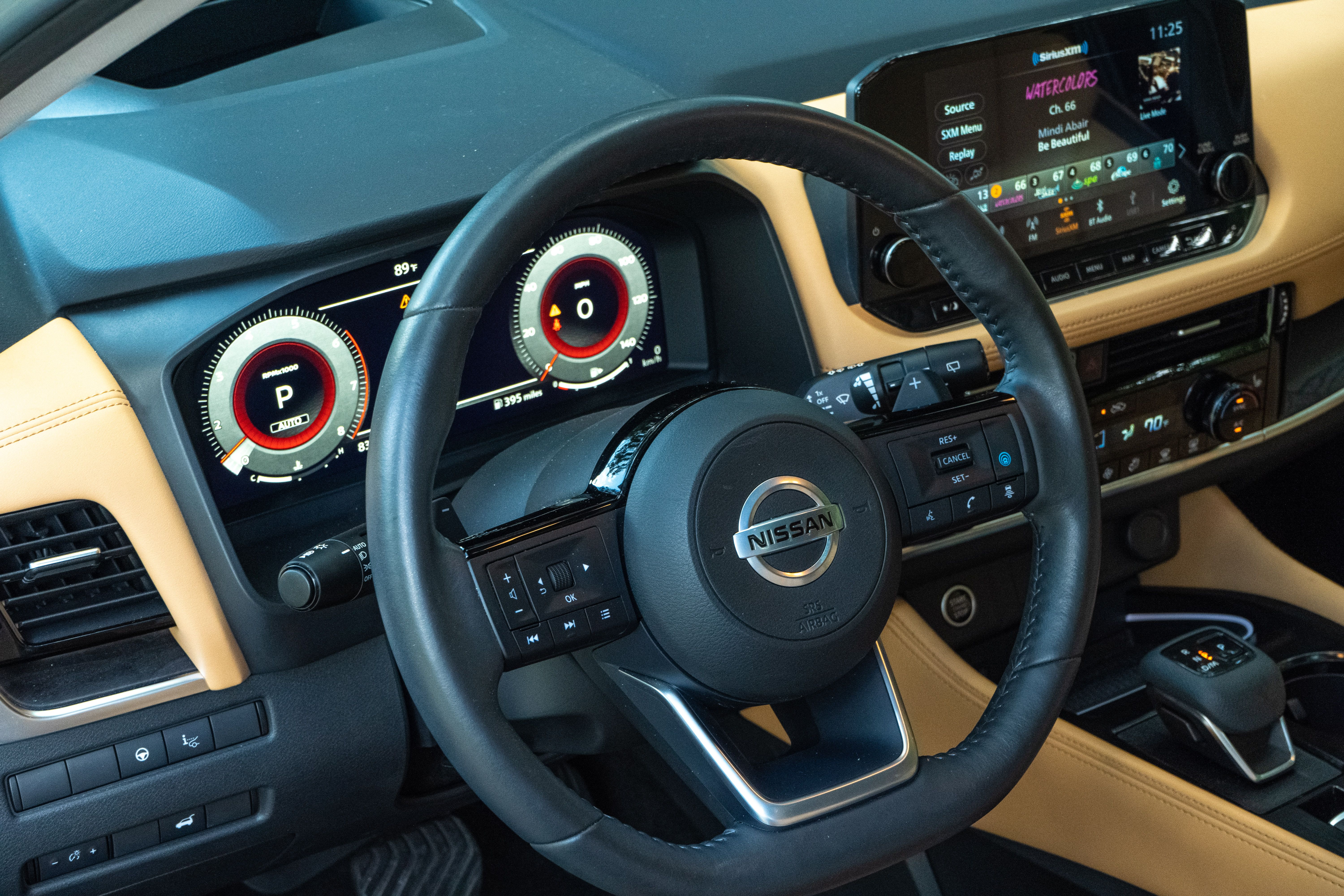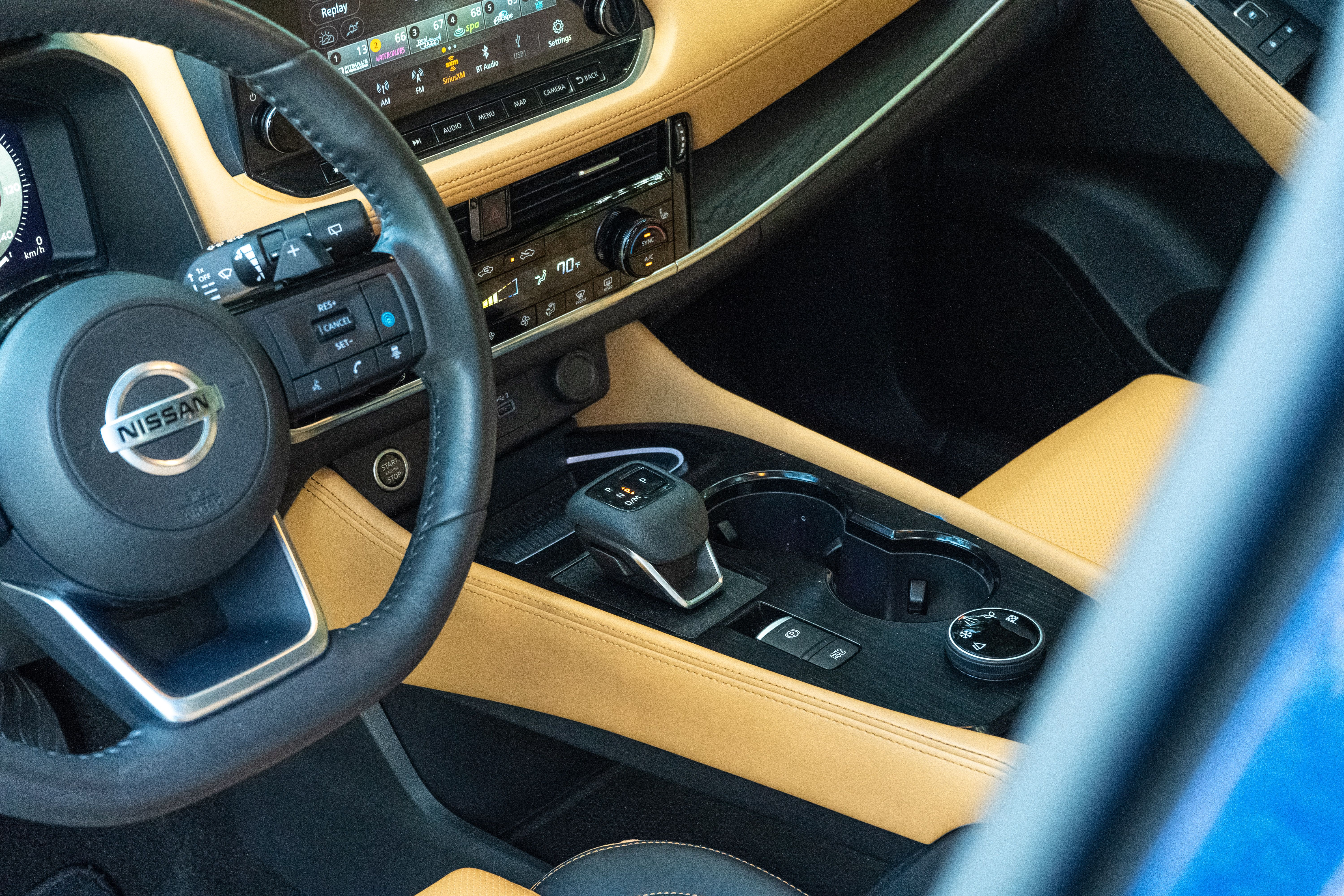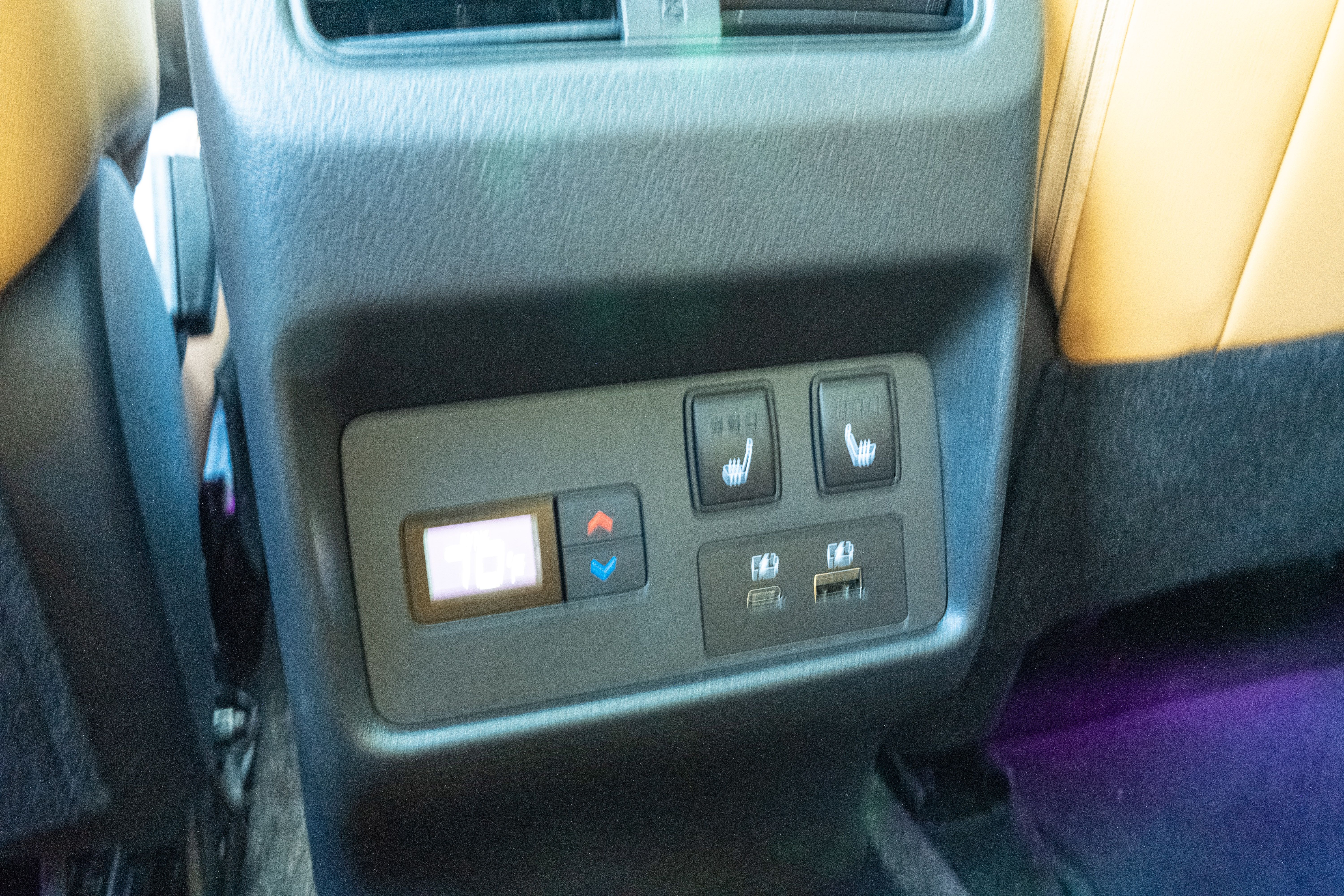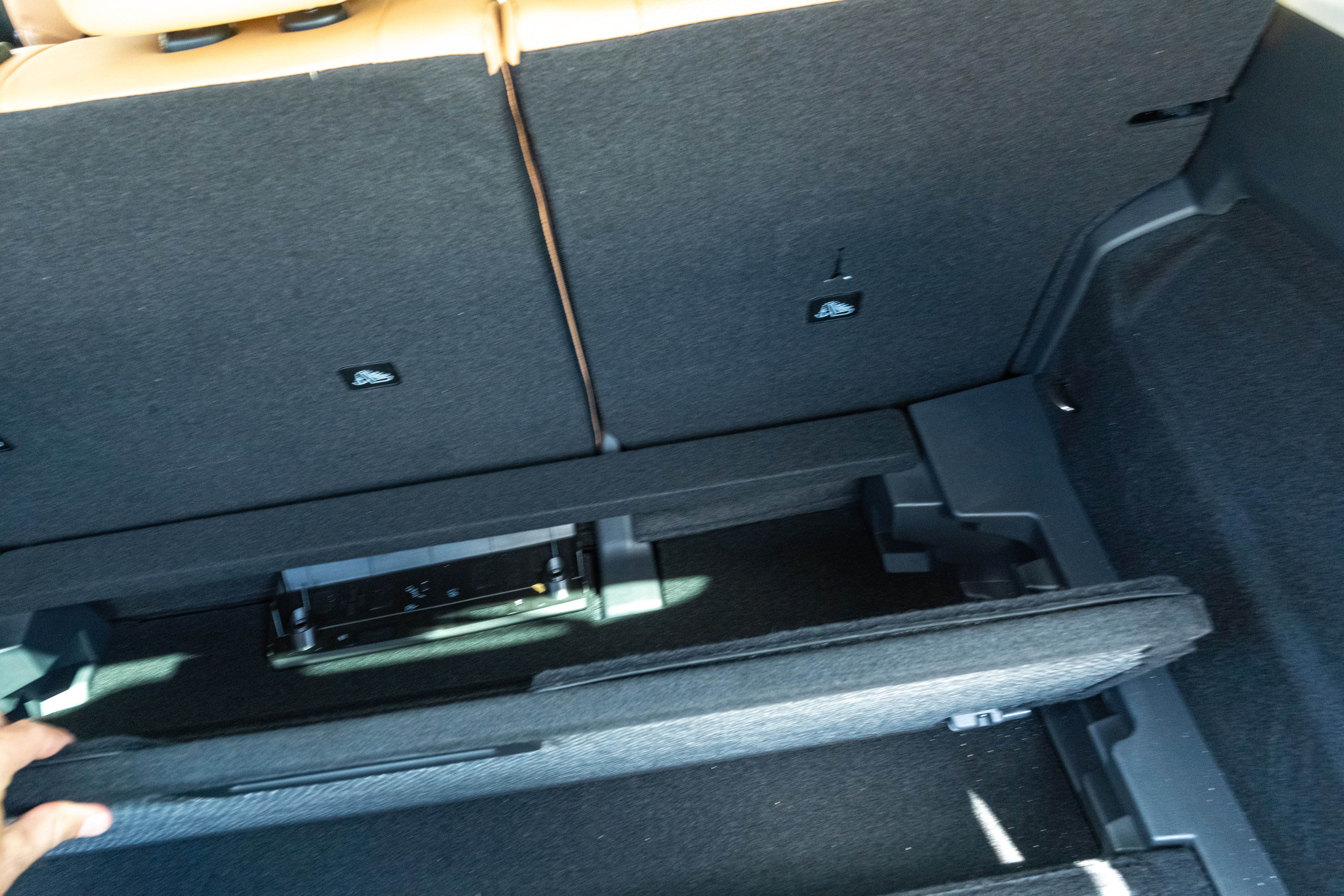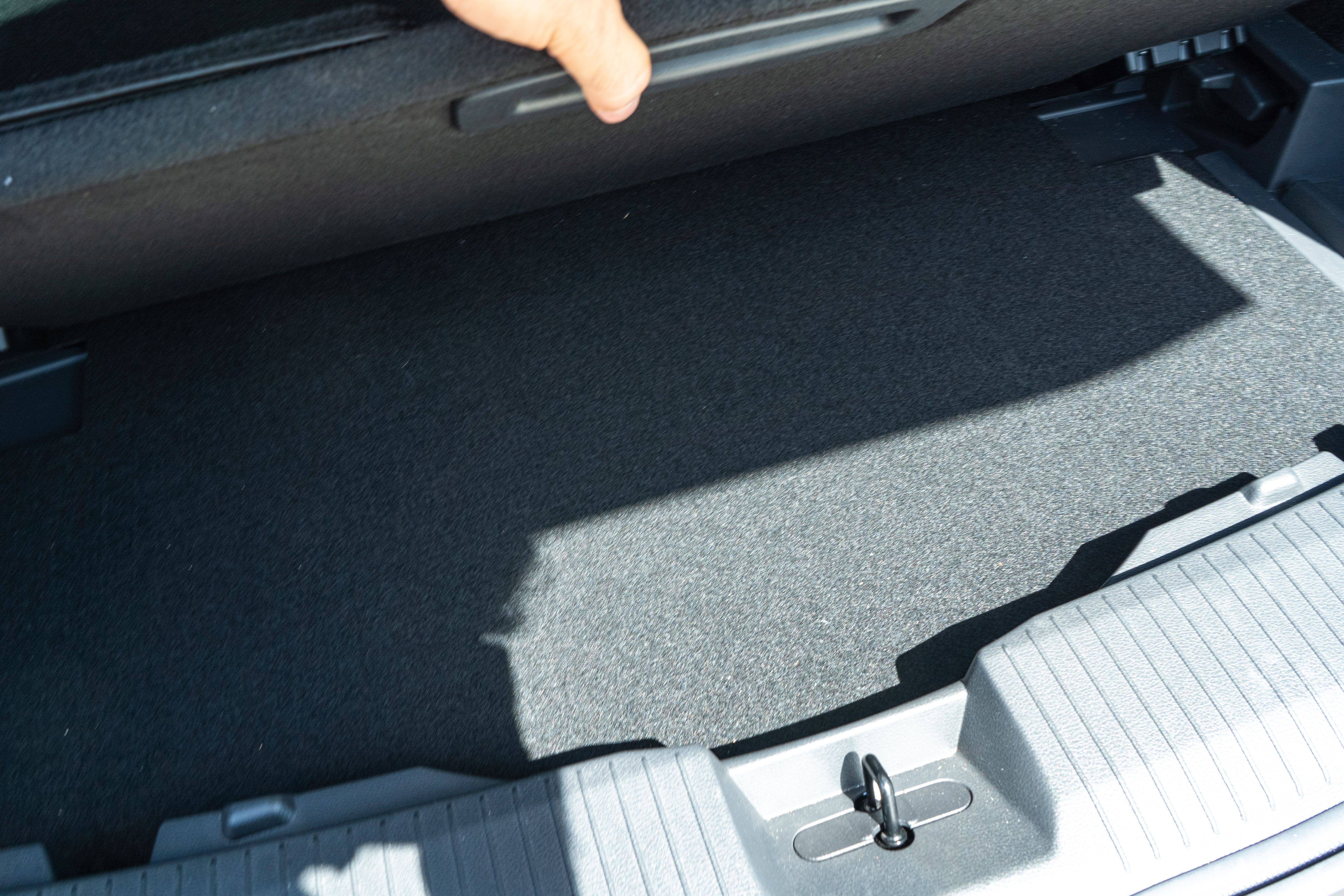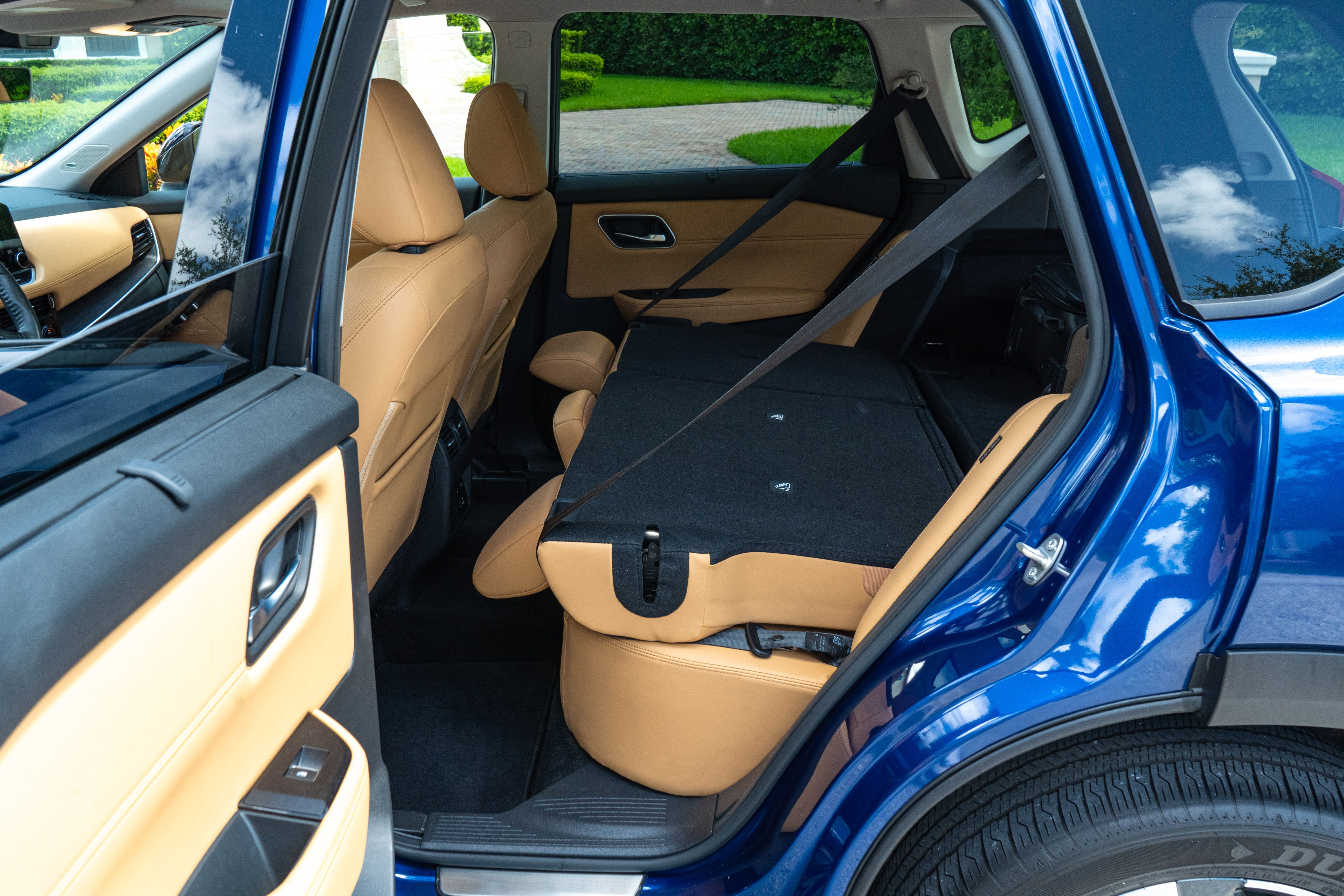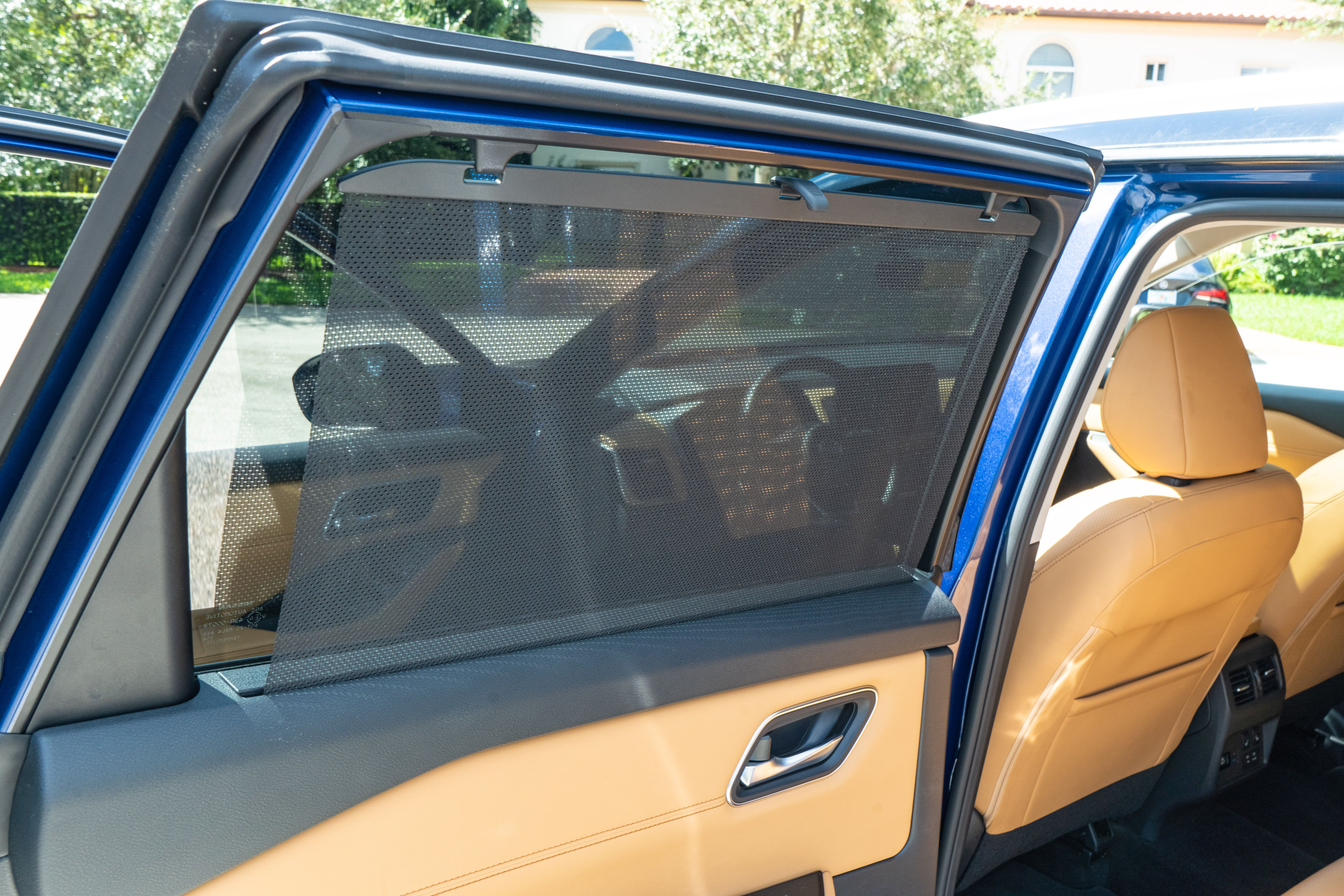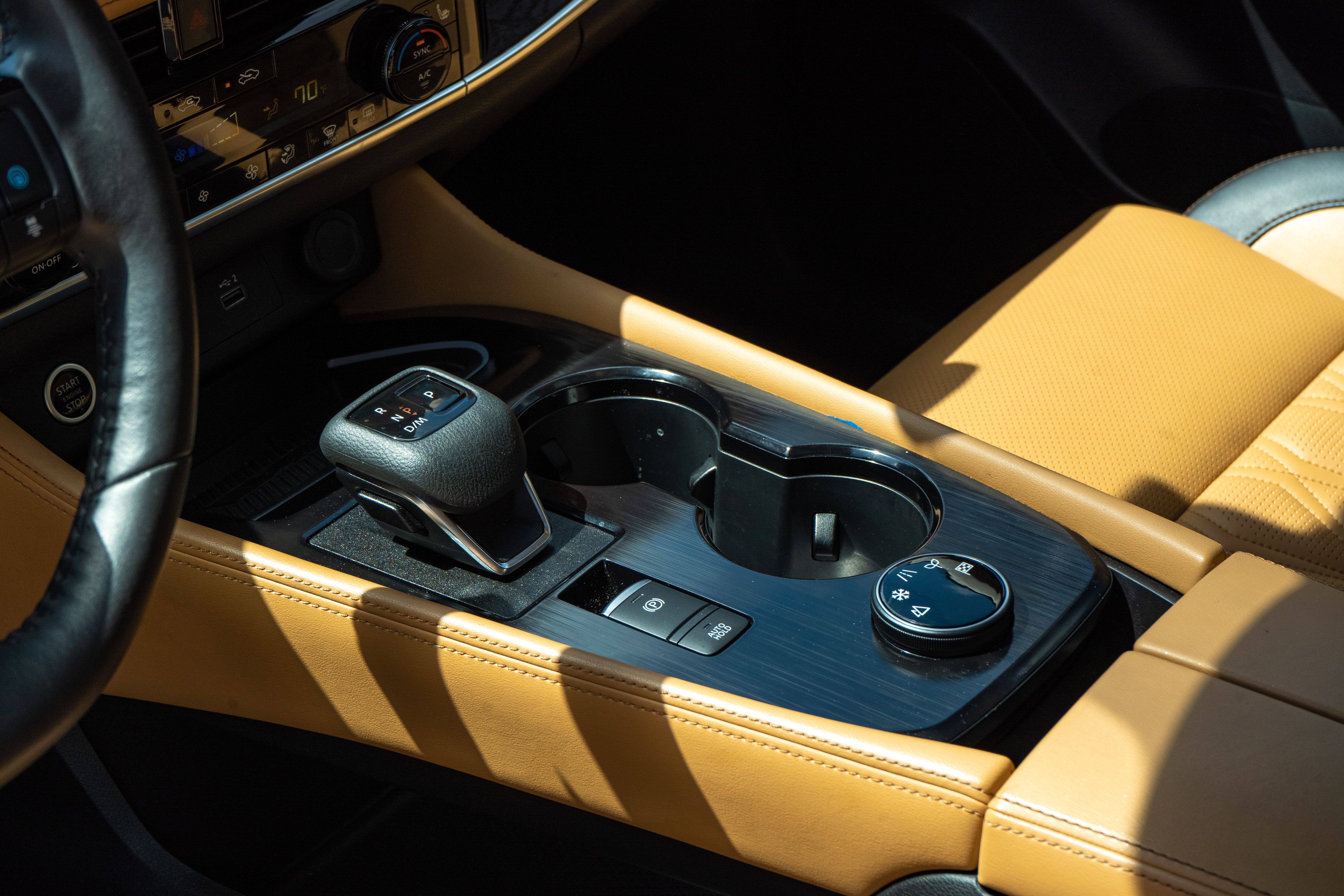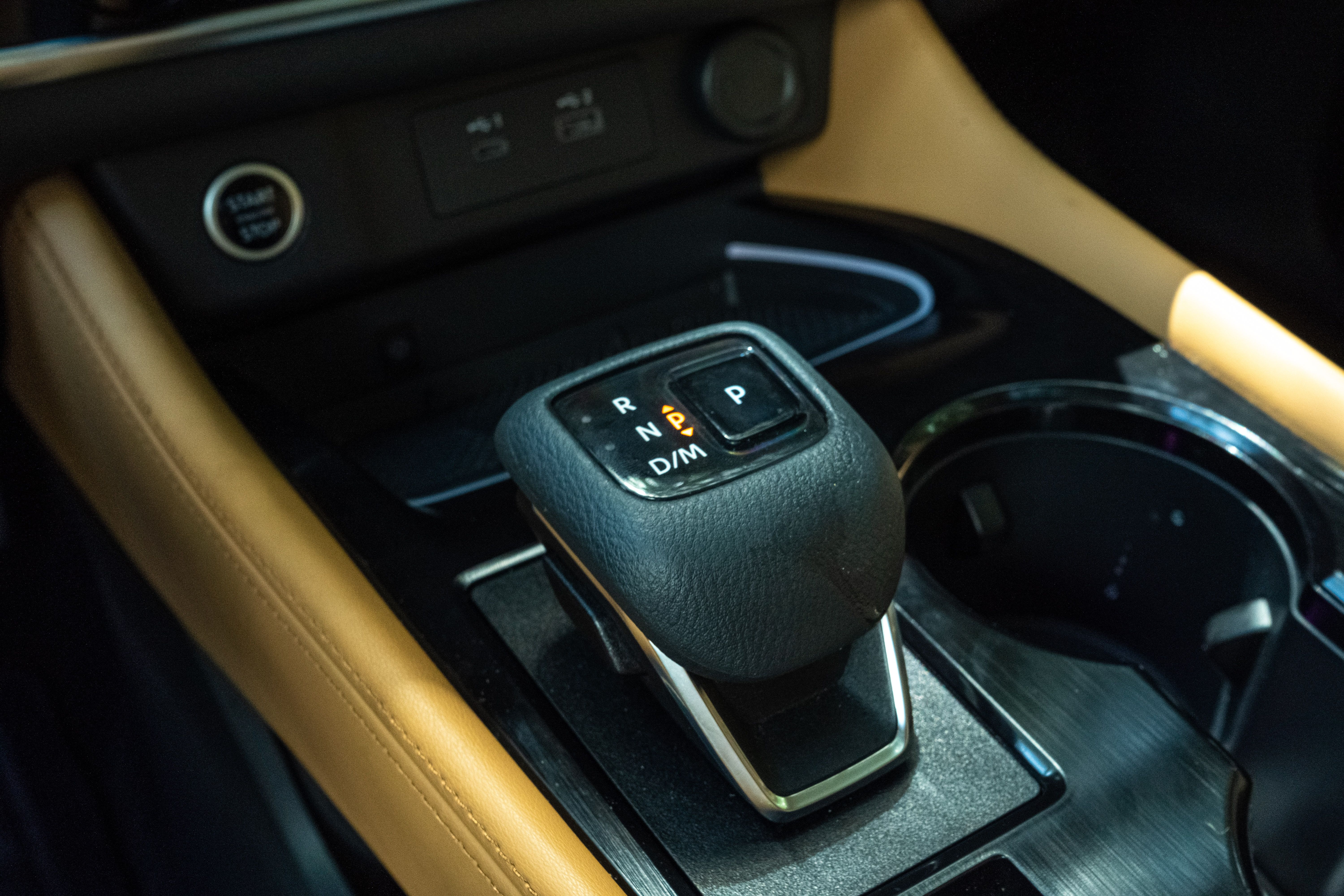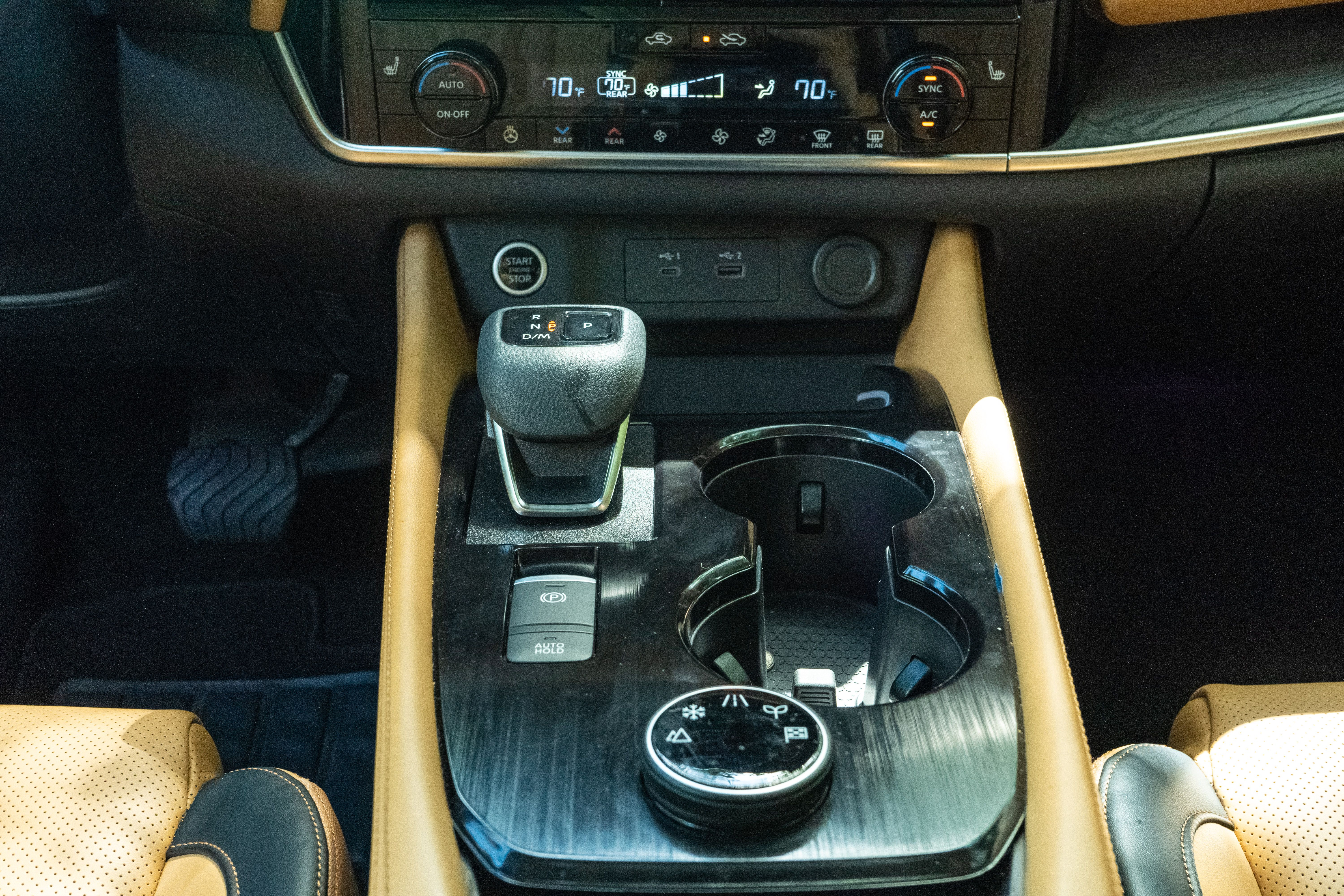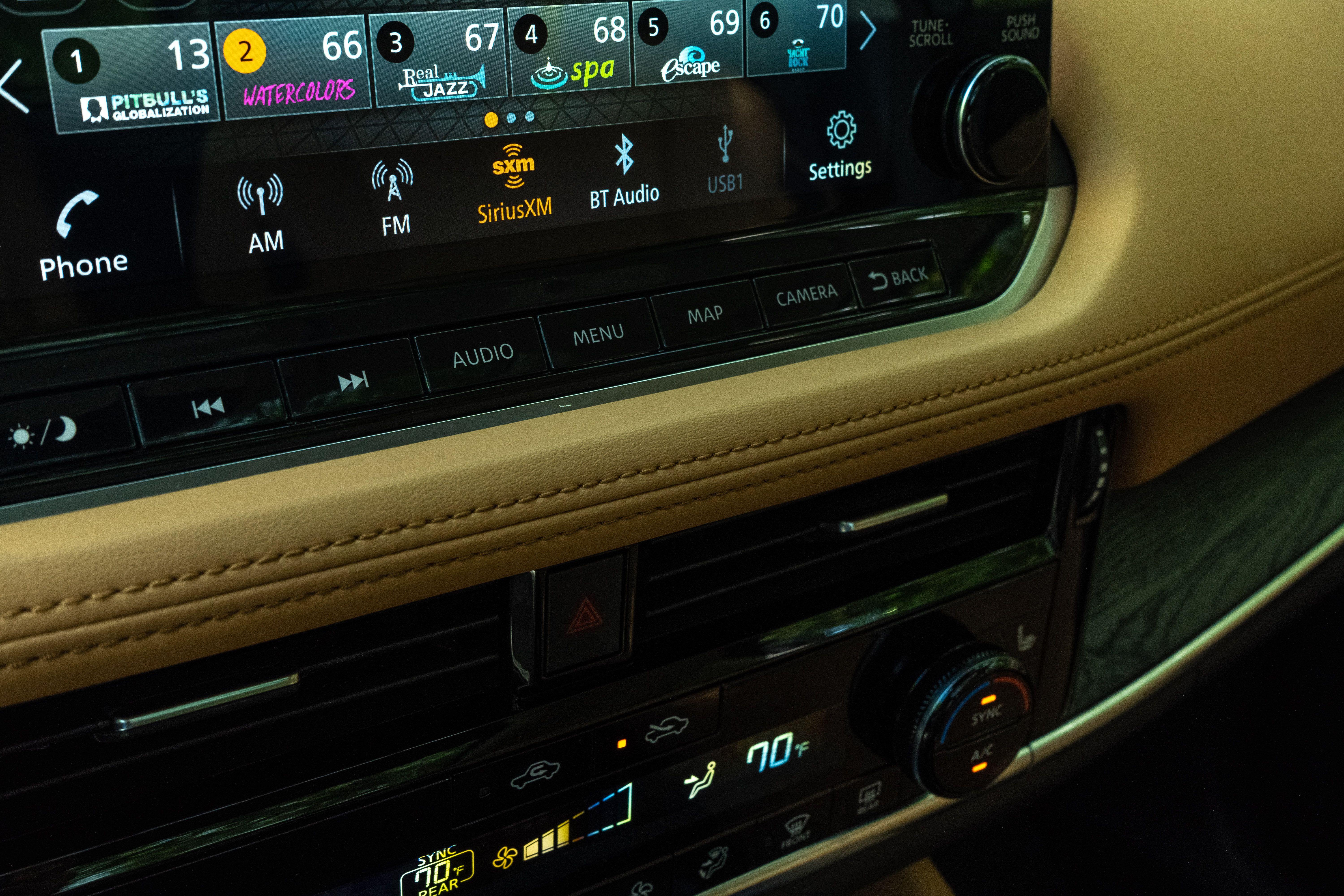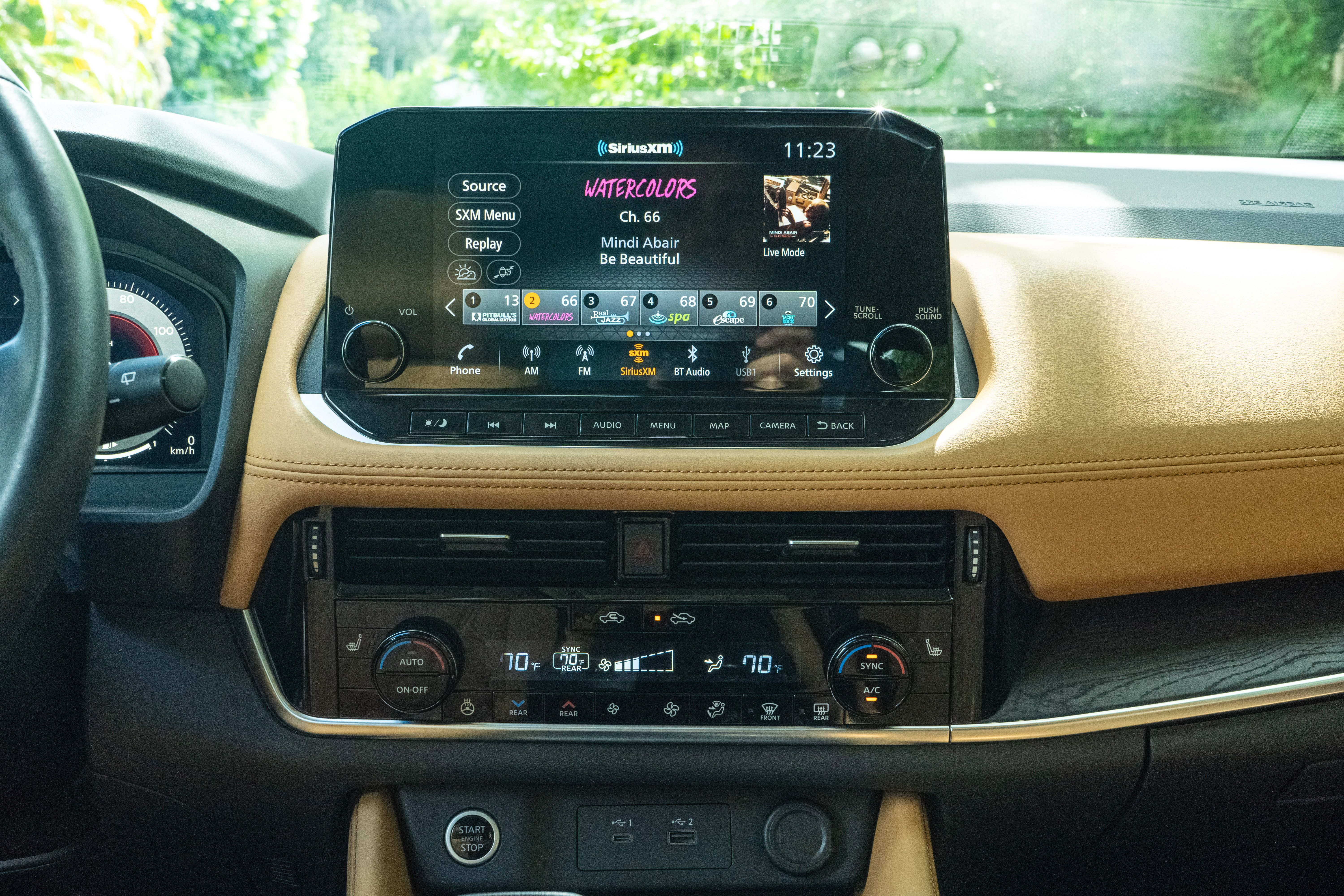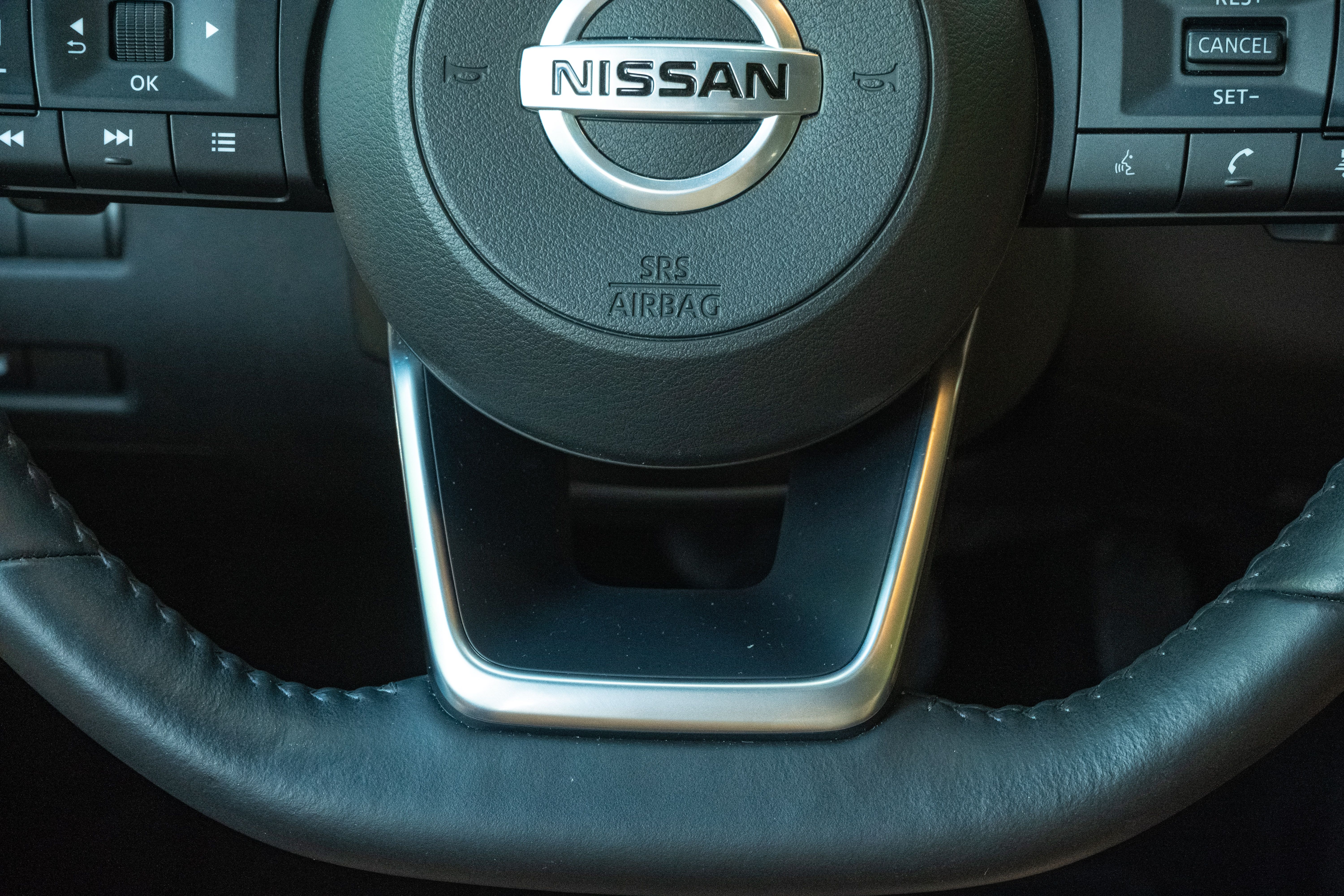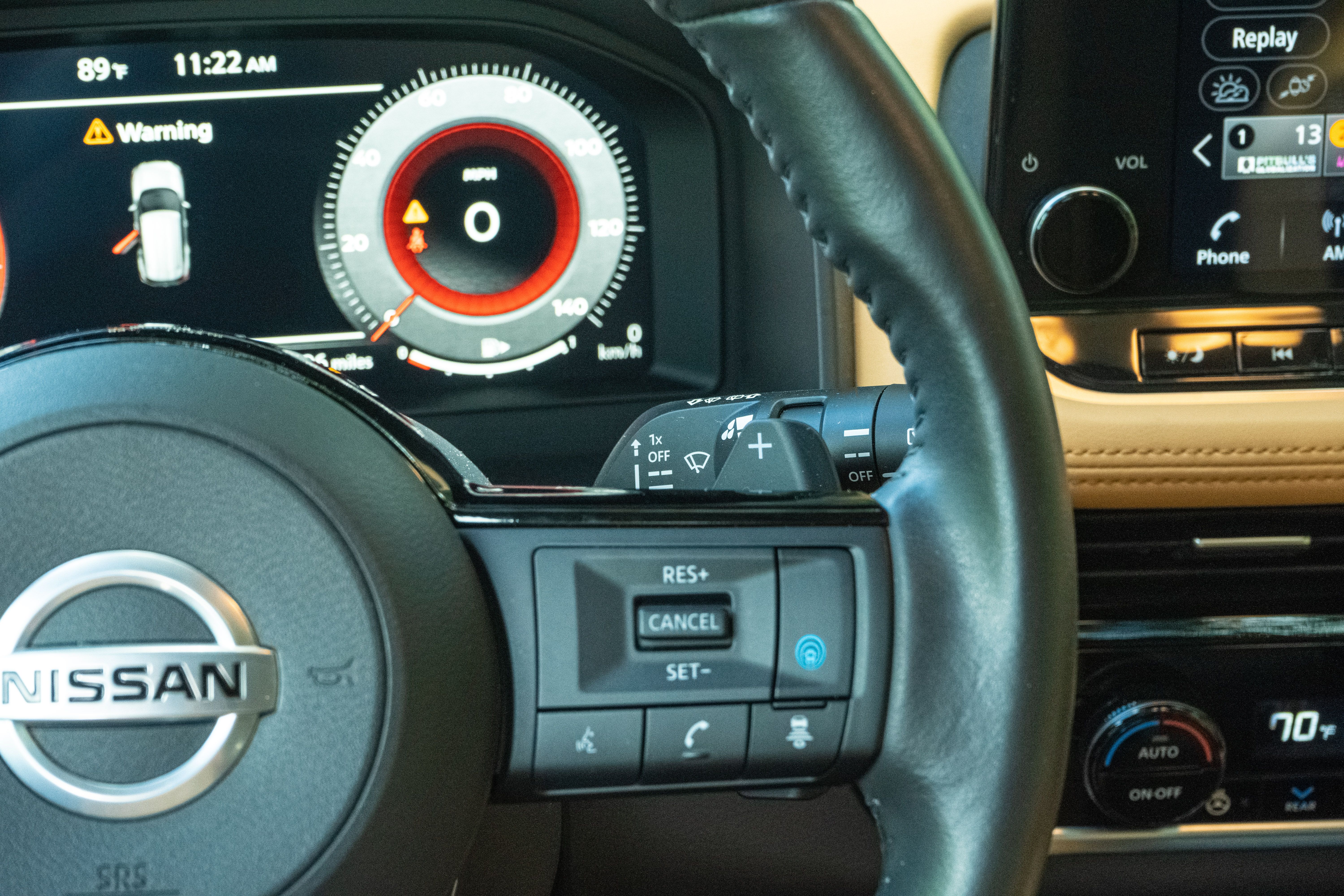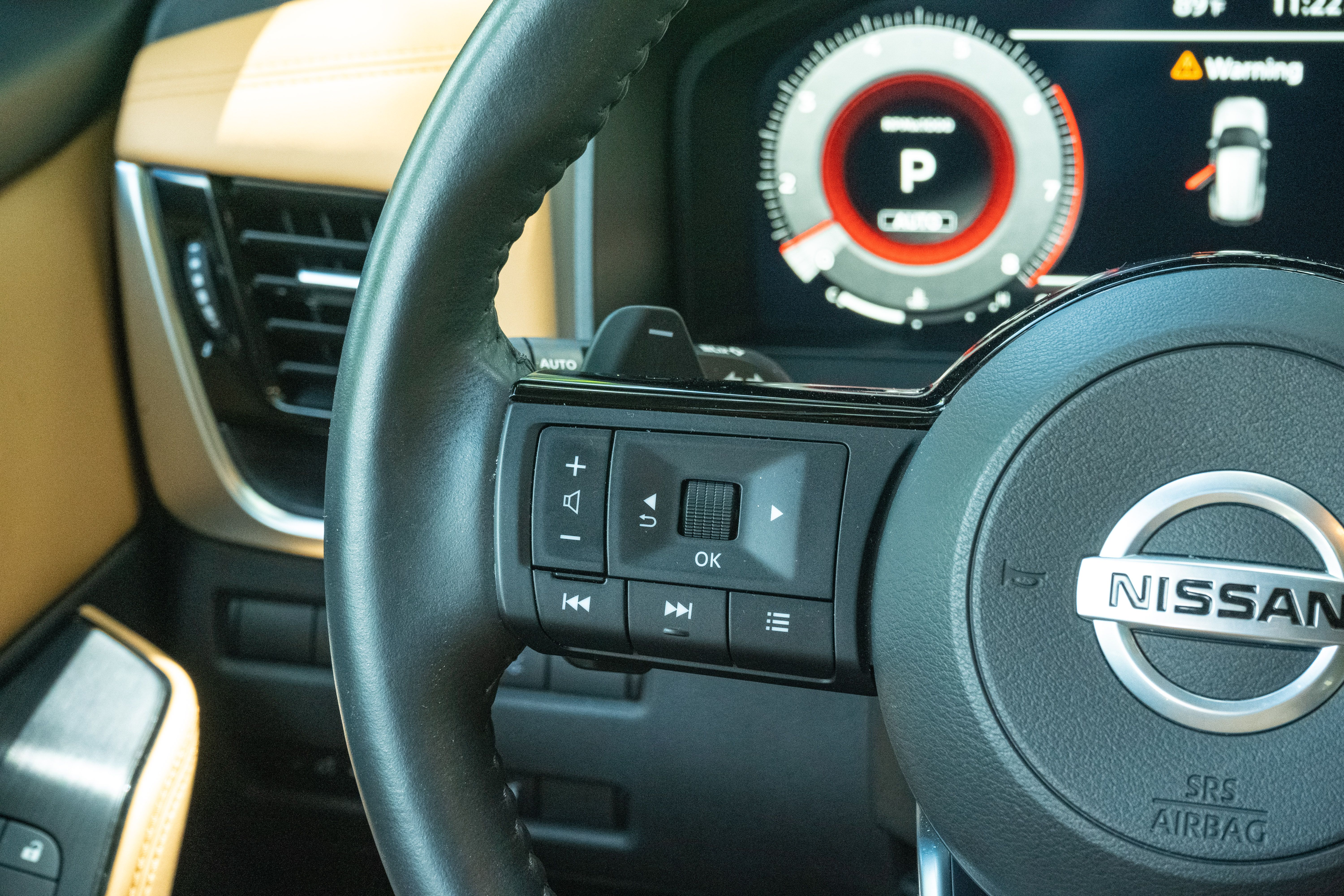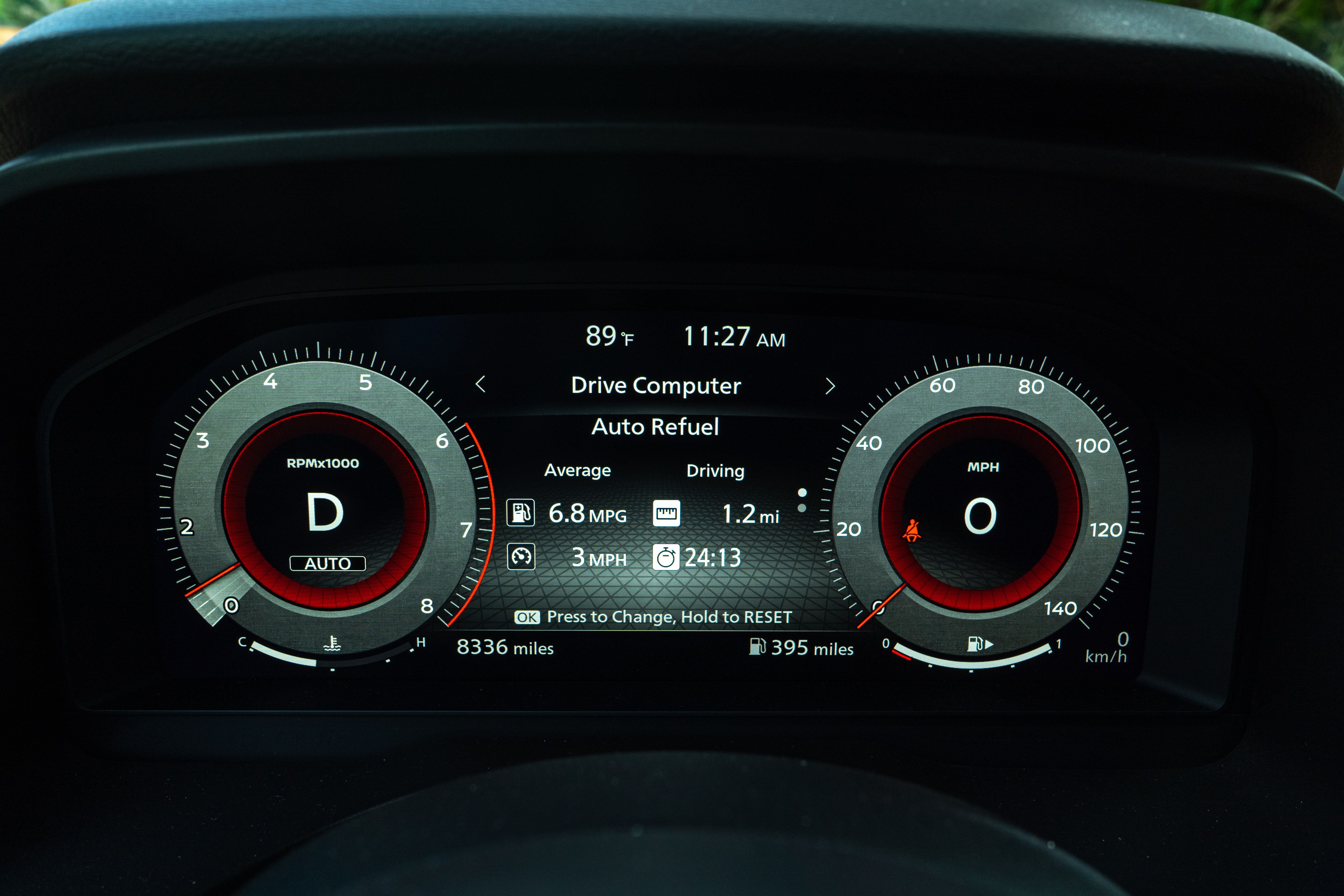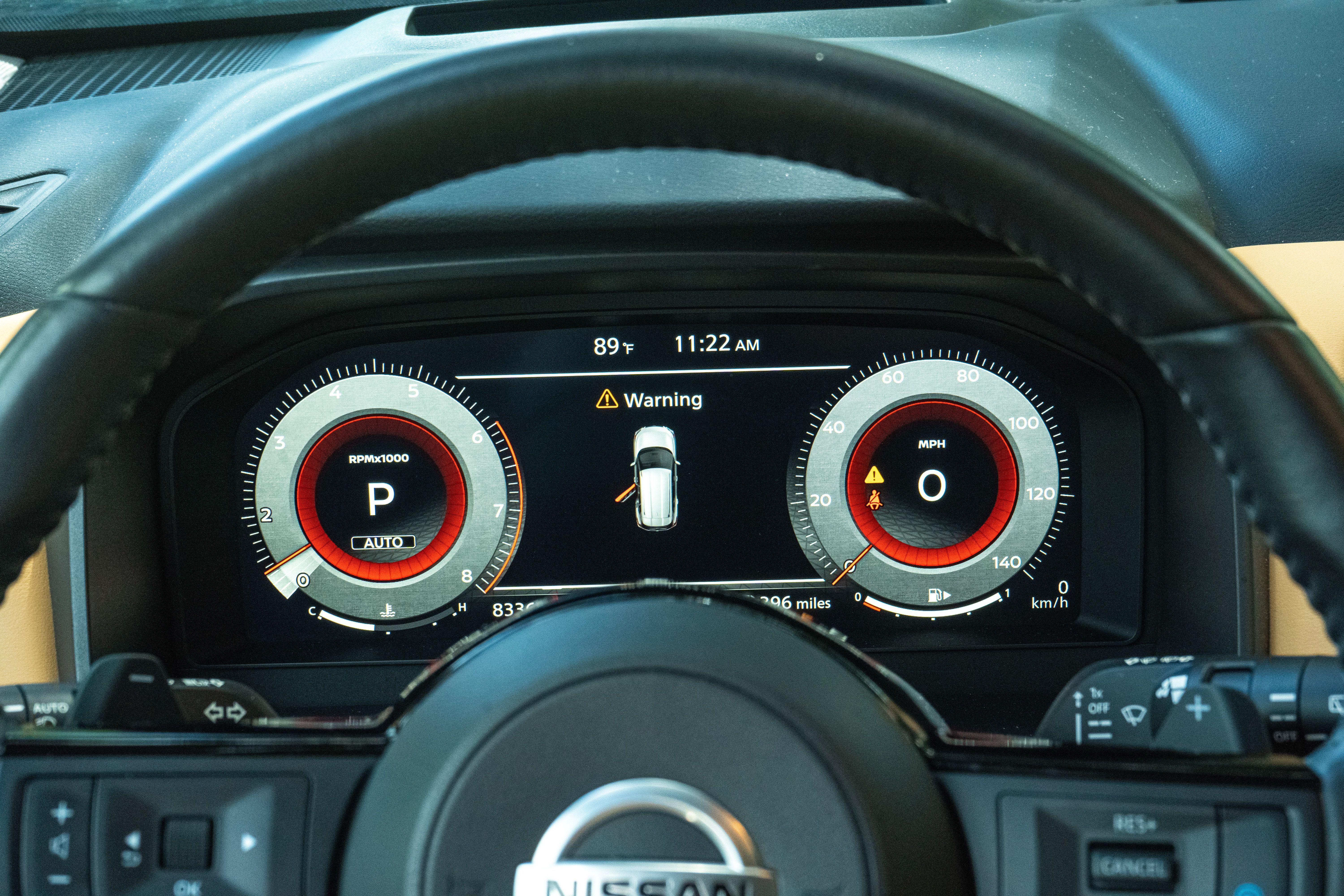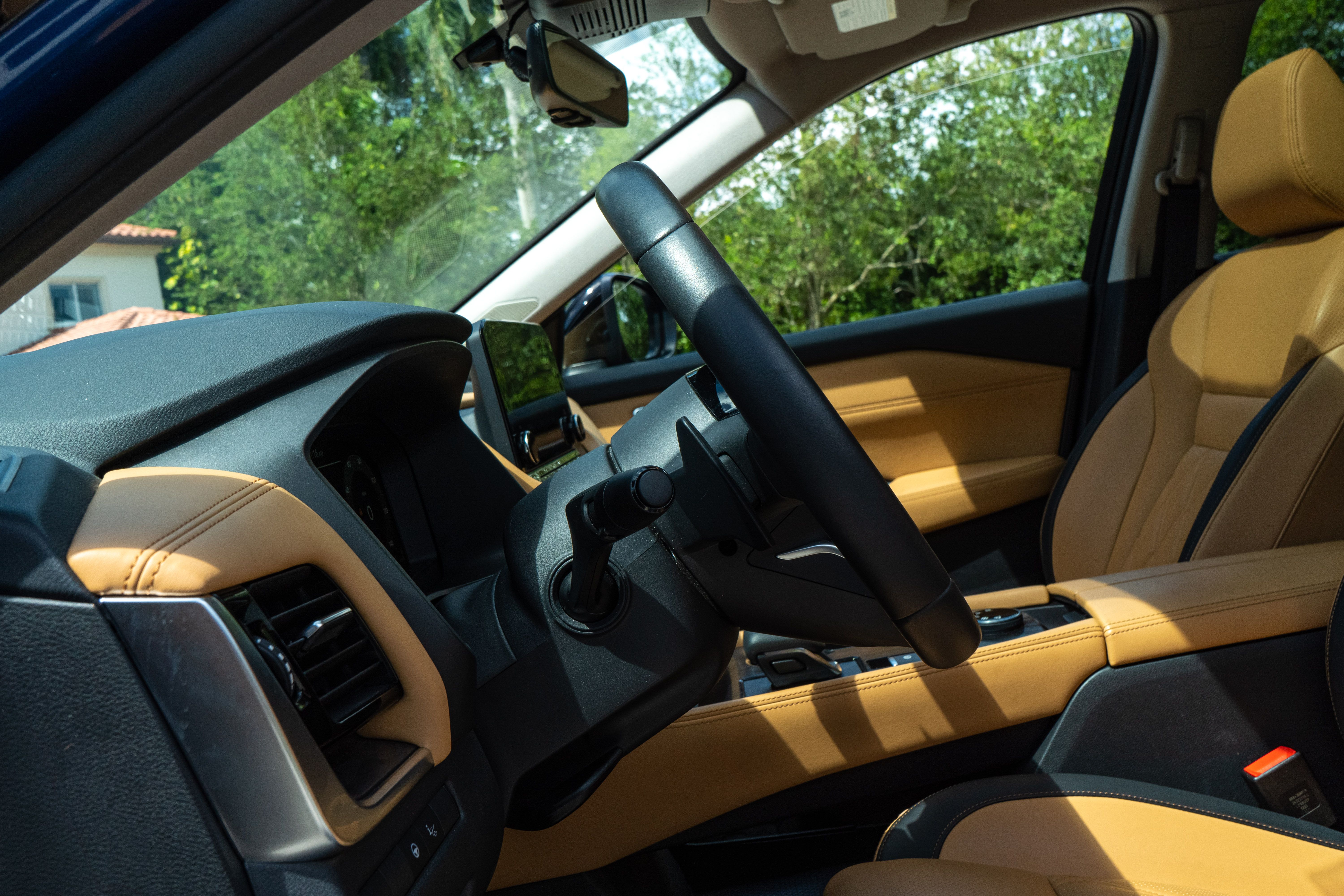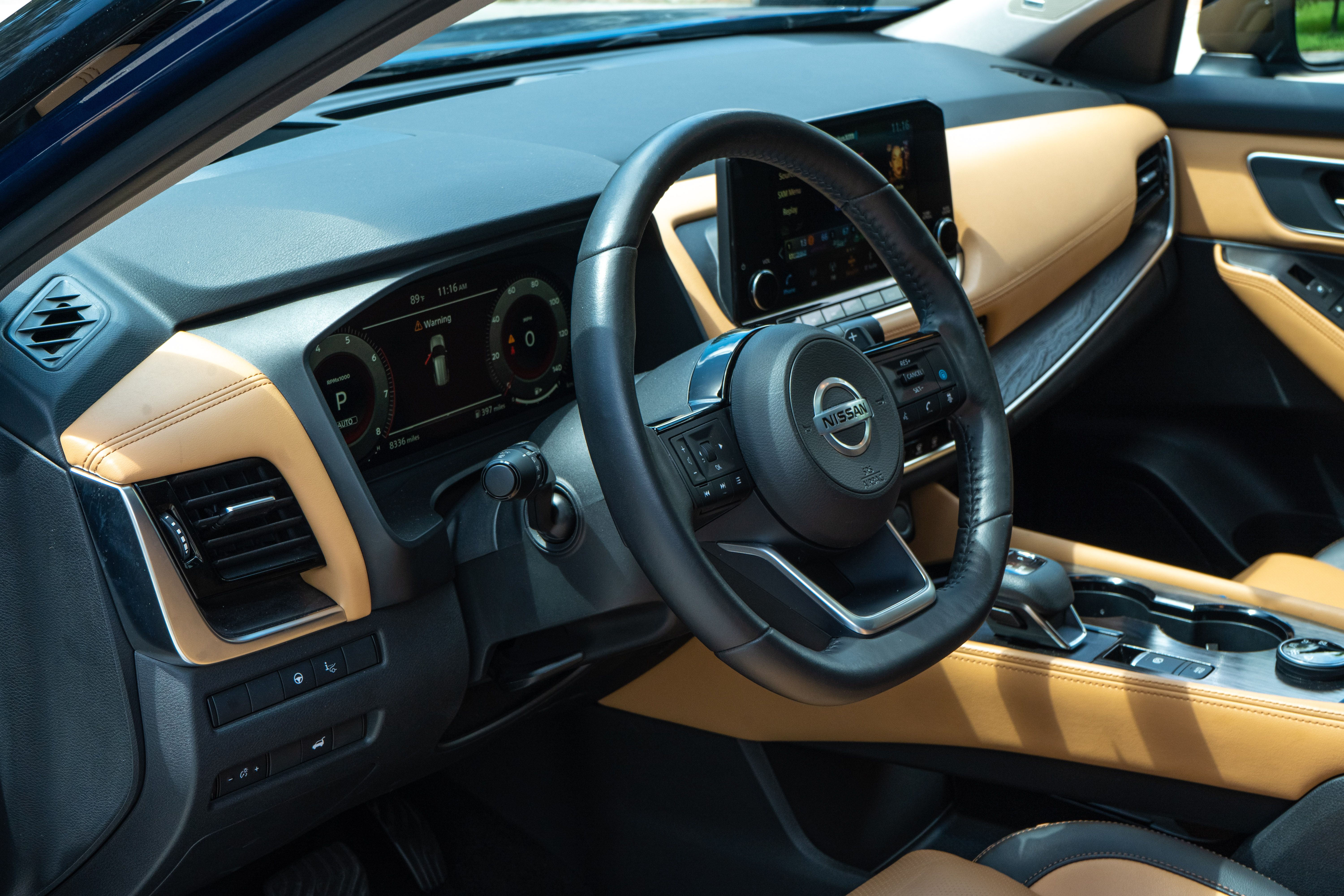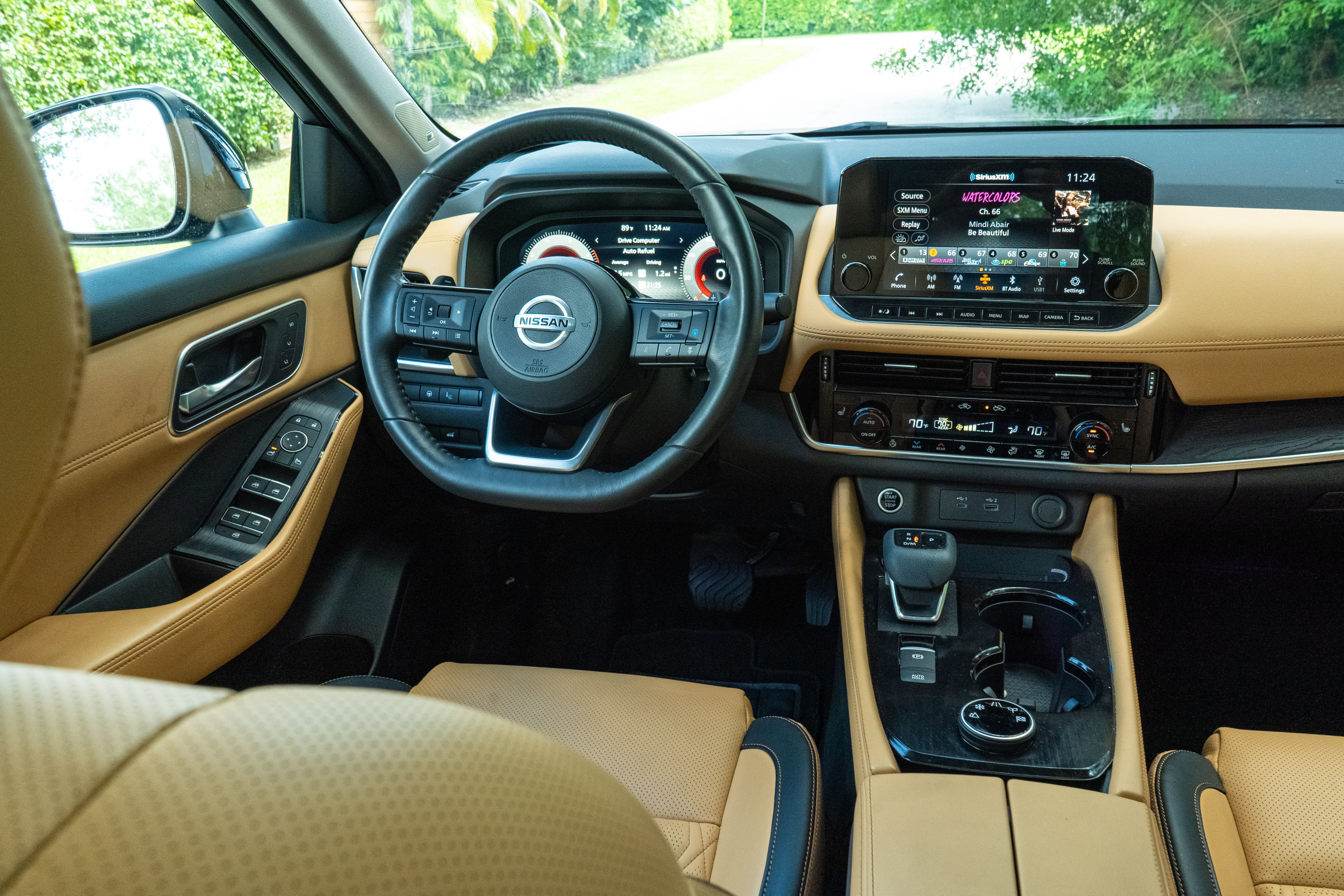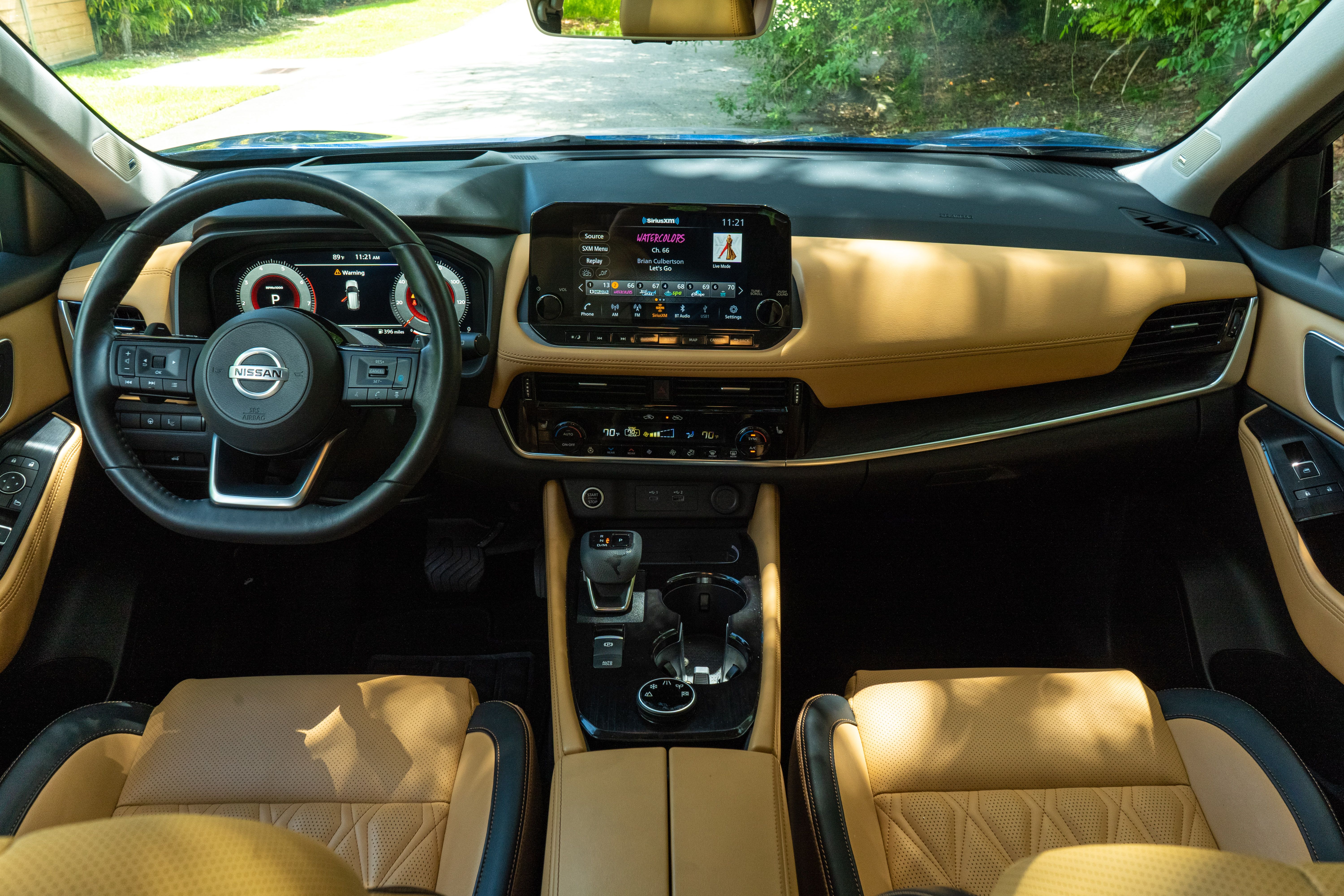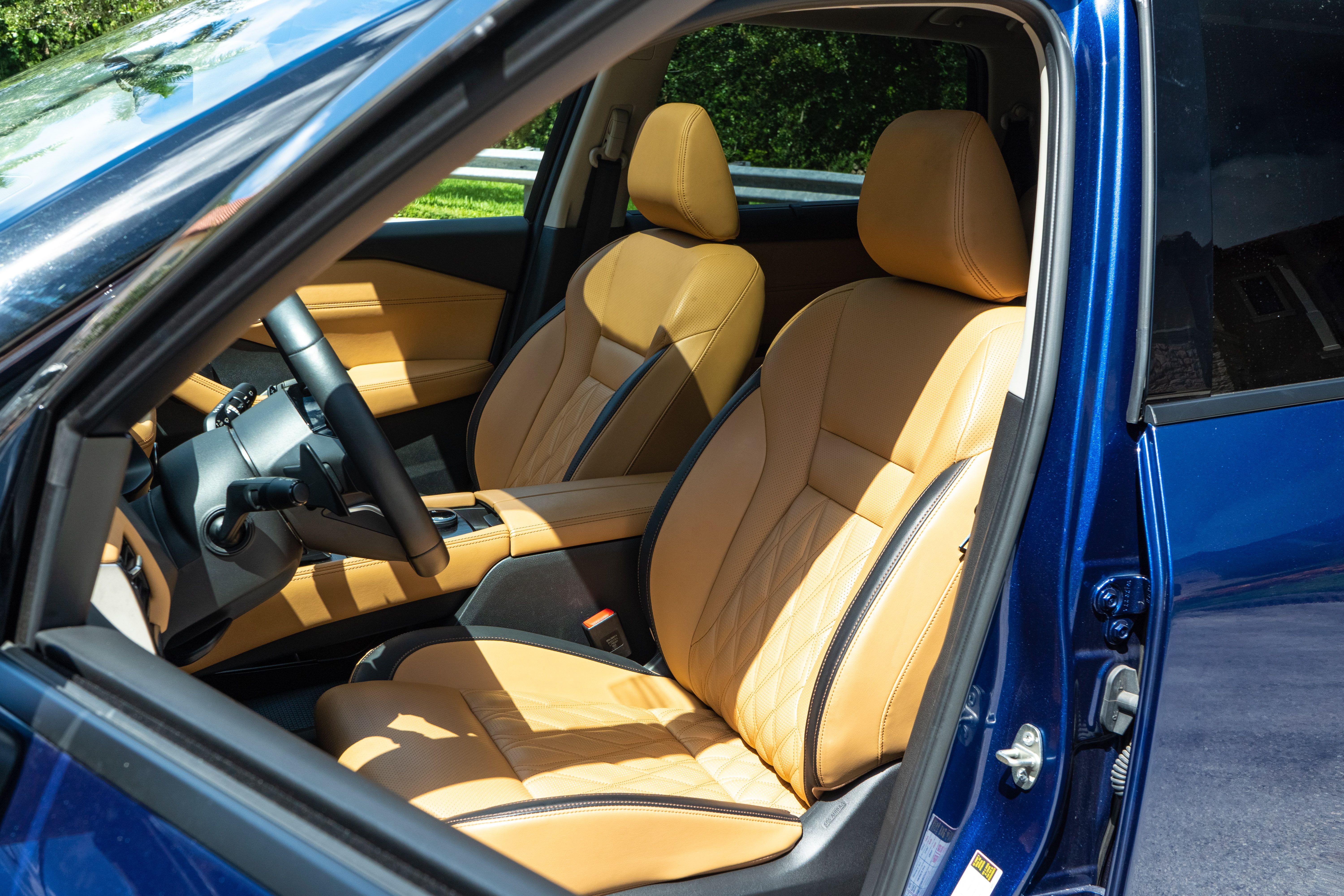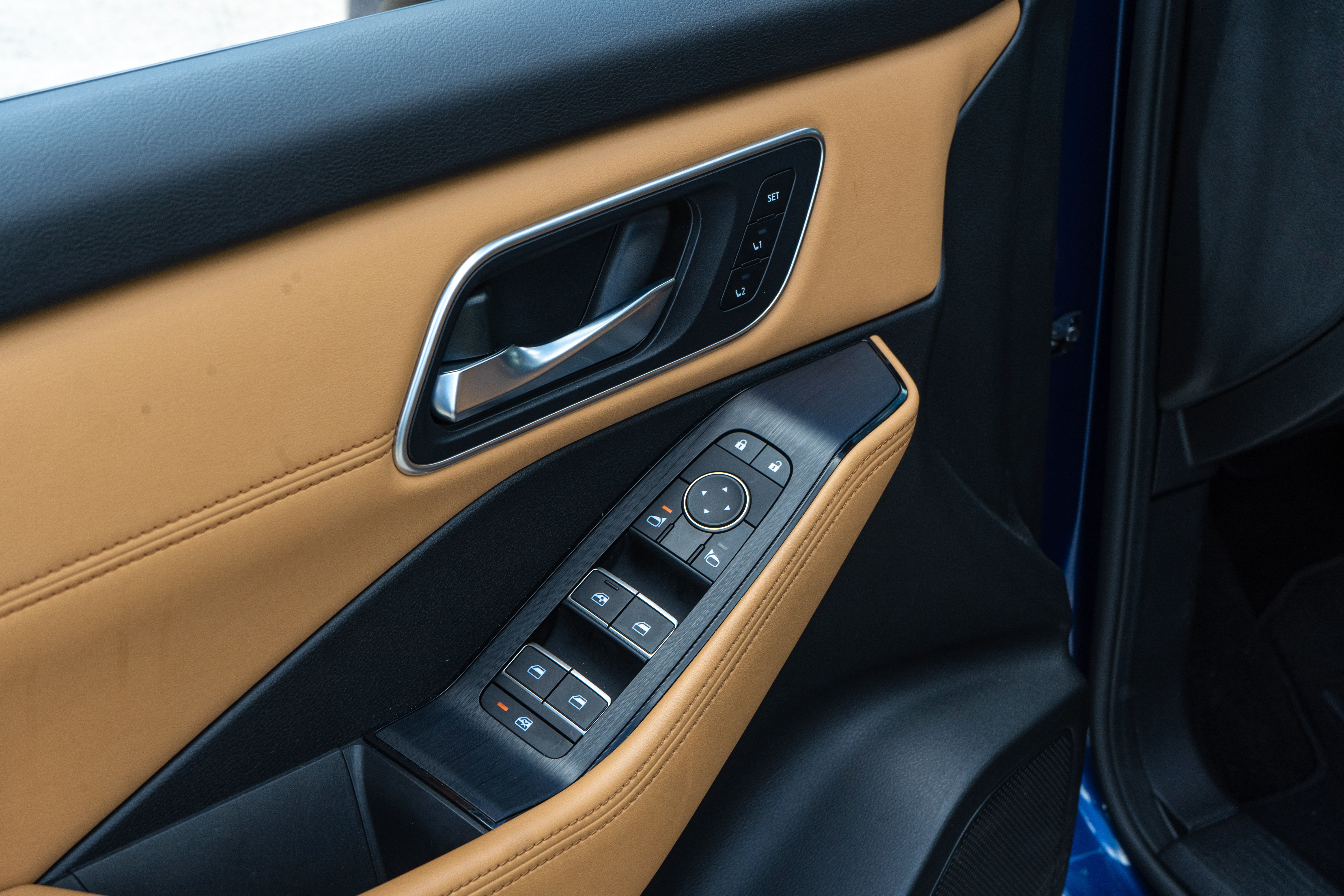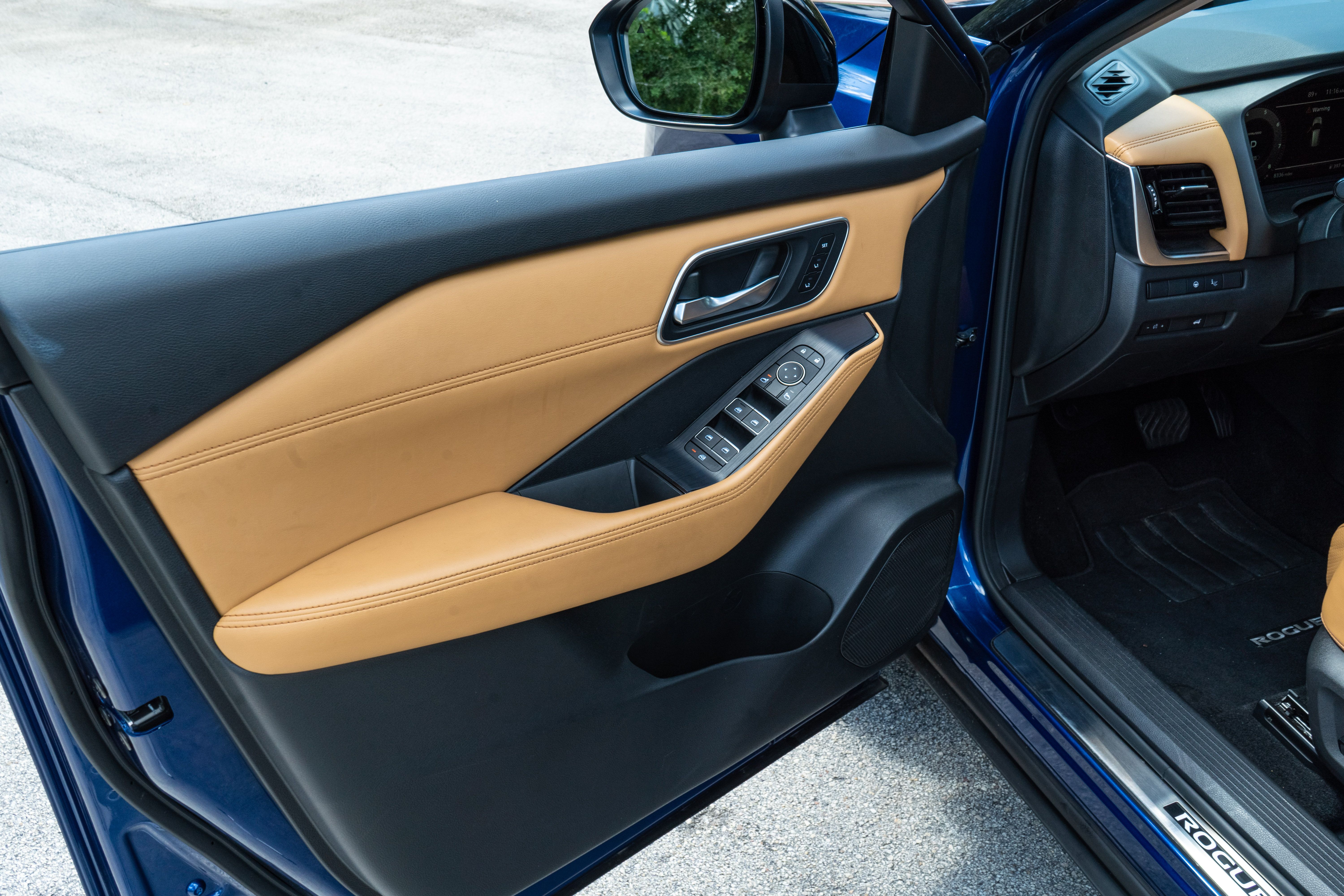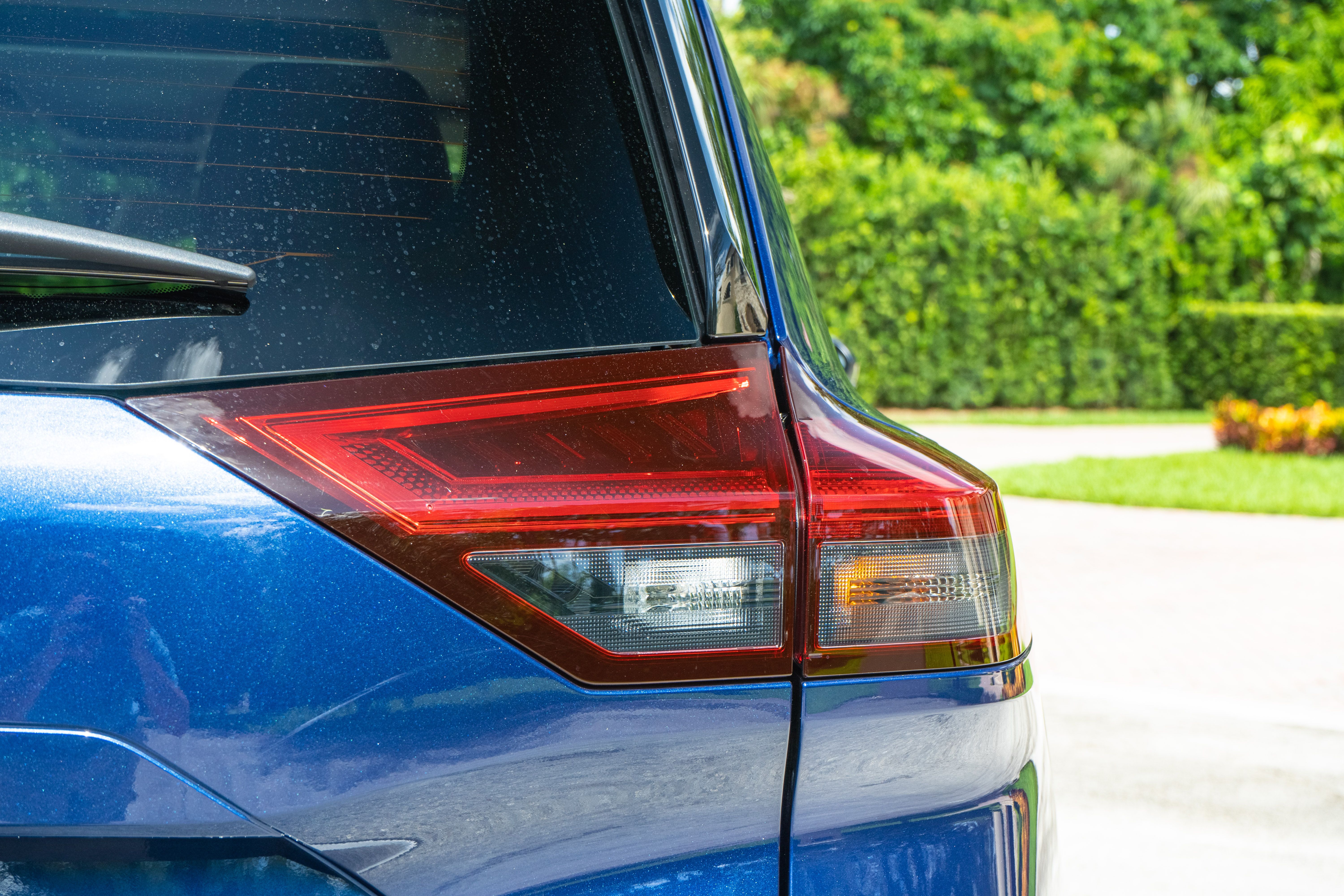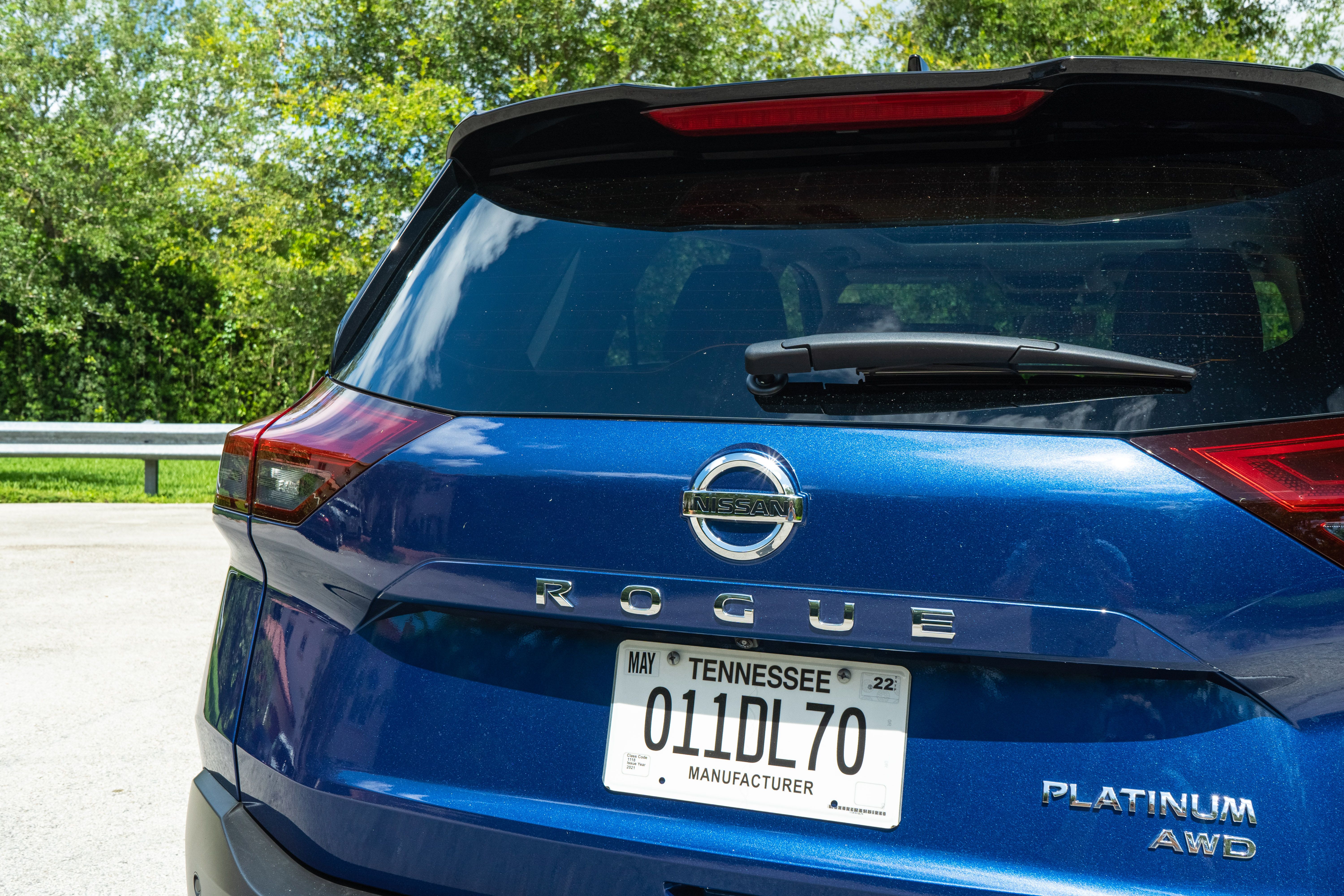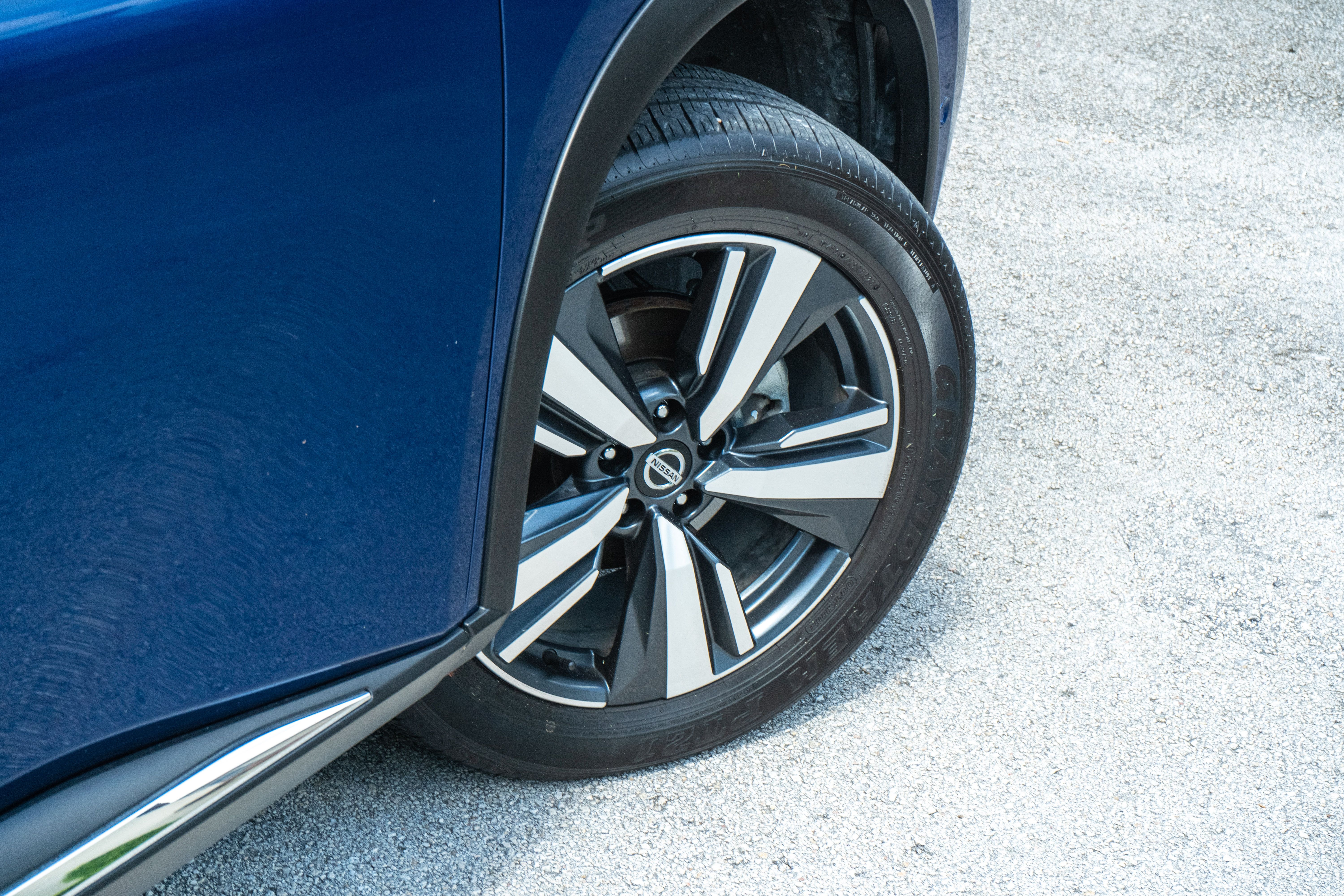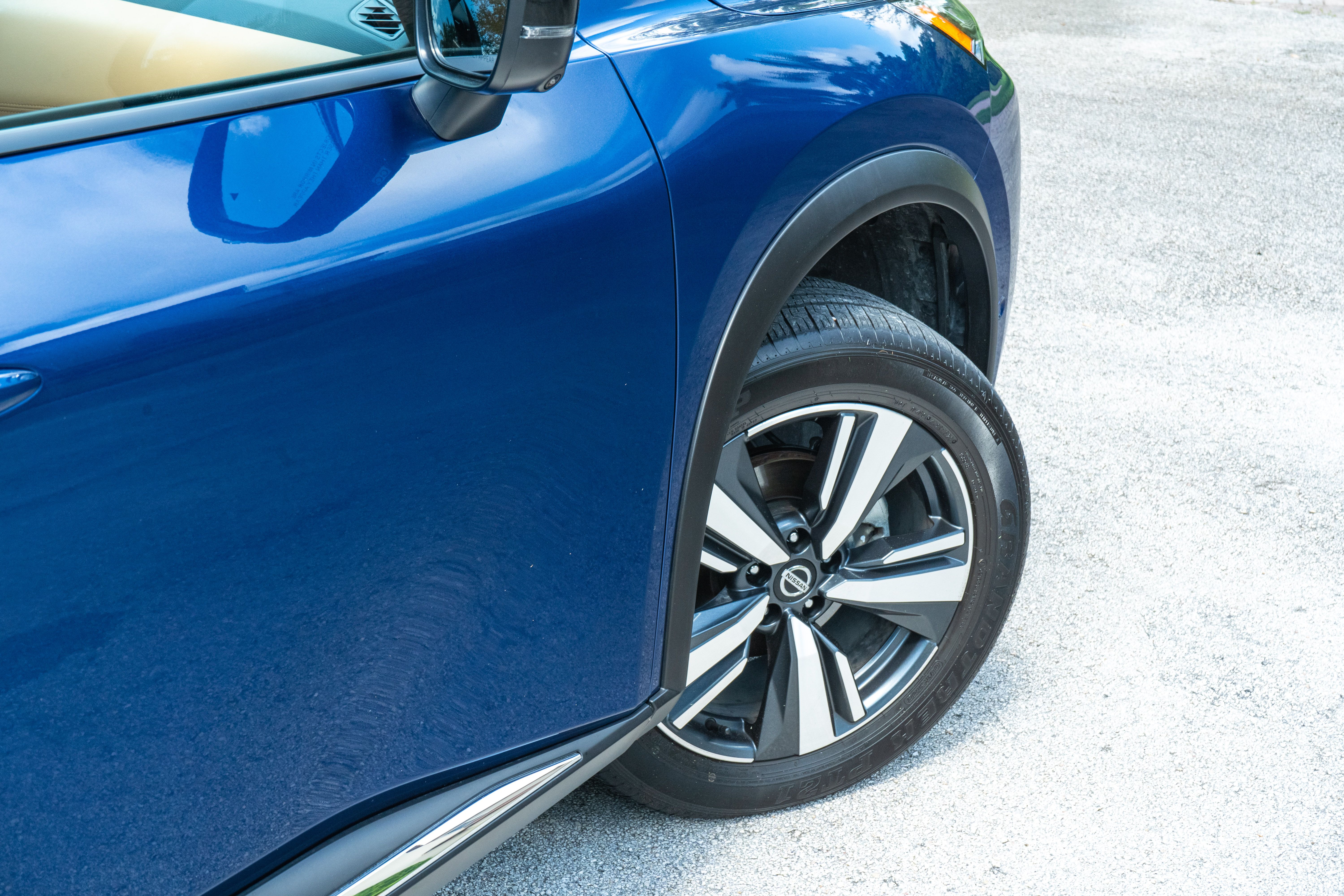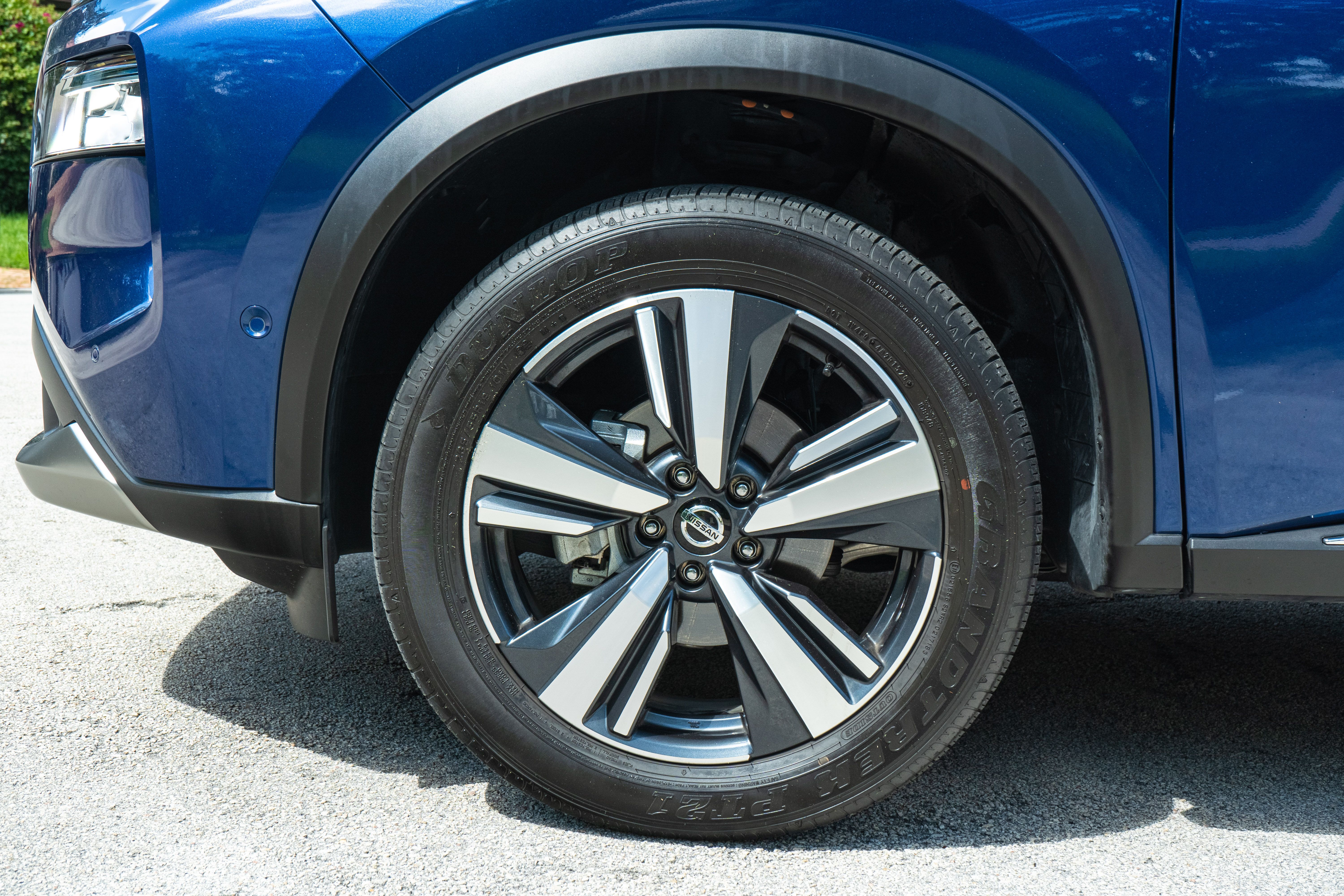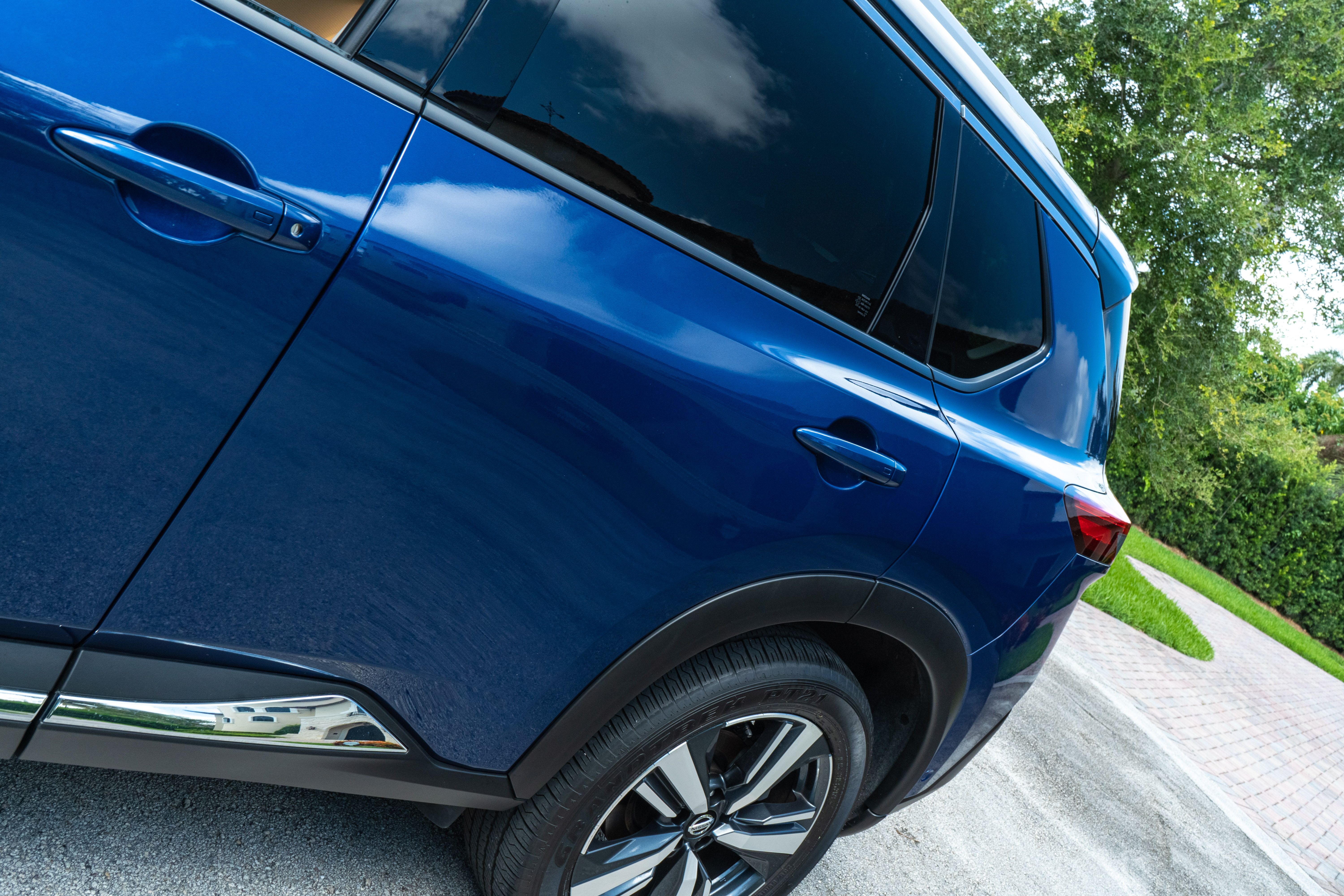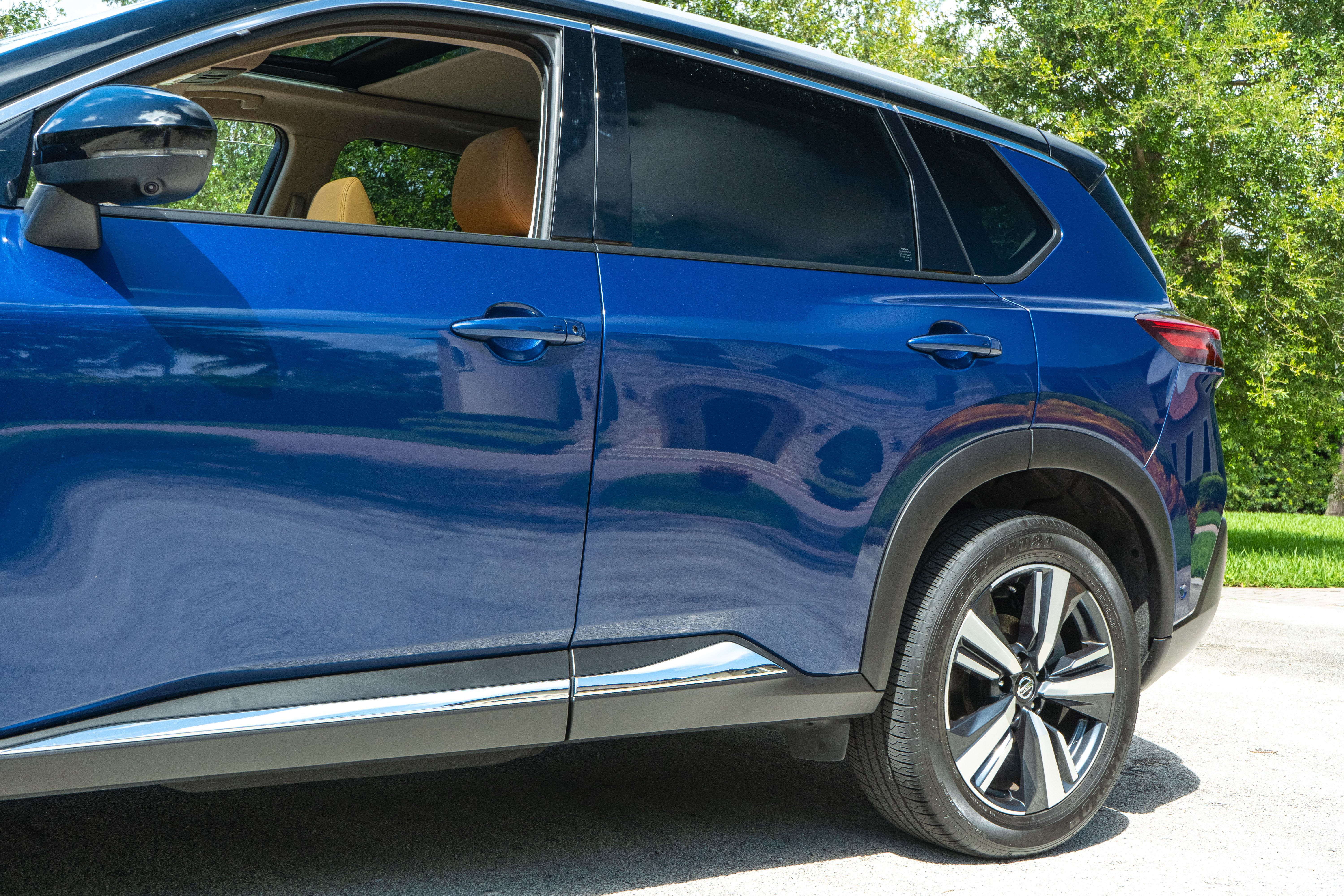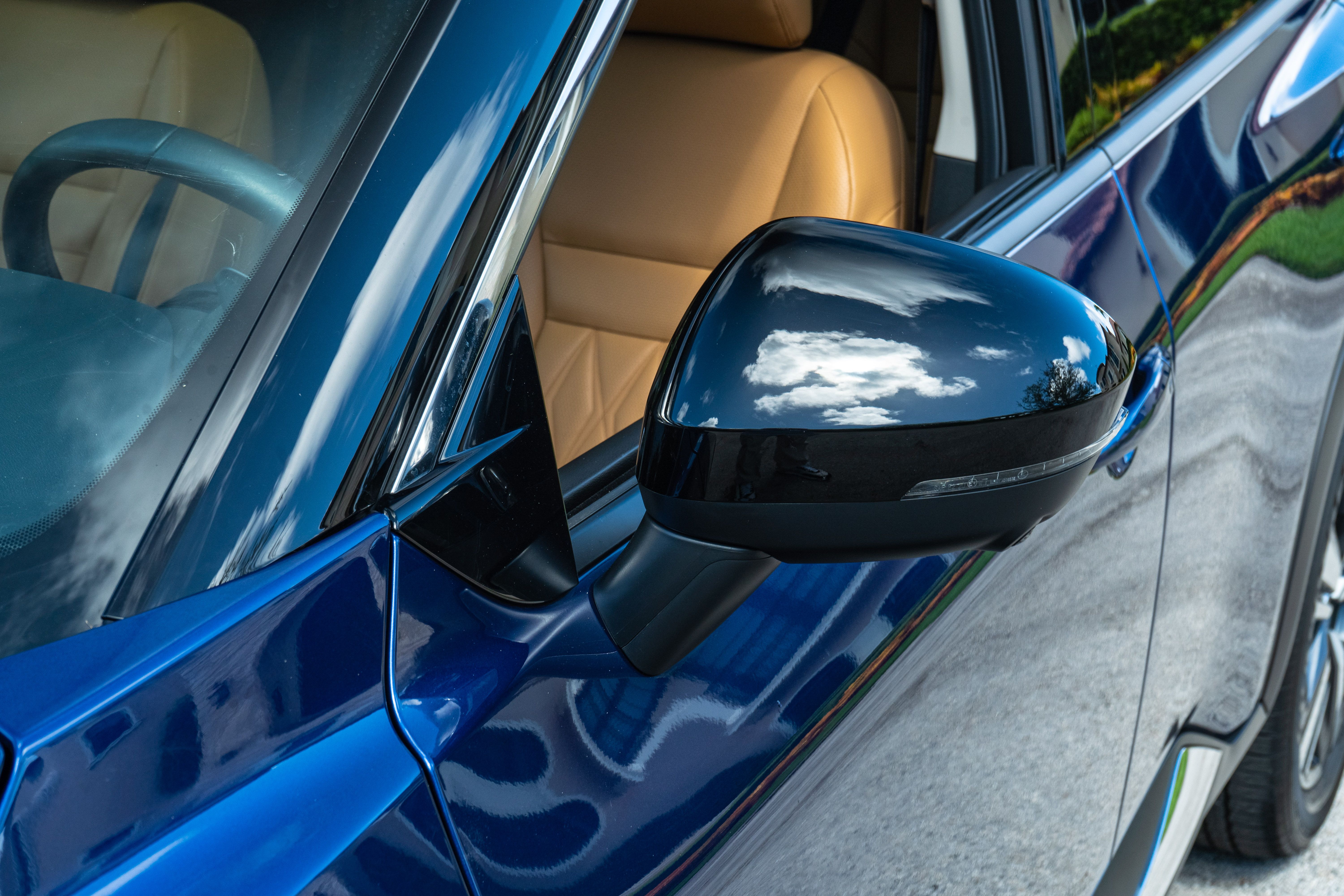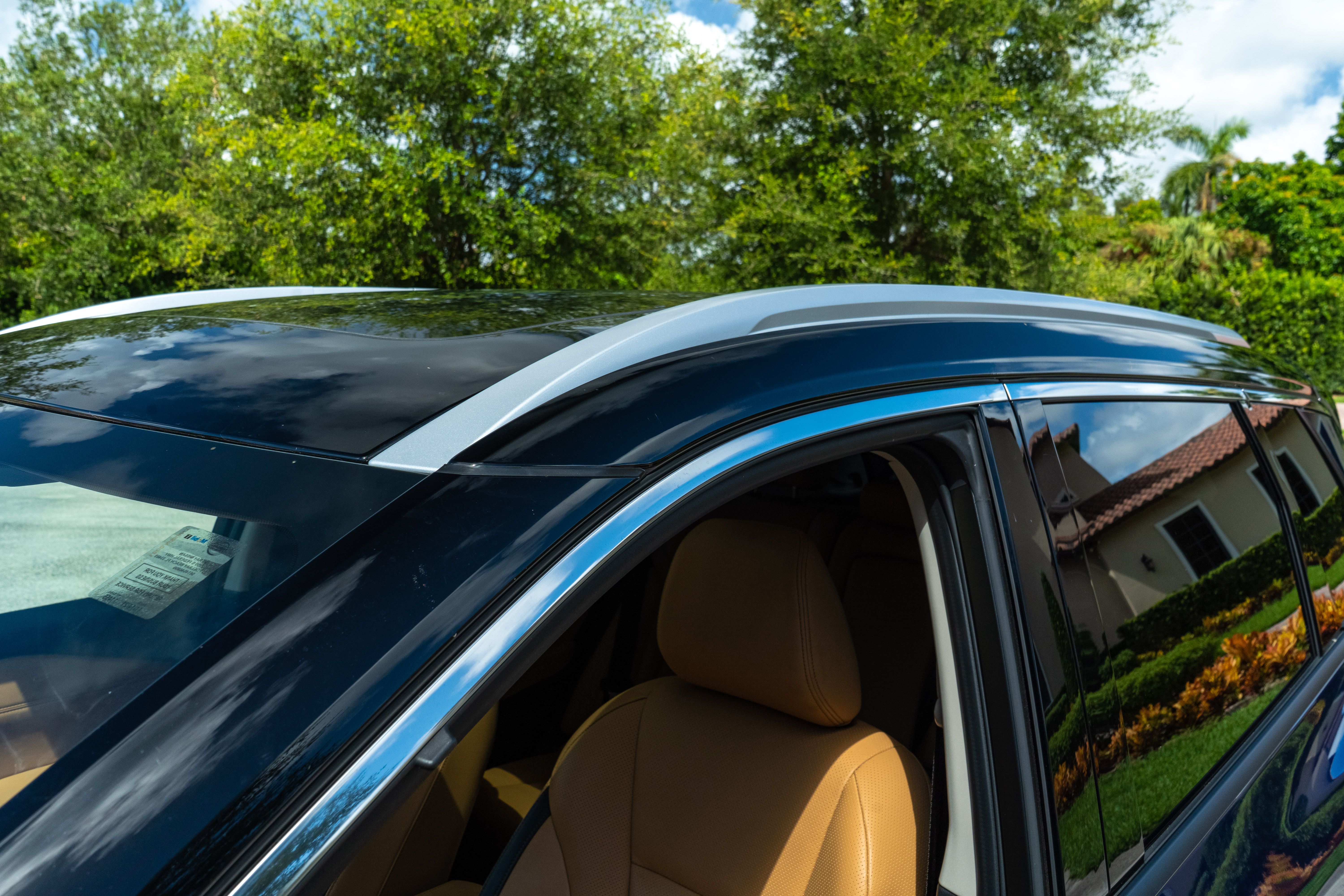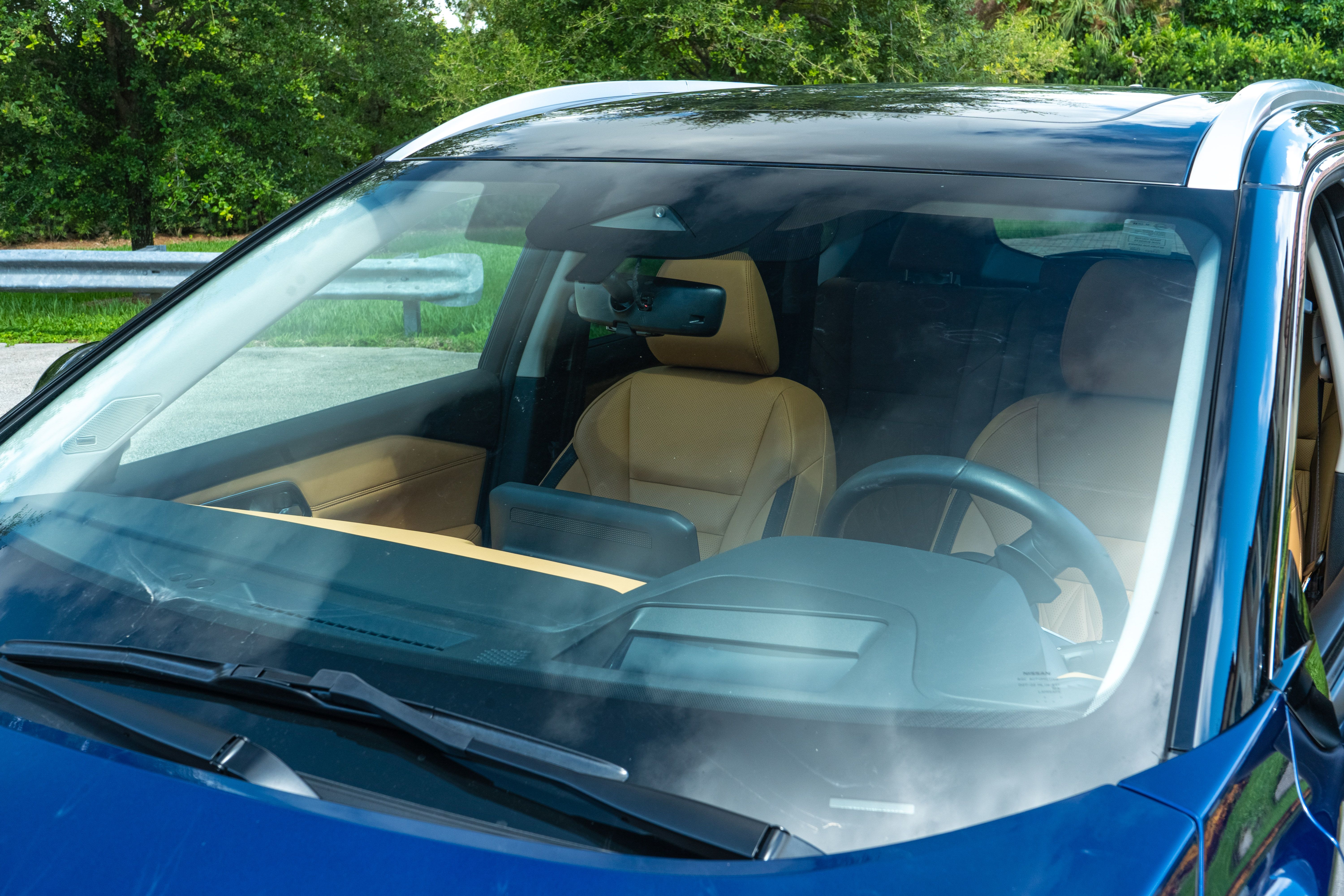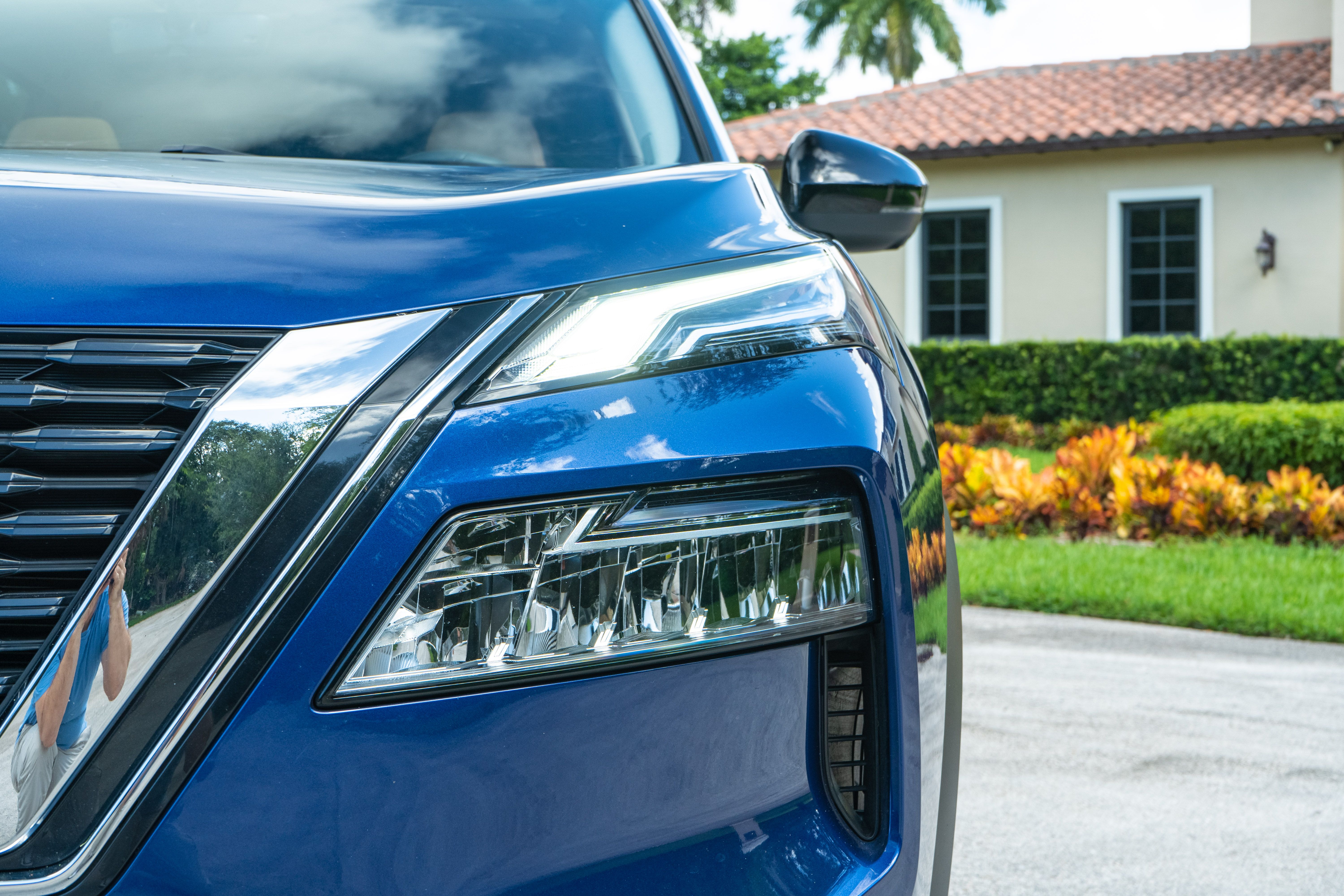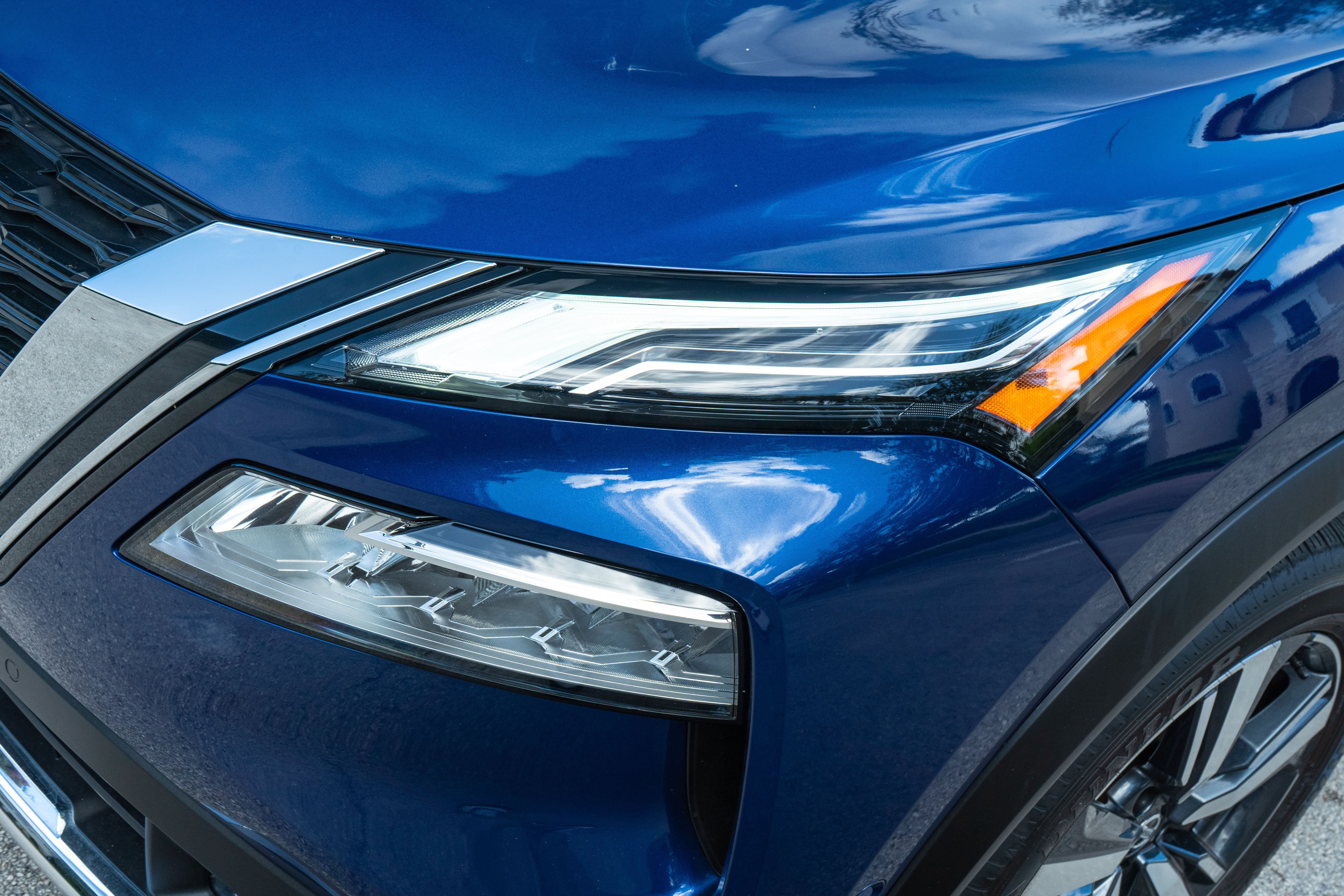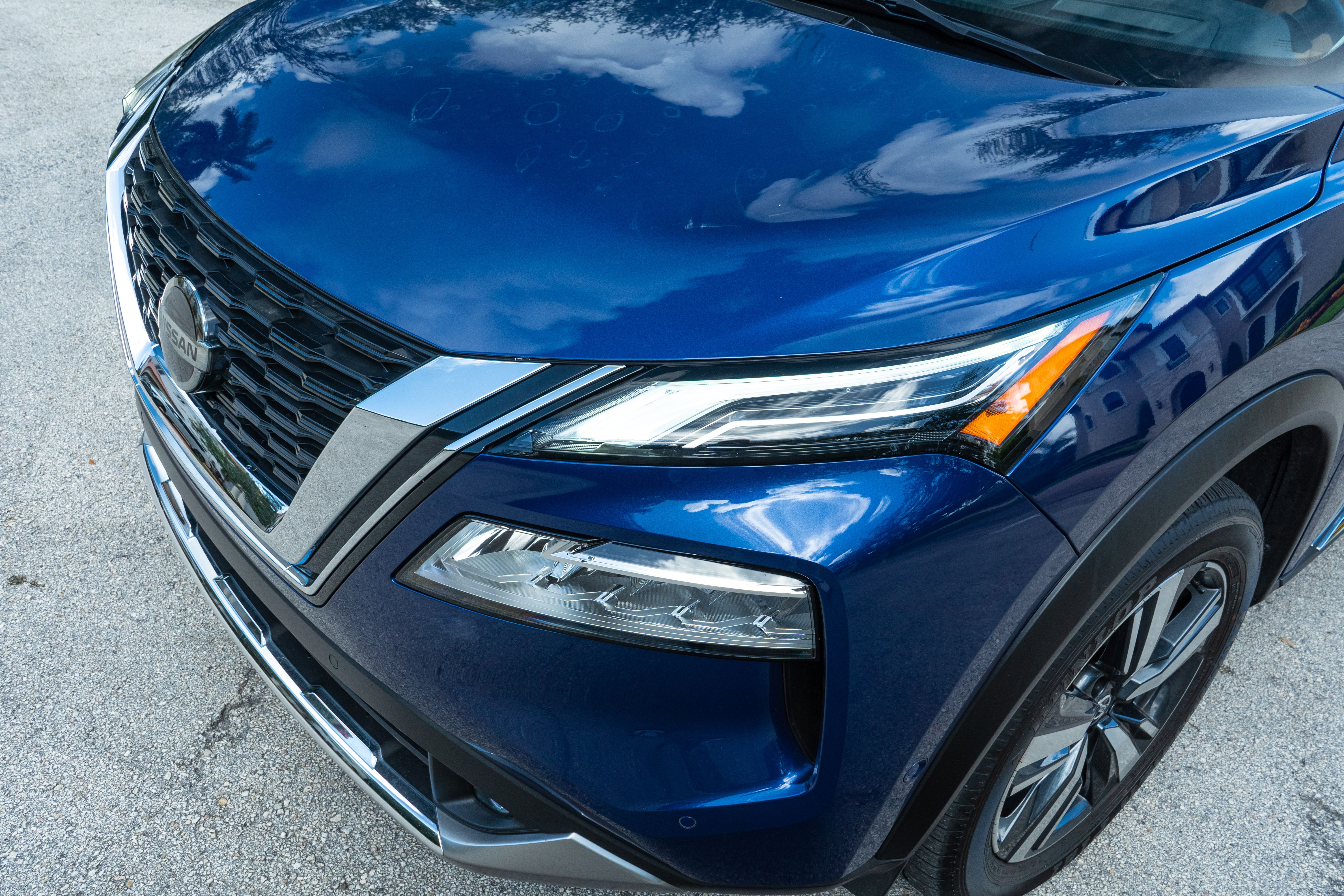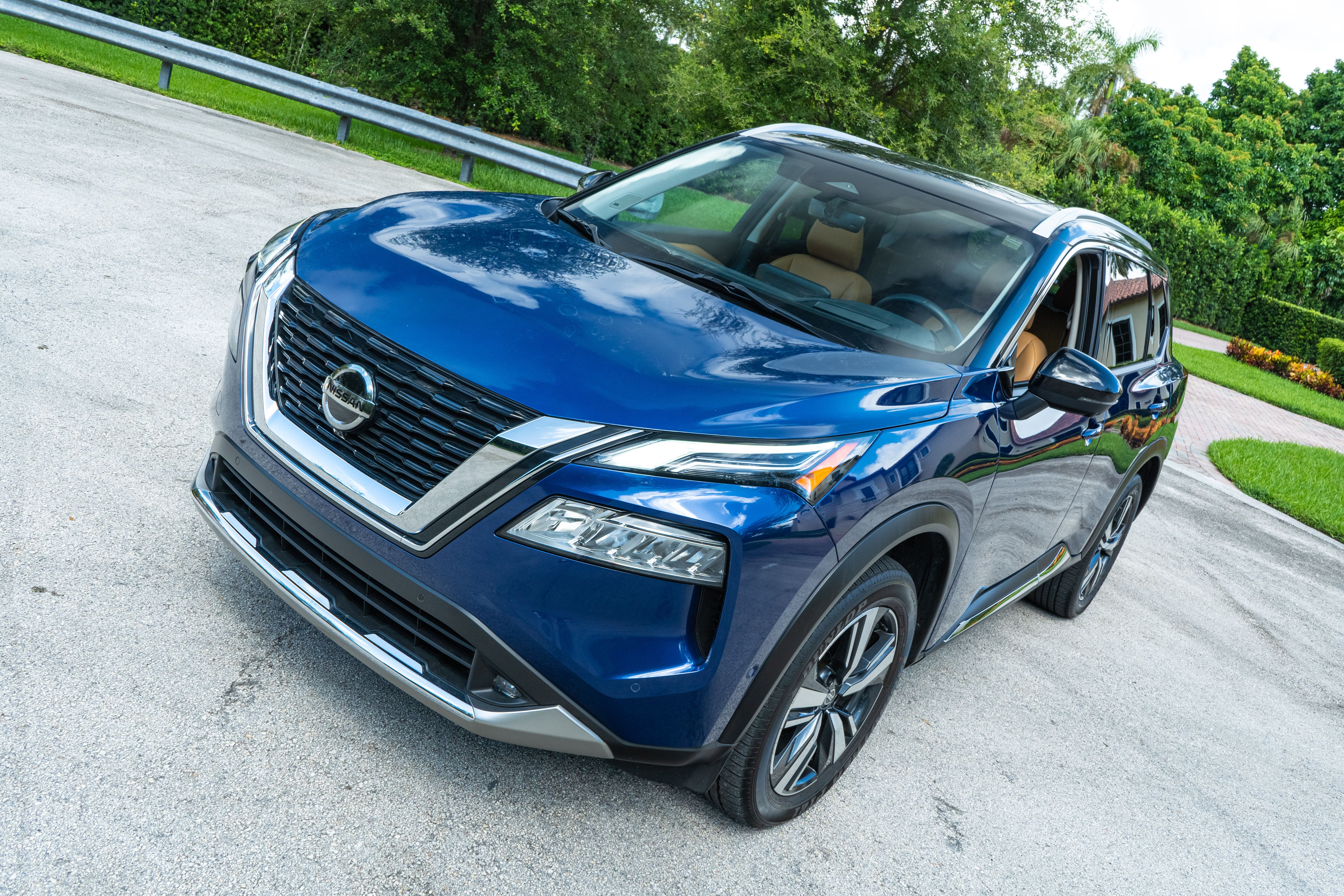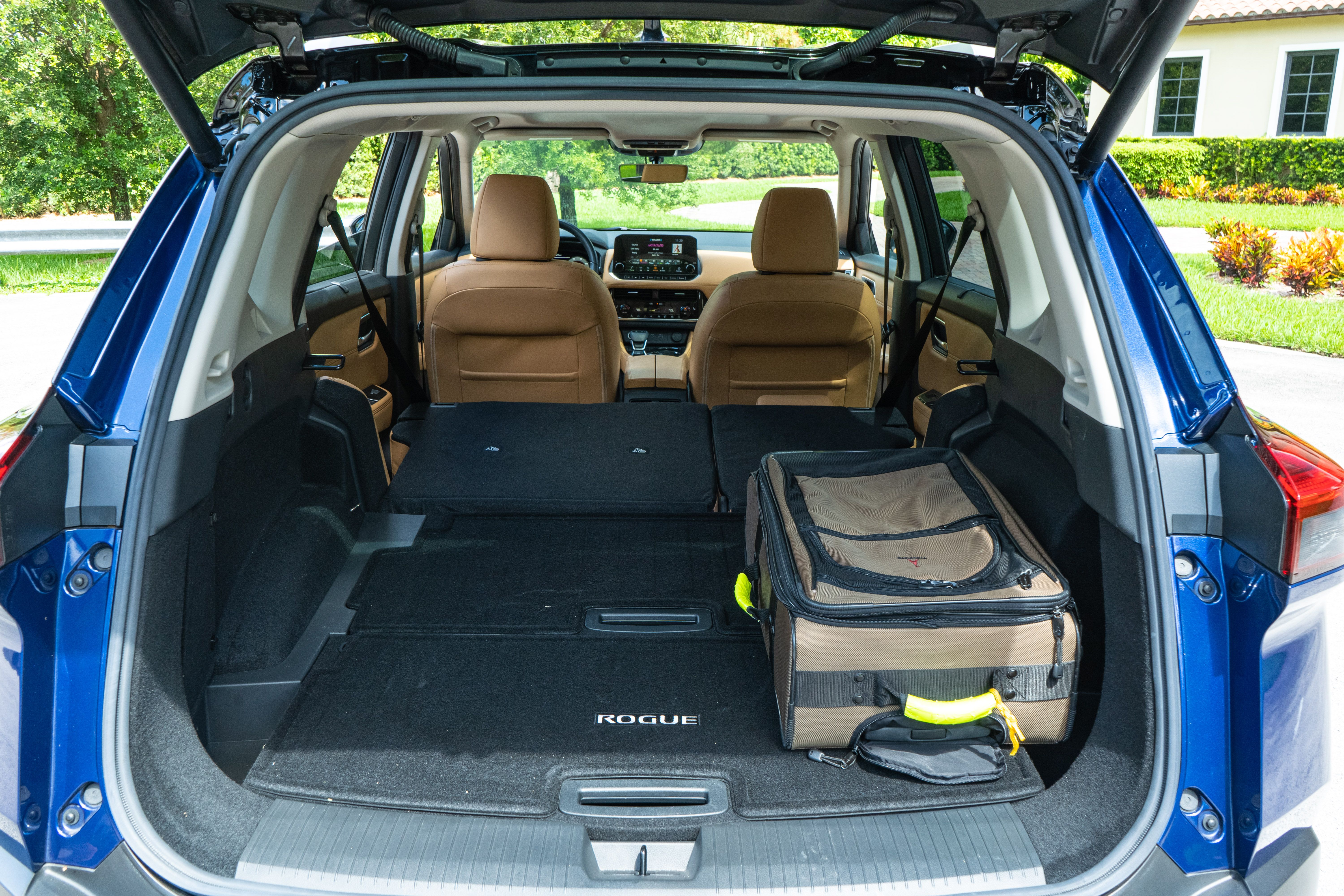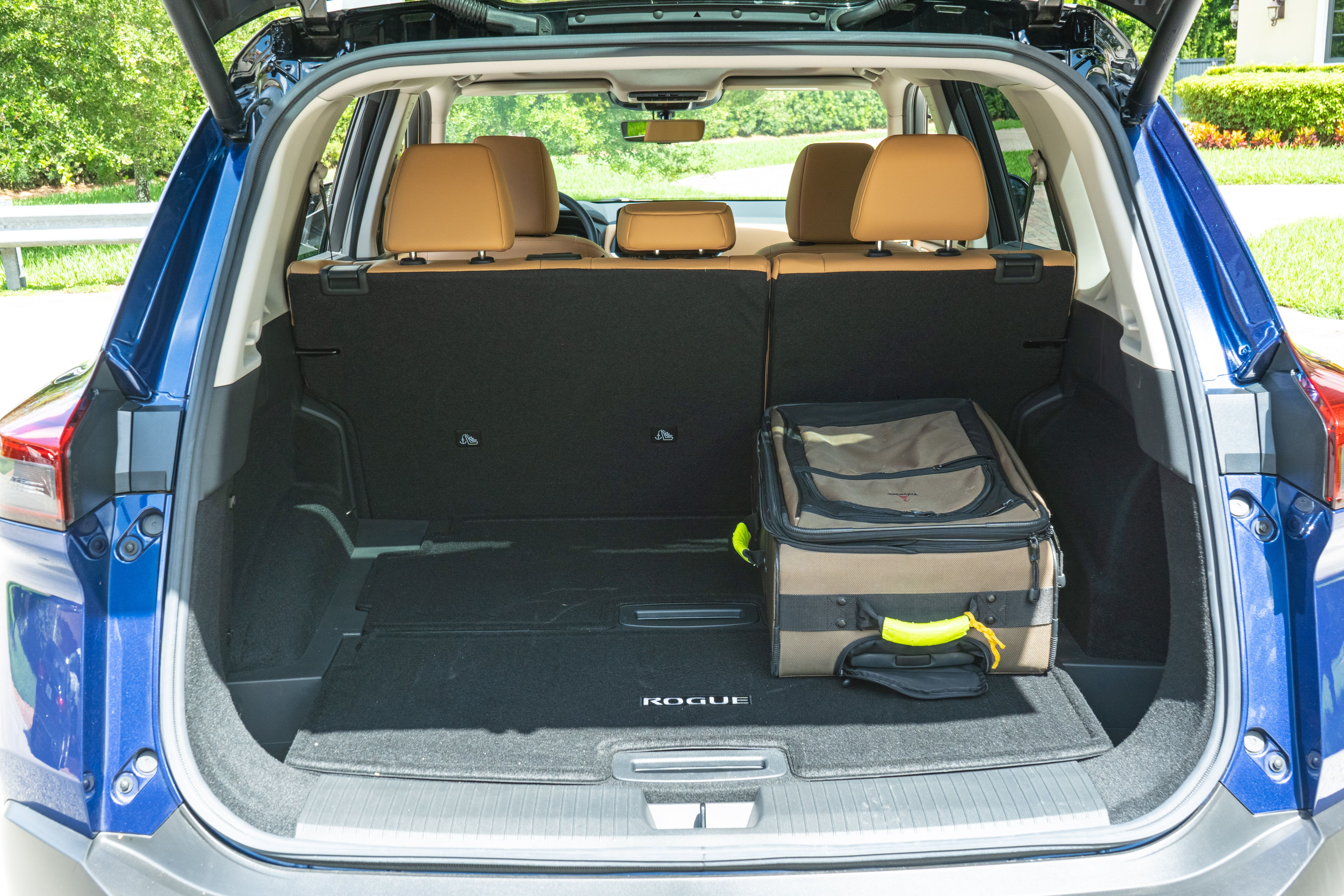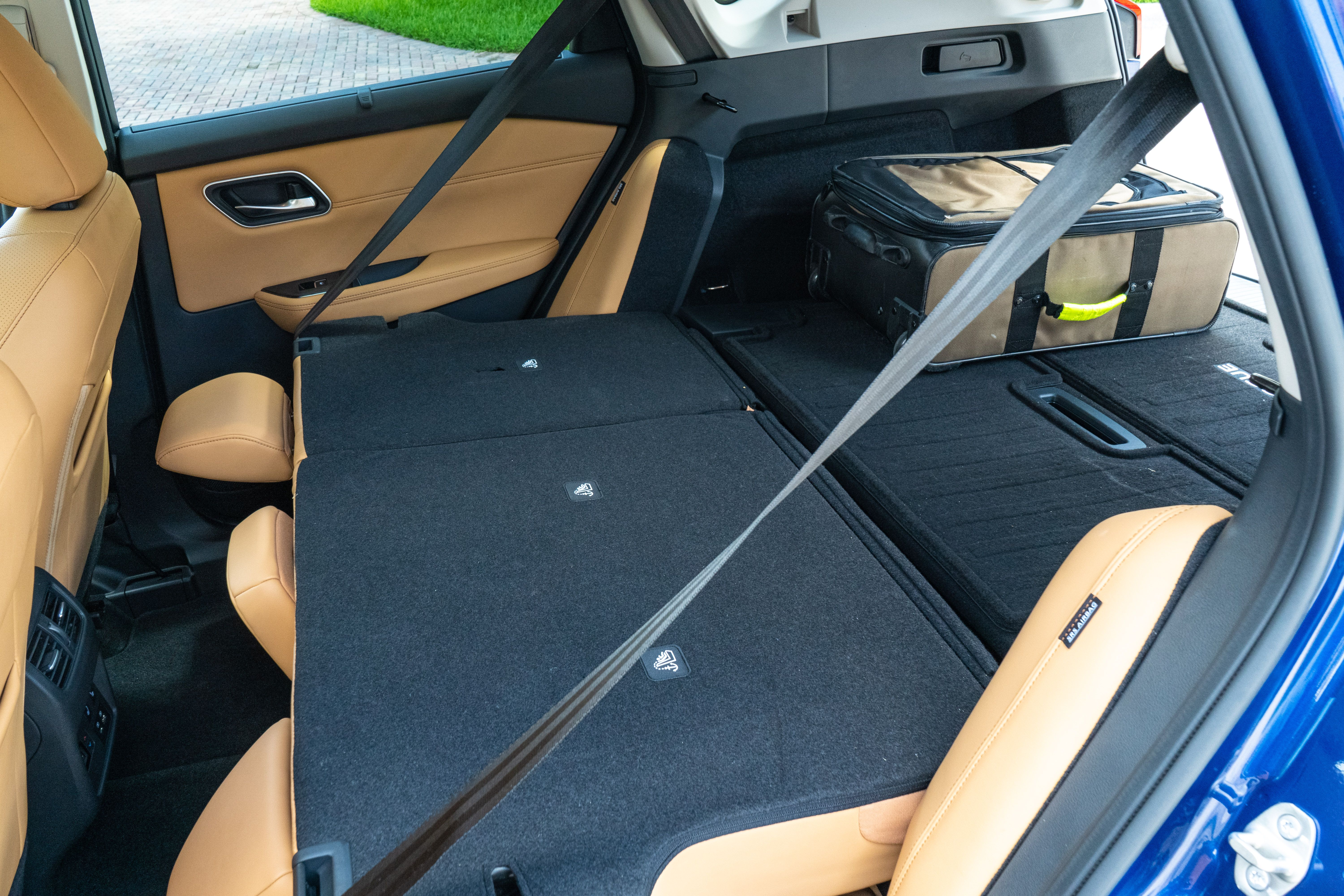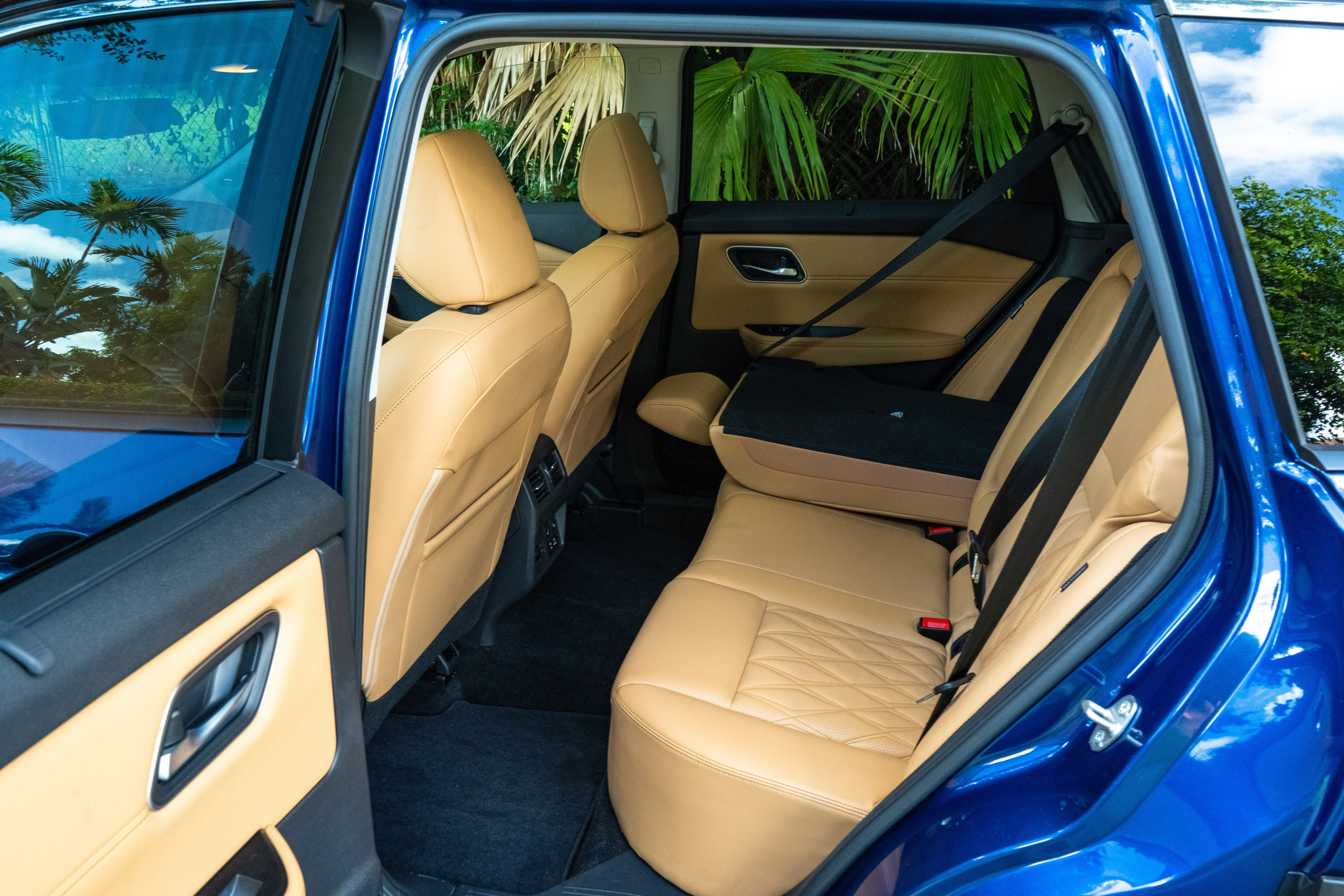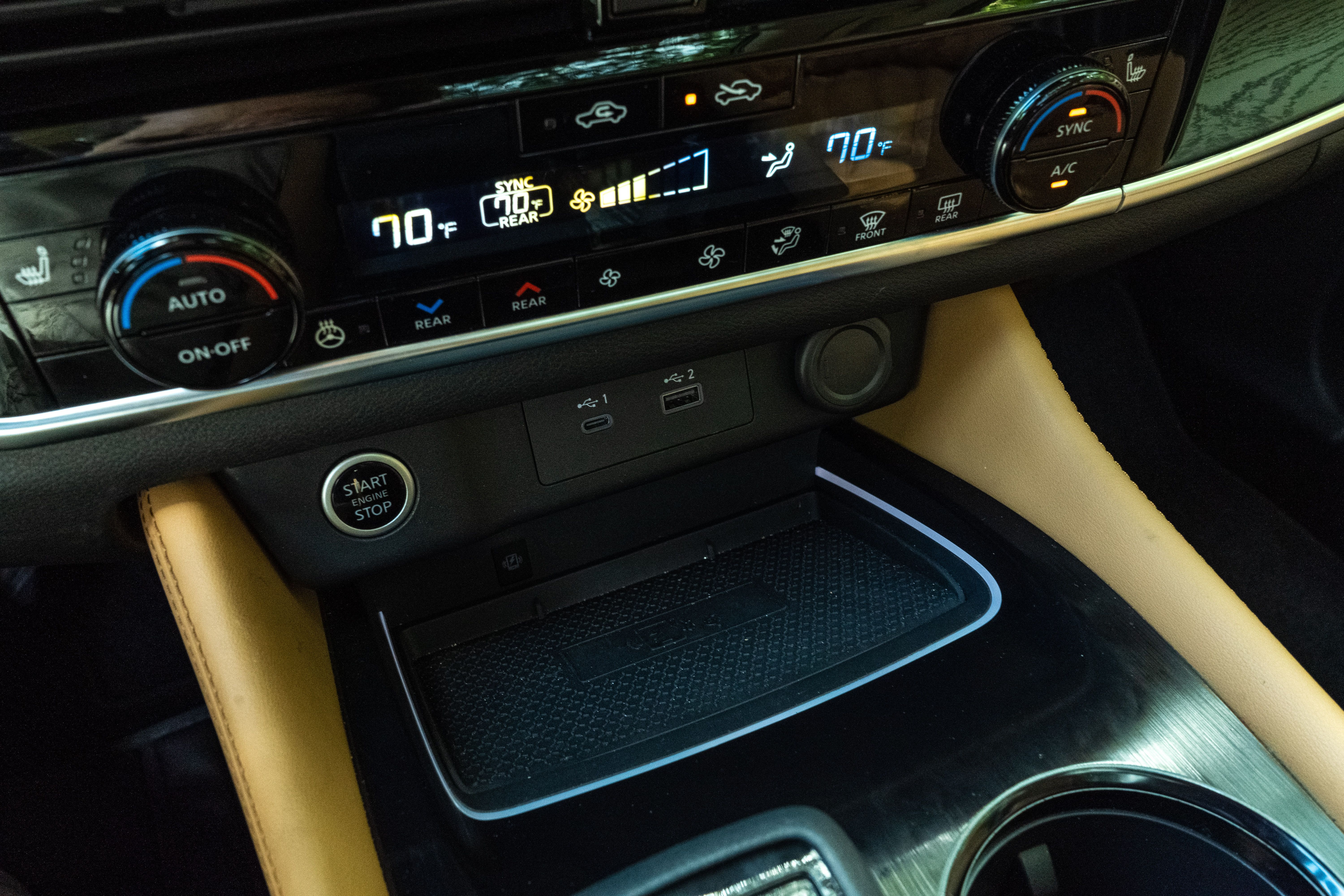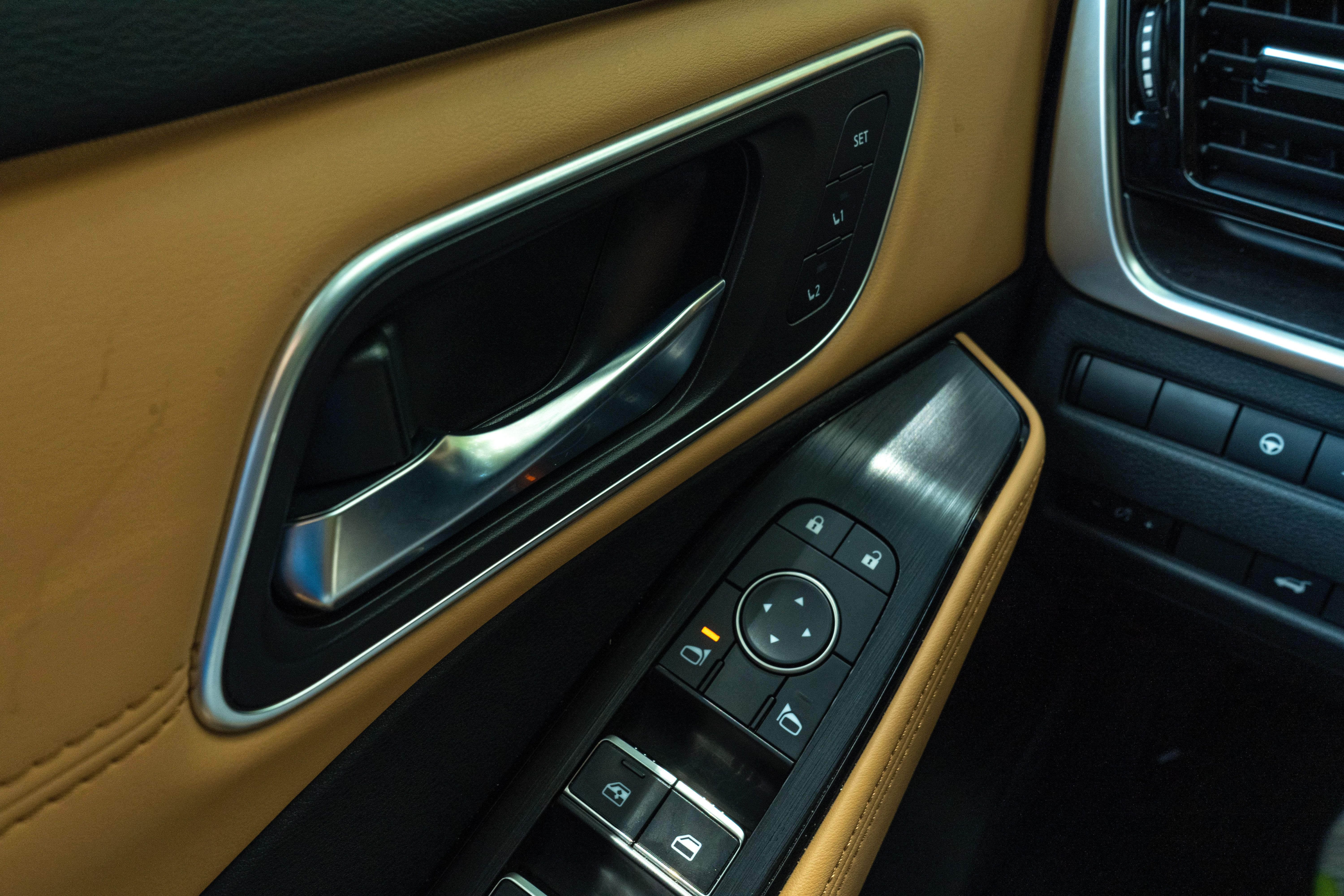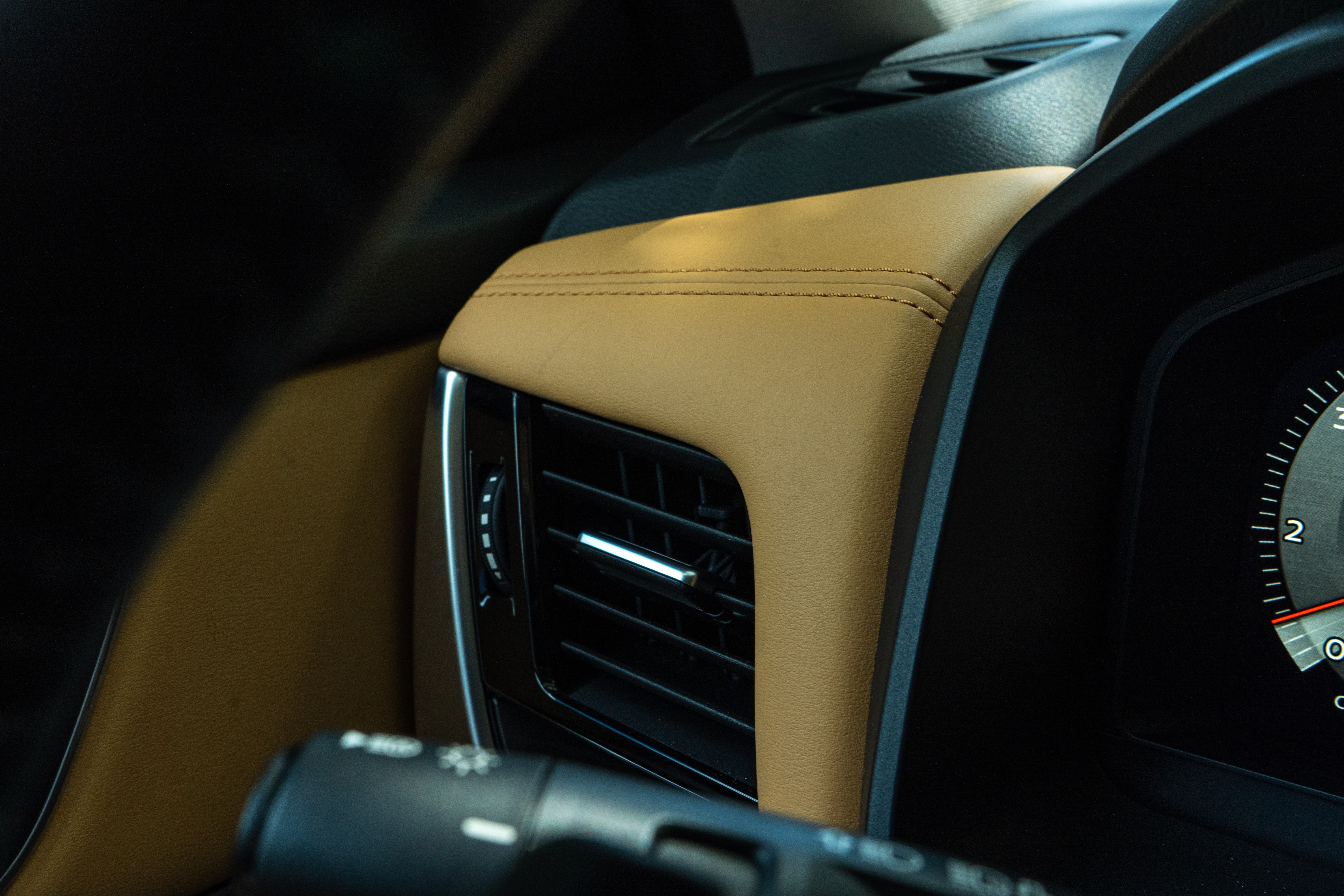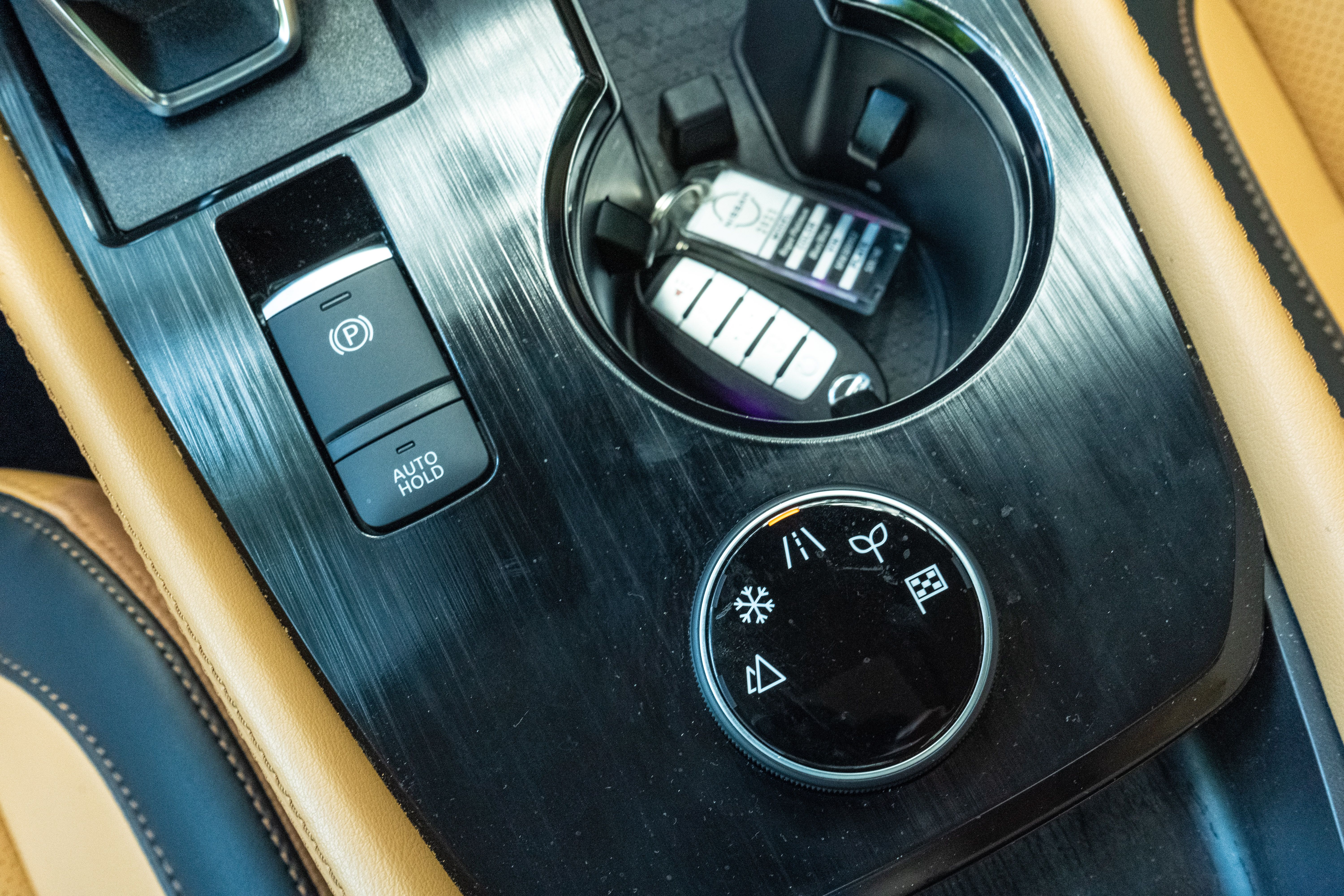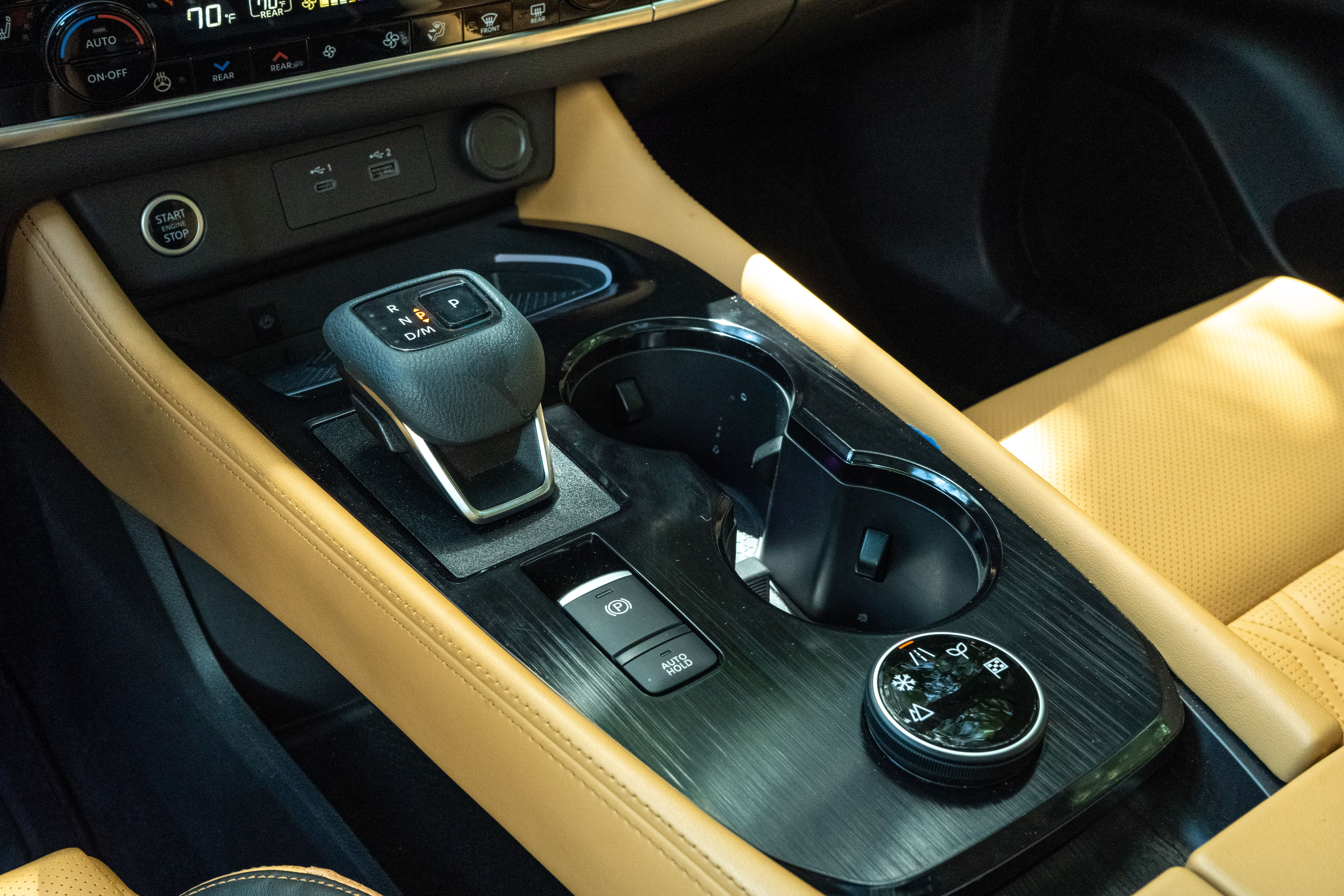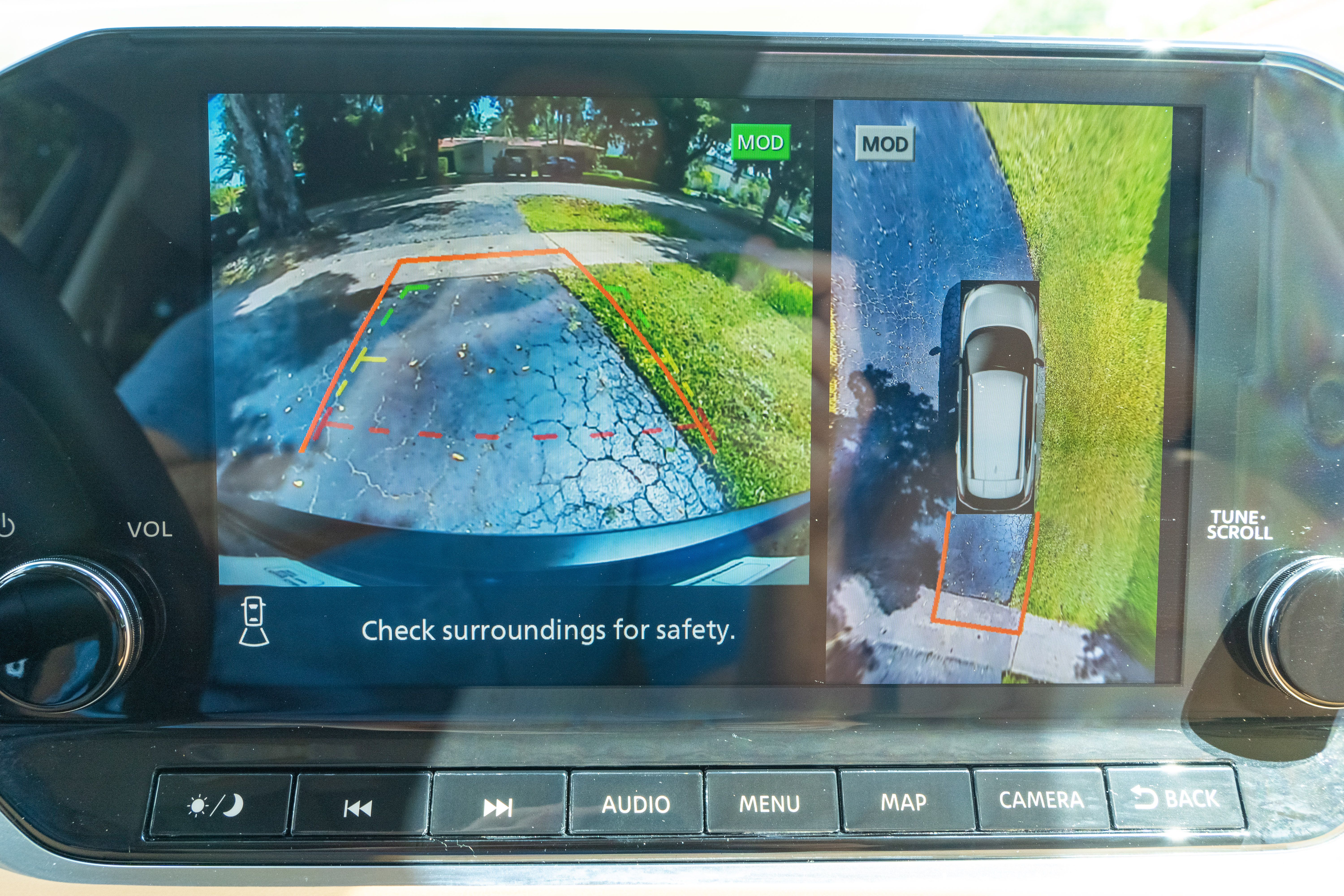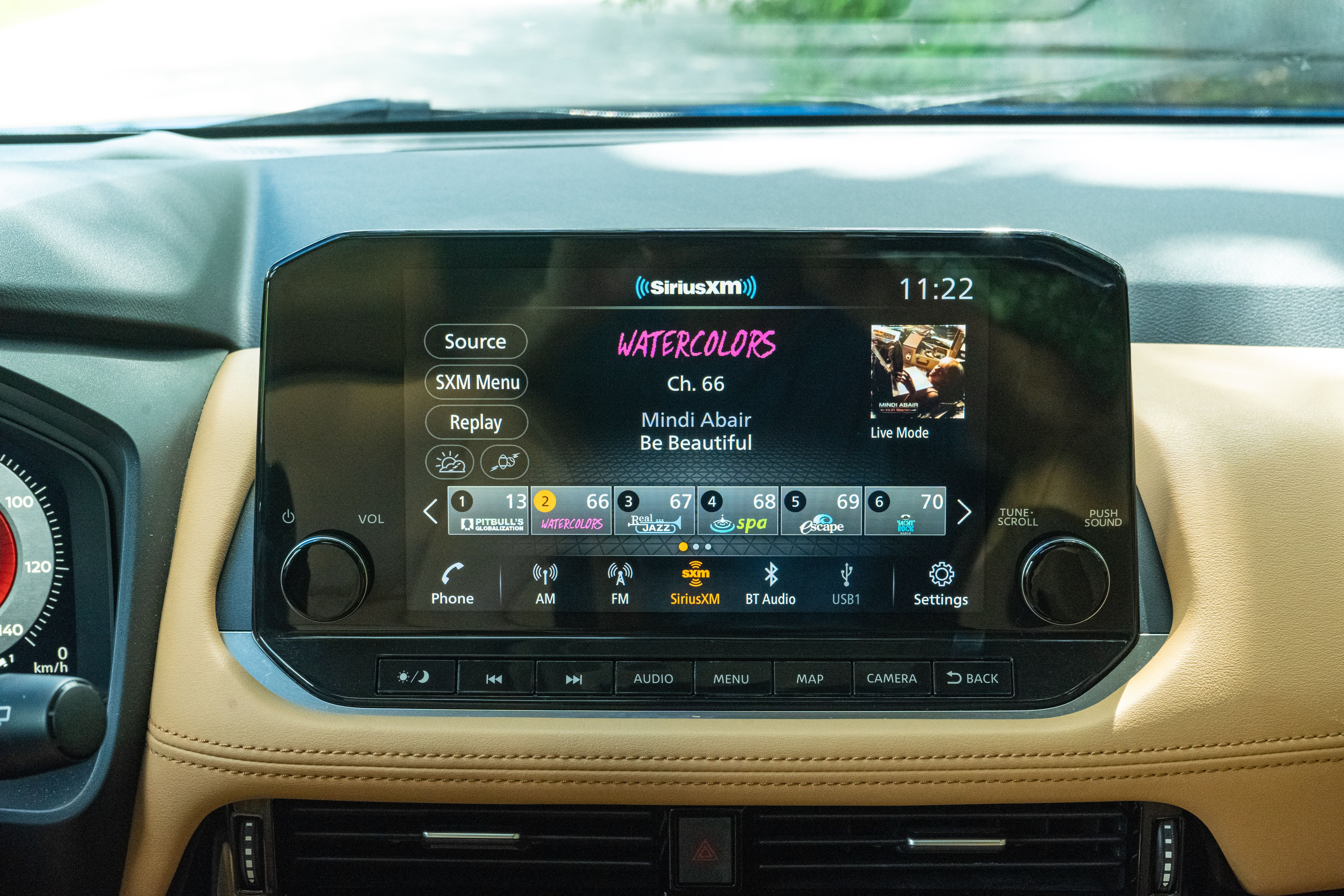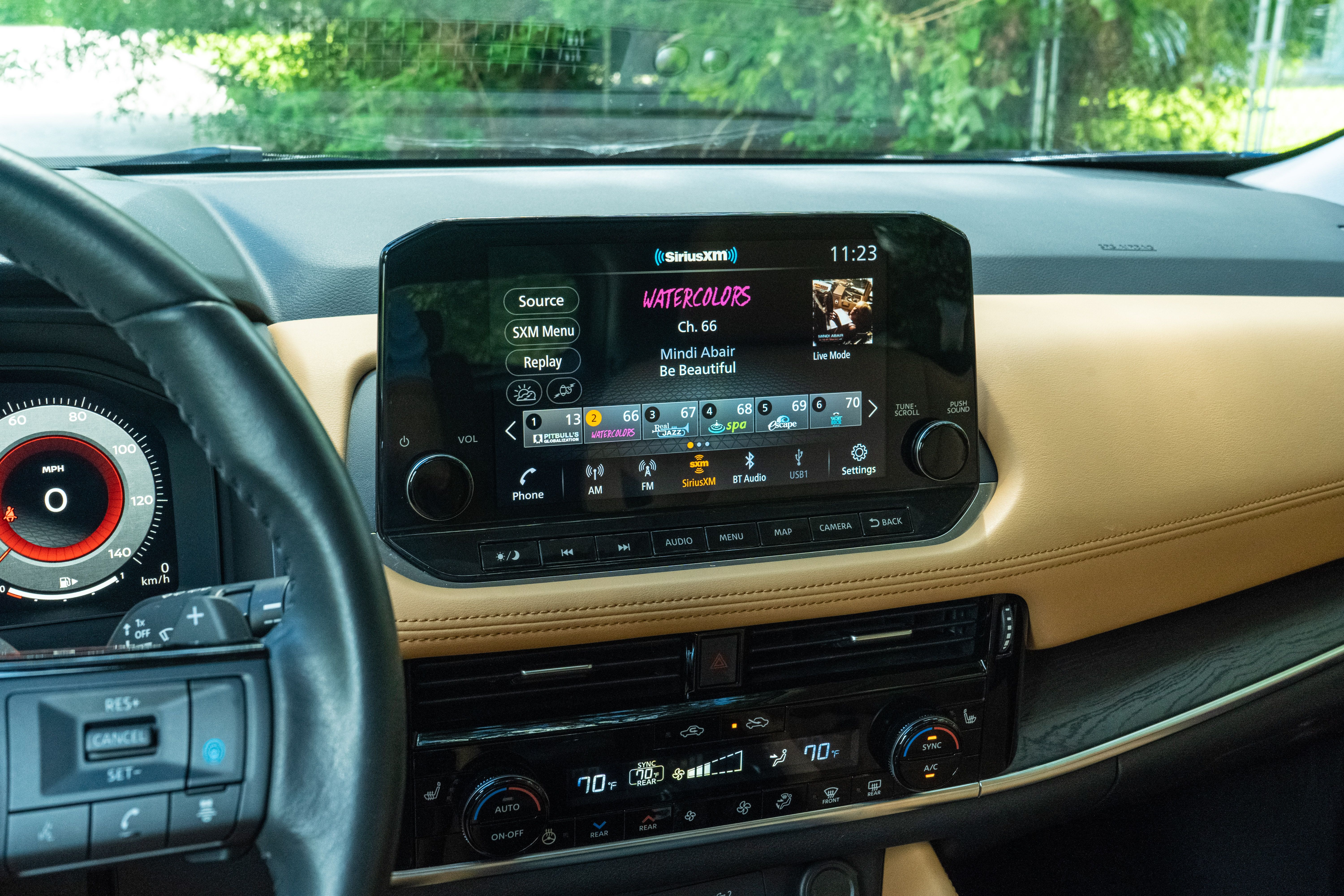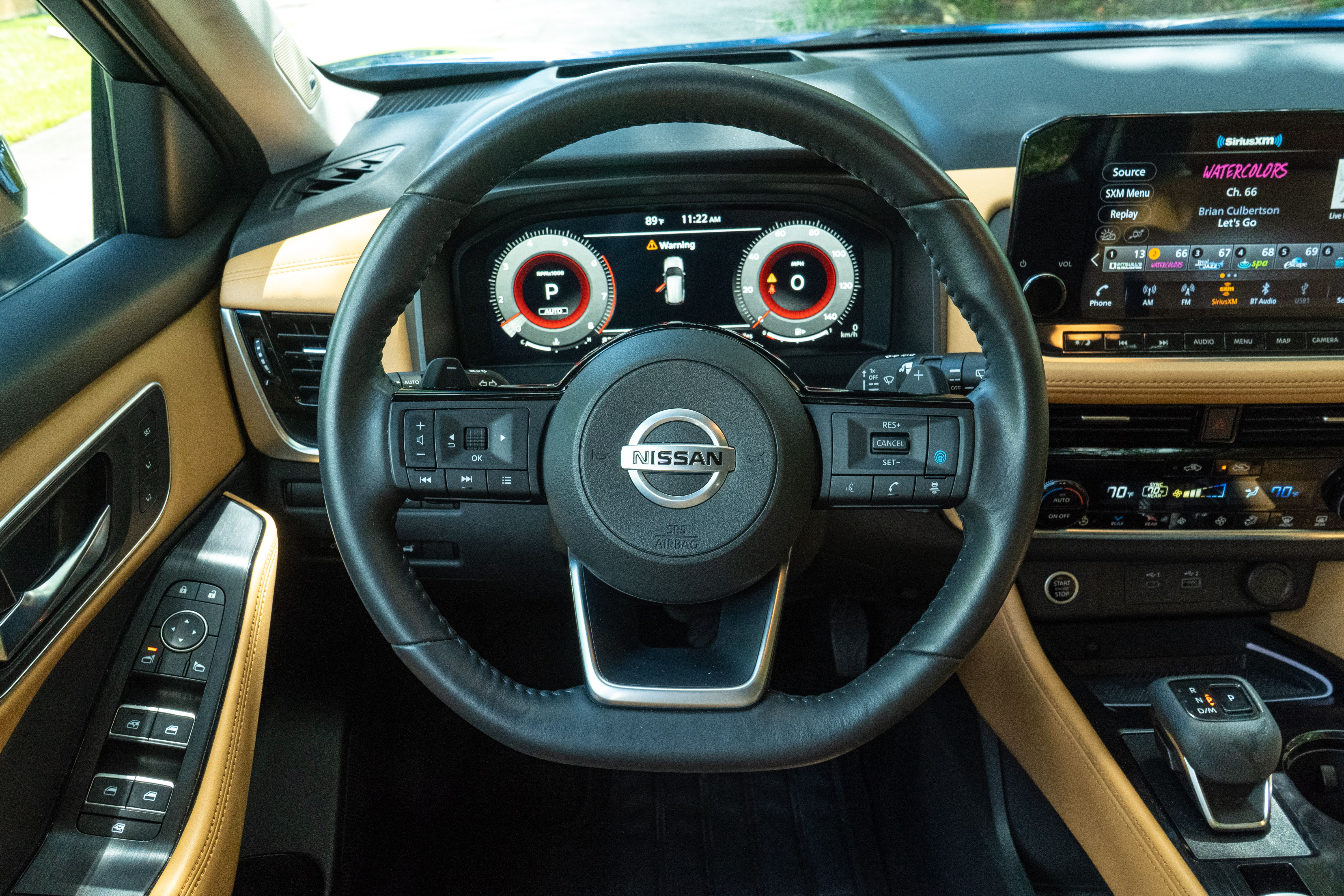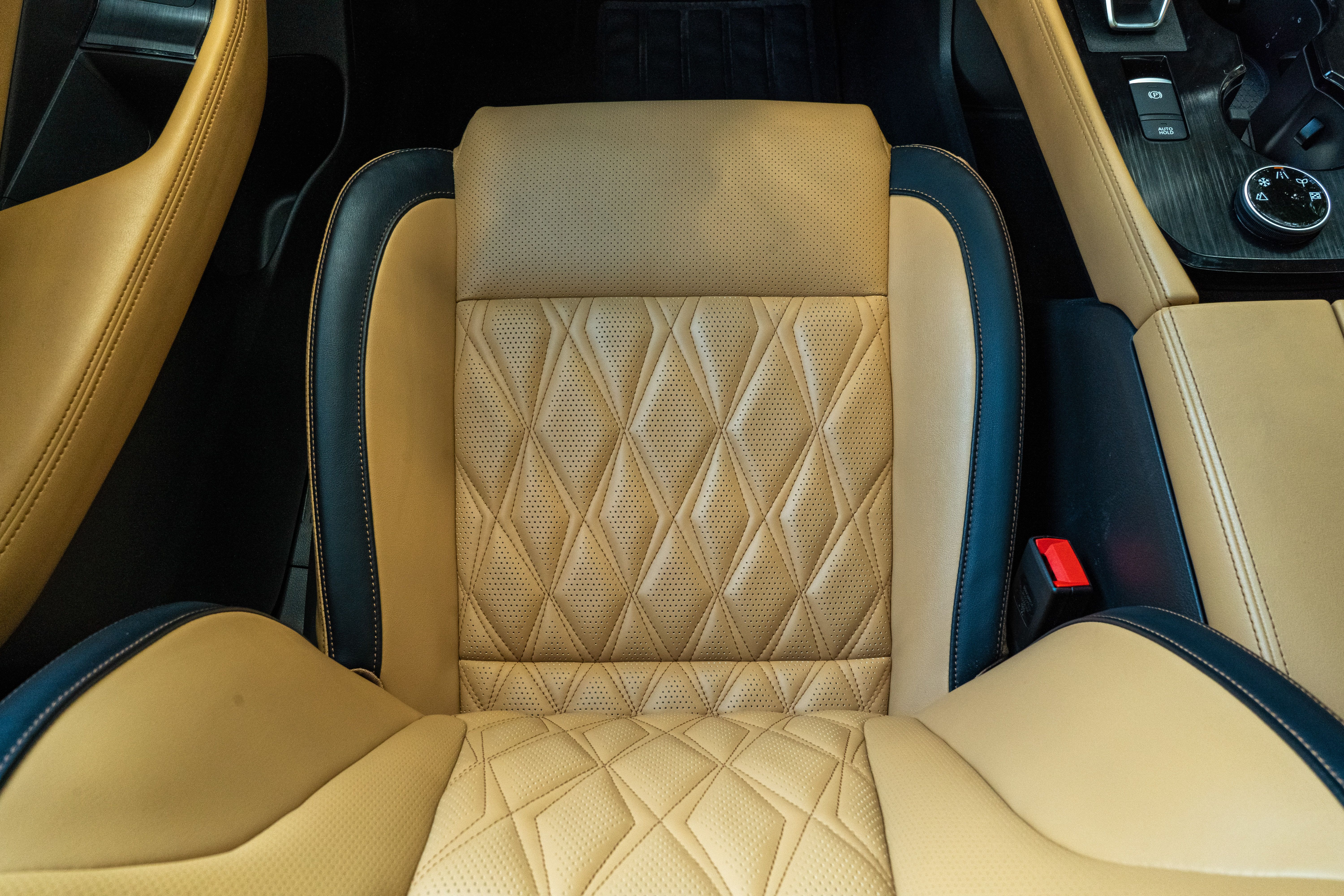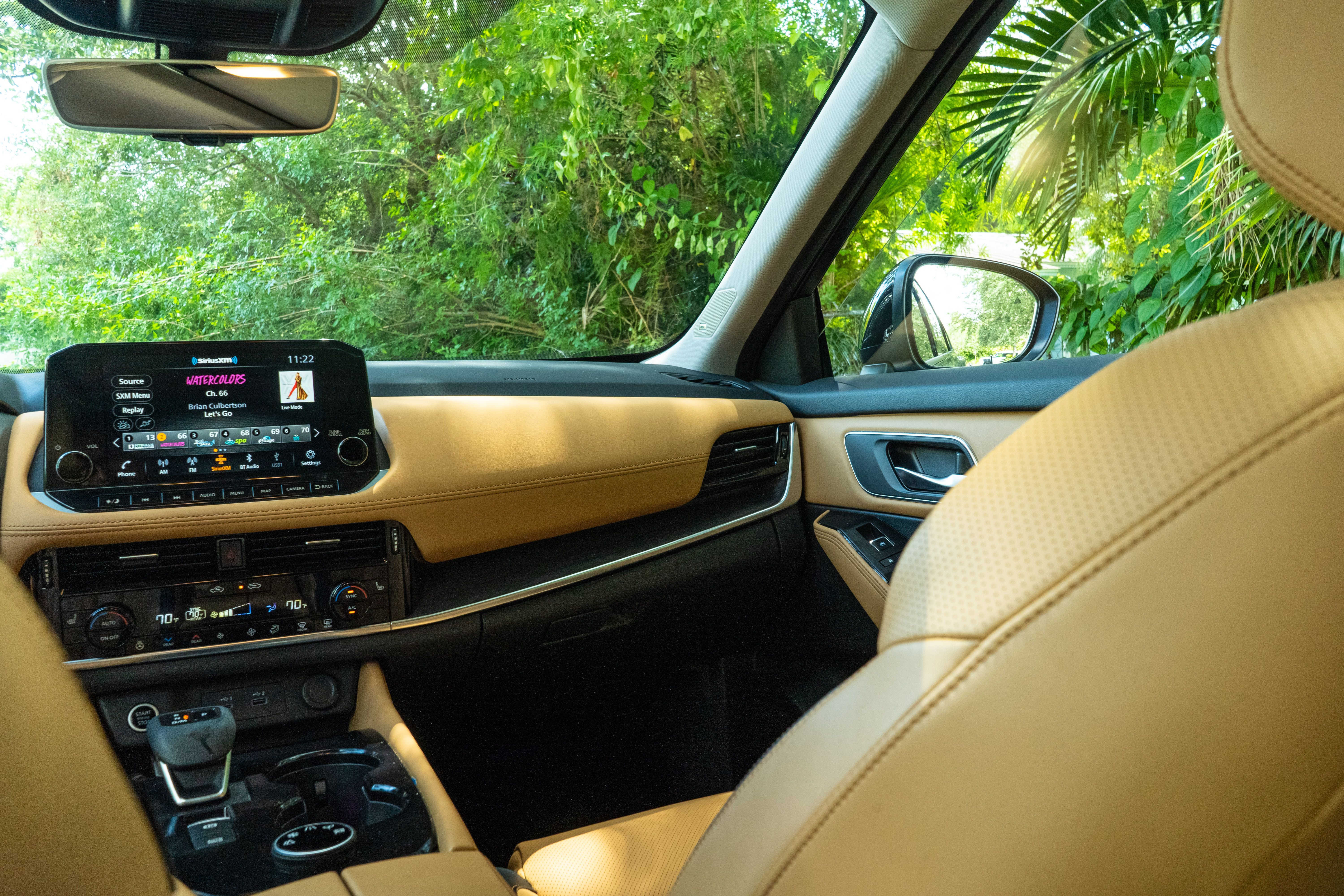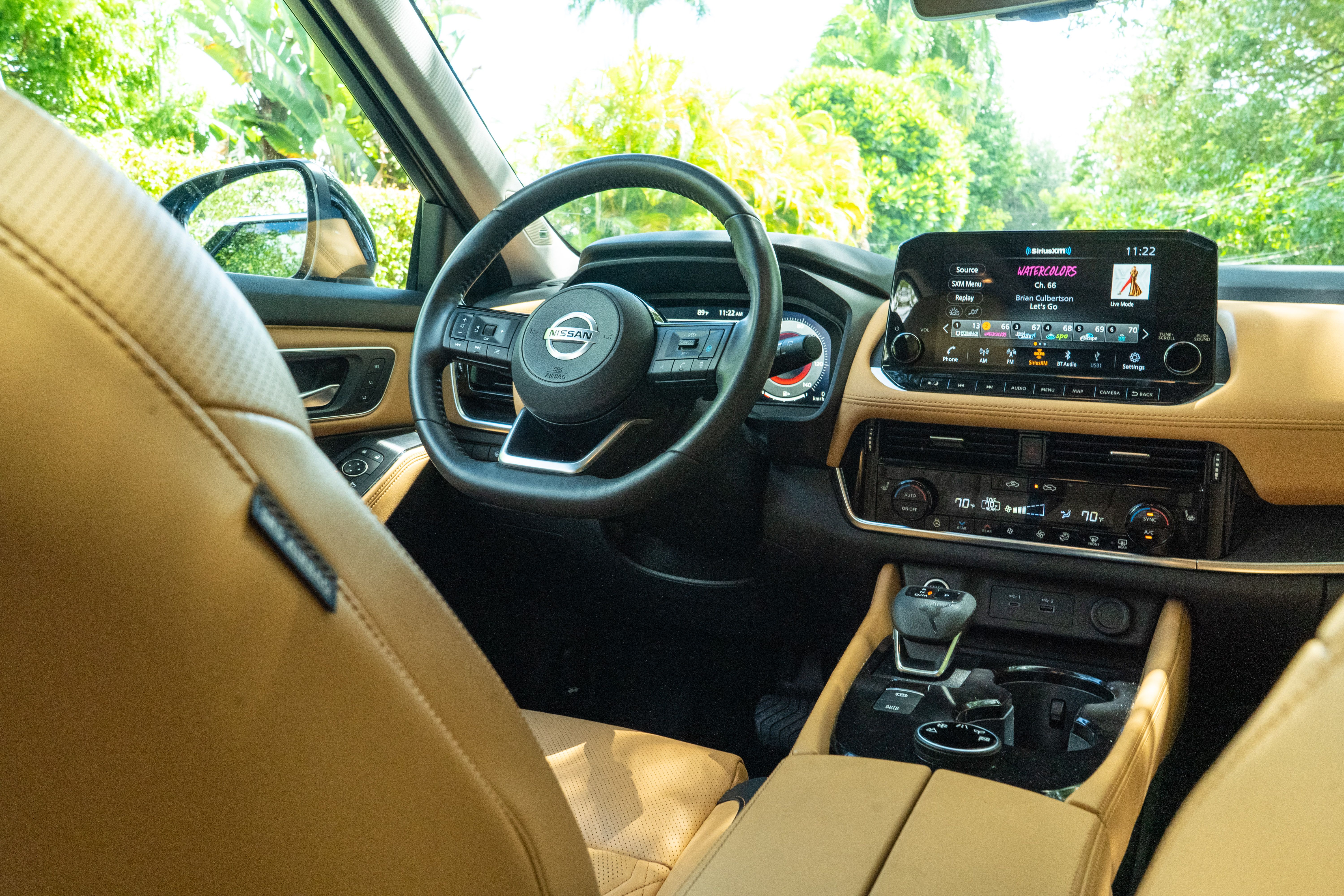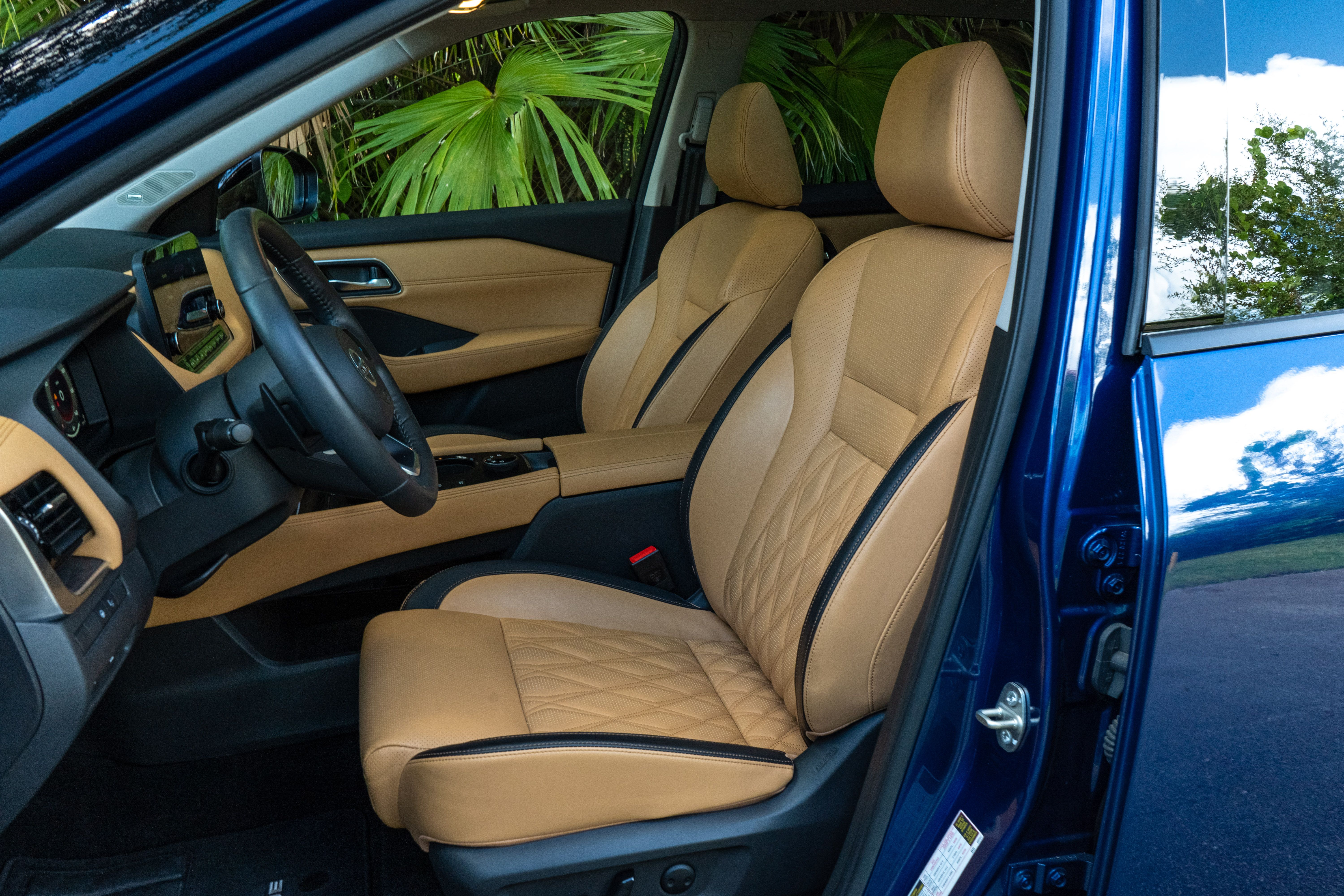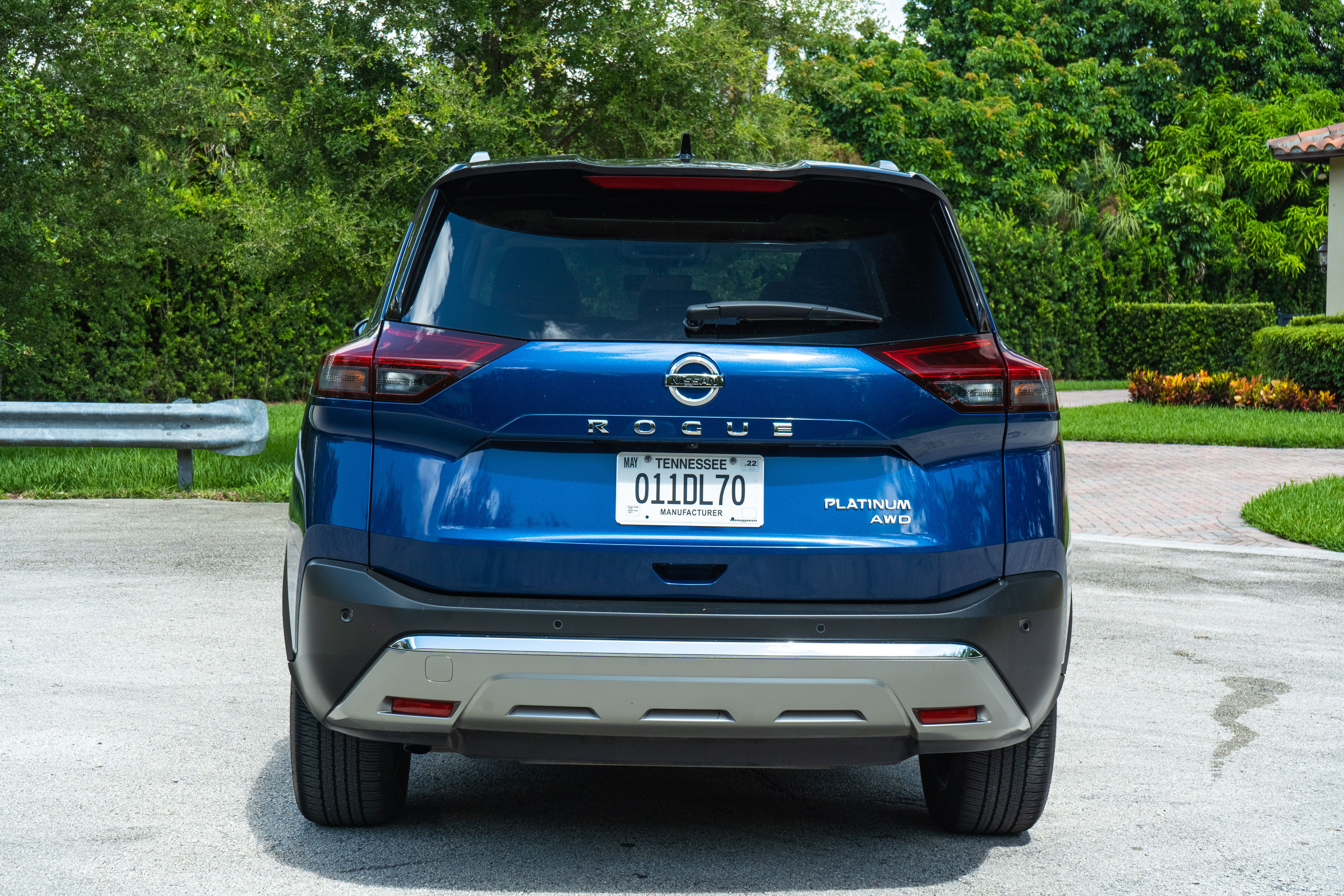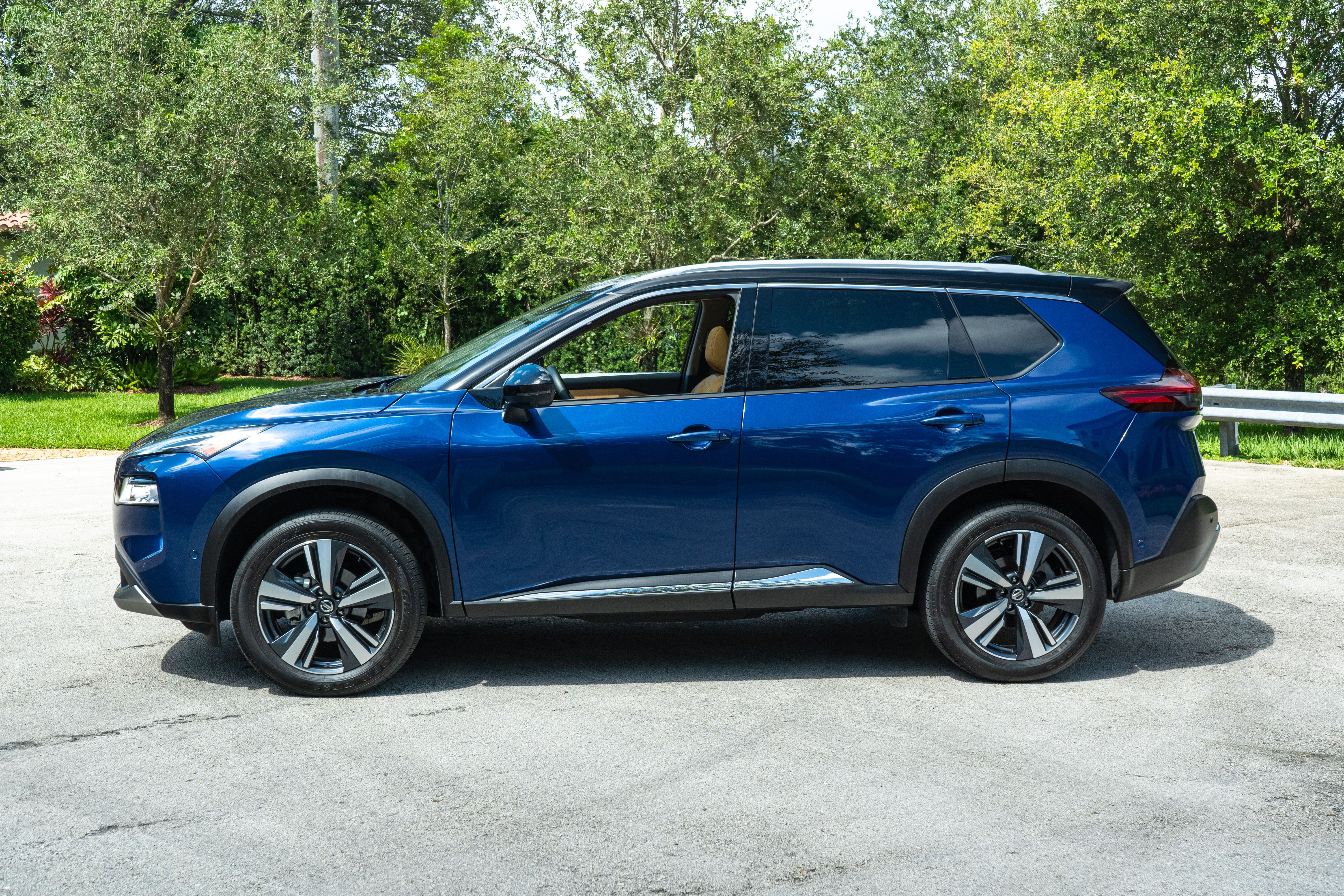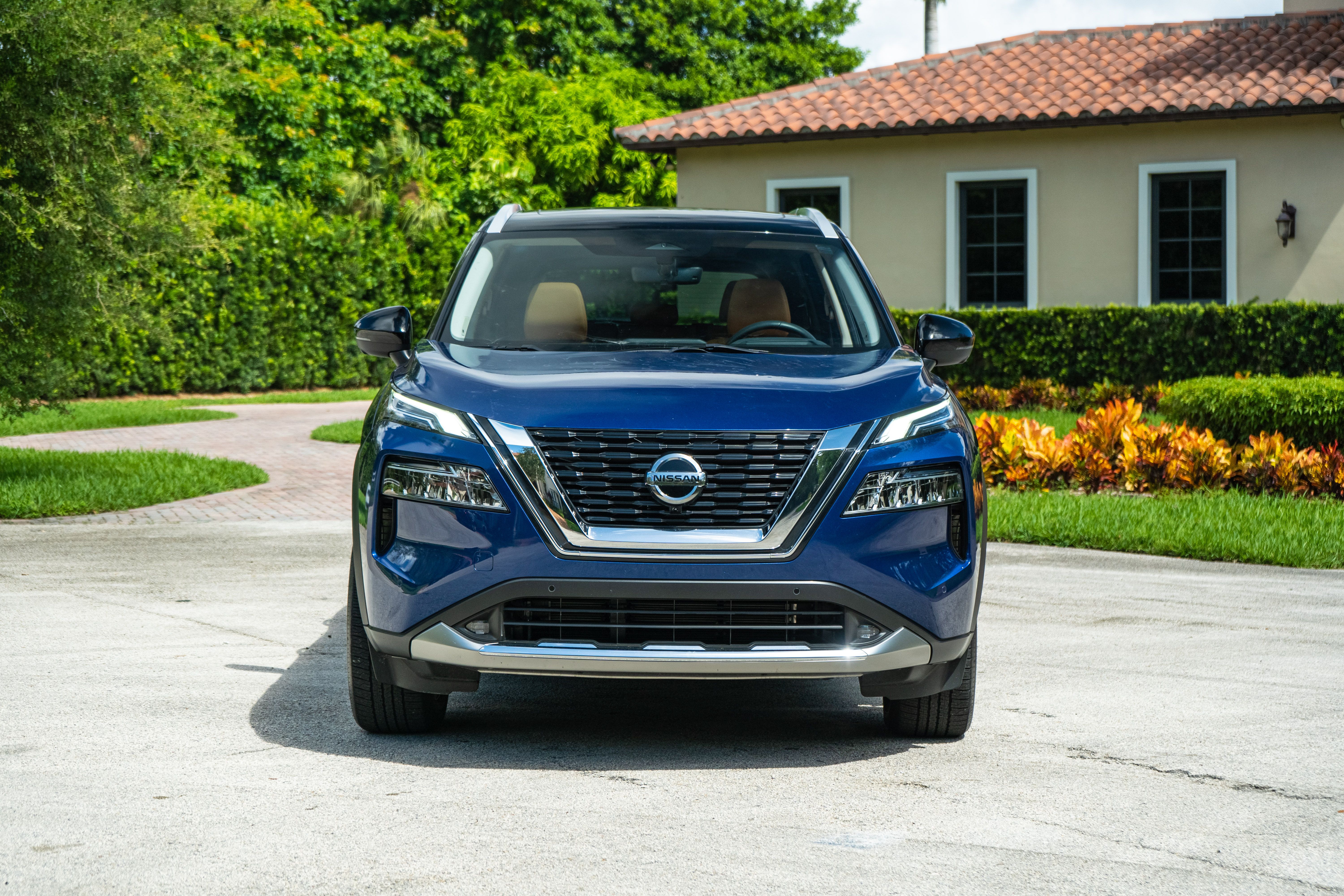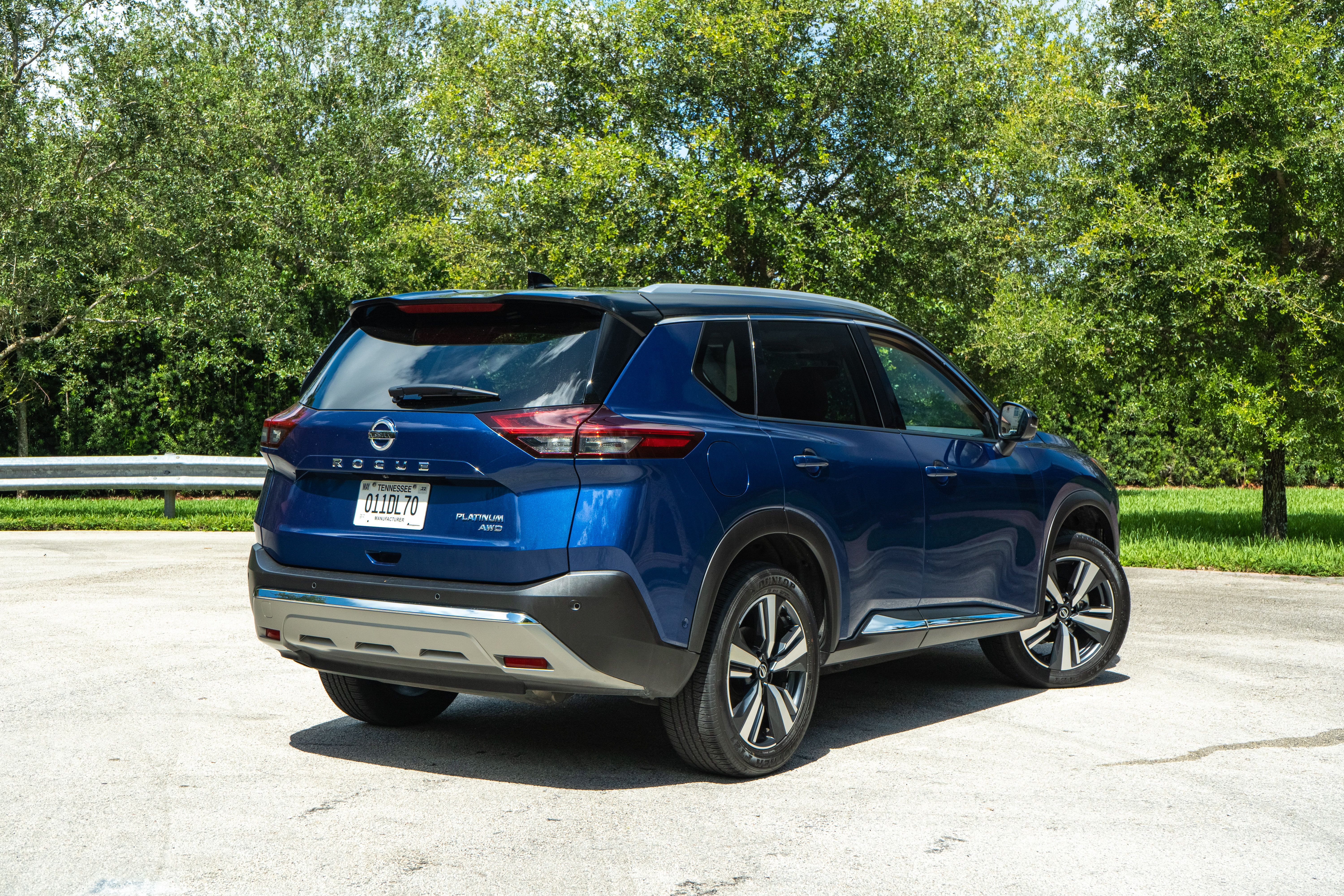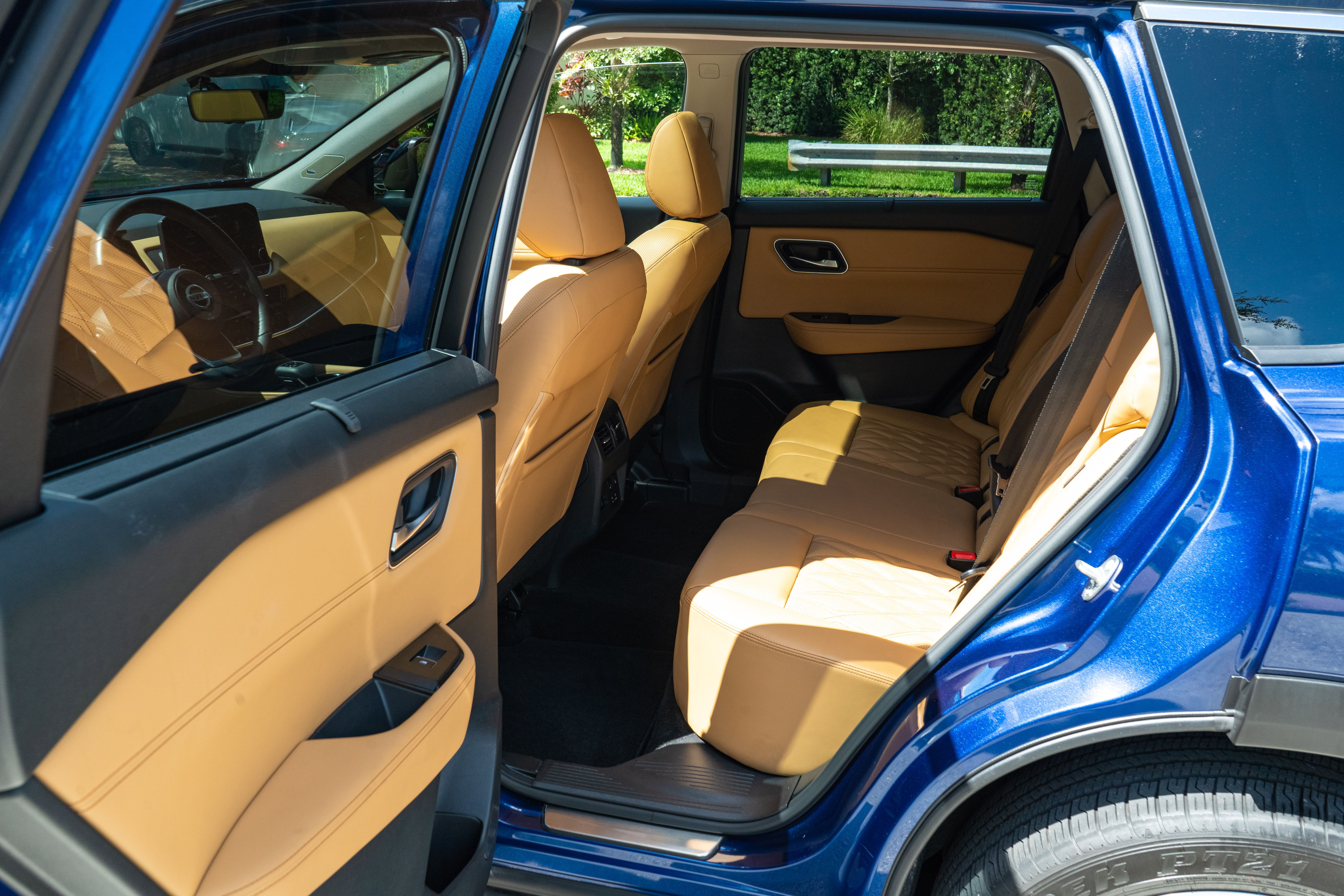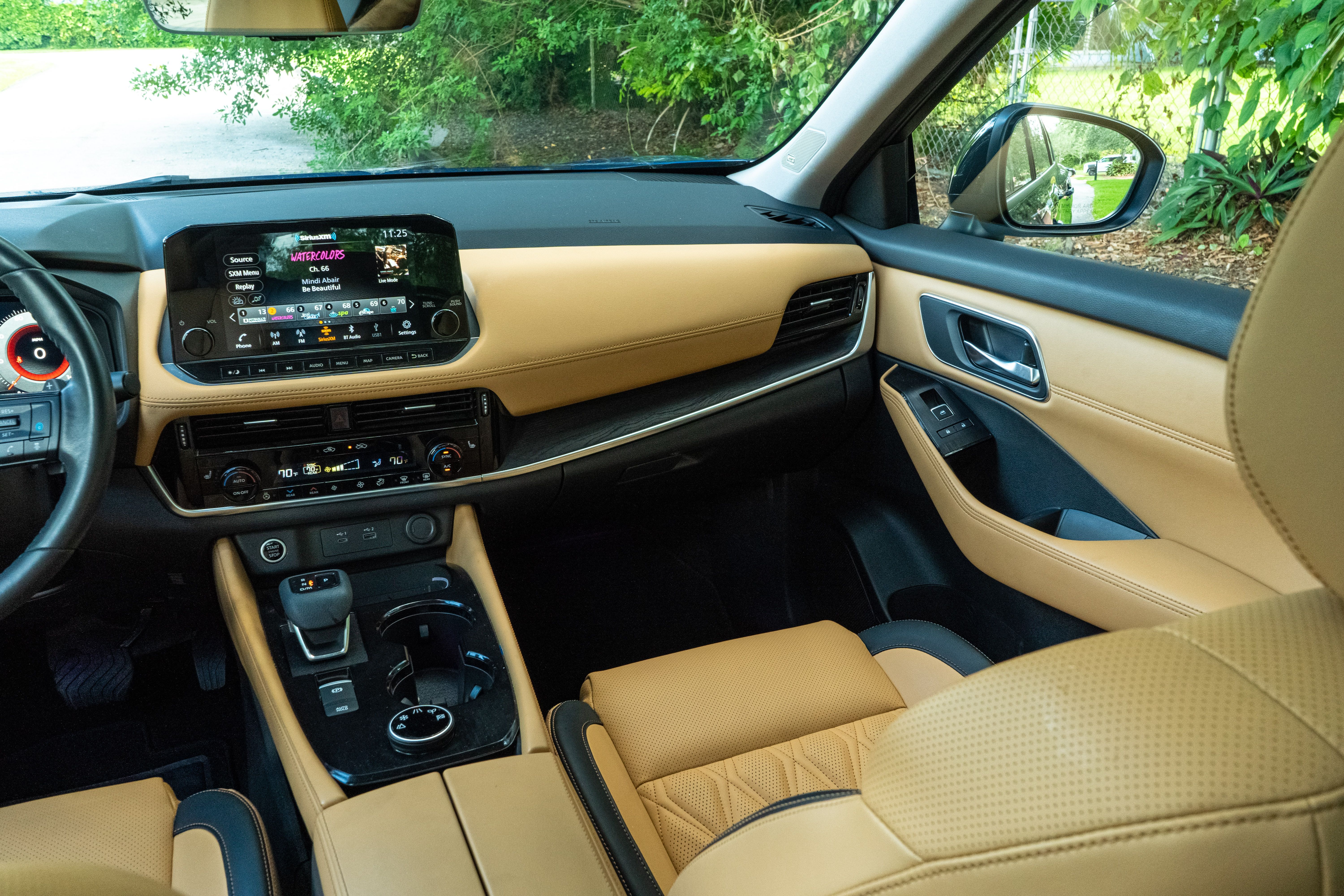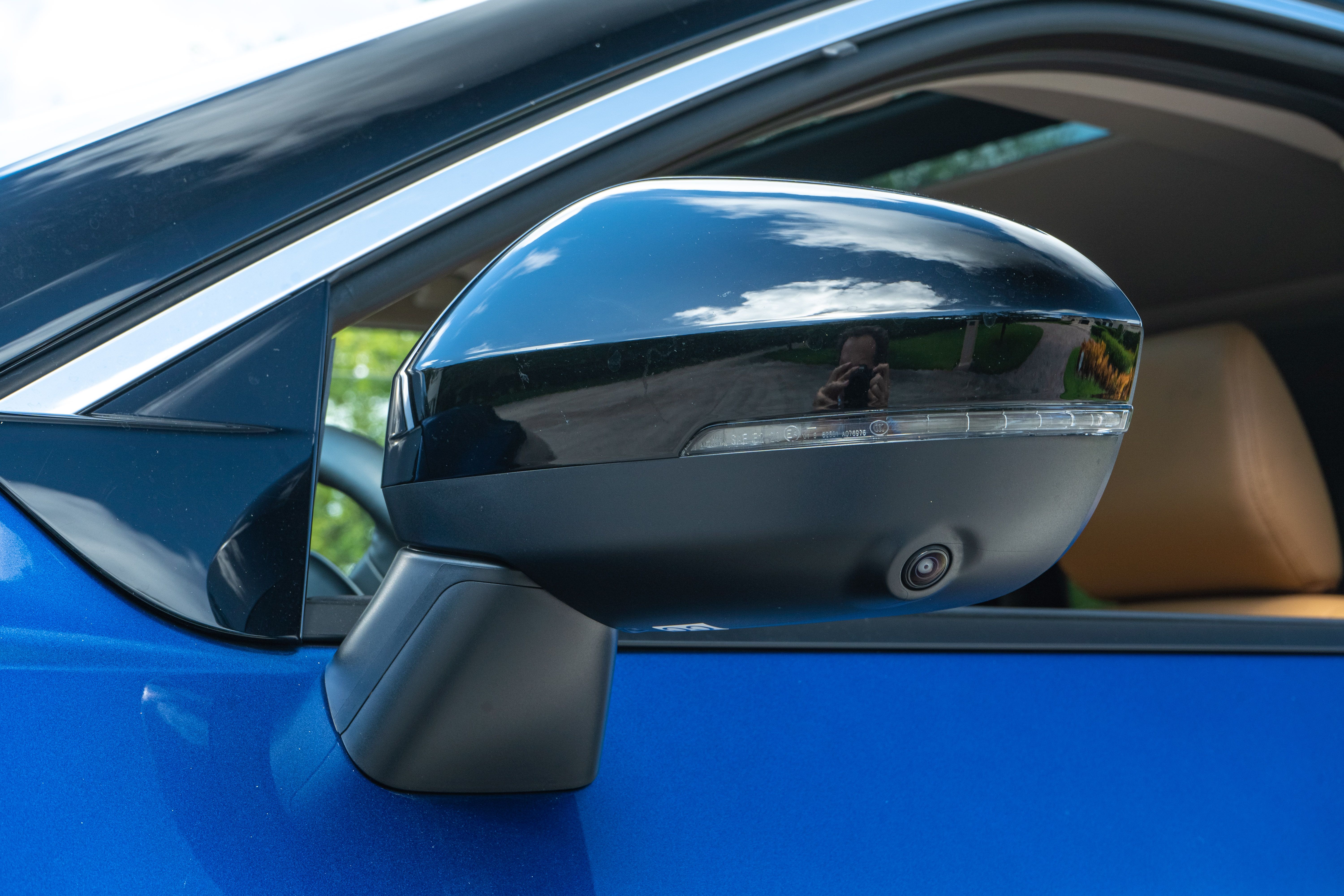The Nissan Rogue rolled into its third generation for the 2021 model year as the brand’s best-selling vehicle and one of the most popular small SUVs on the market. That’s saying a lot since it contends with cars like the Toyota RAV4 and Honda CR-V, among many others. The third generation kicks off with updated looks, new tech, and some all-new features along with an all-new range-topping Platinum trim – the model we just spent an entire week with. Will the third-gen Rogue live up to the standards set by its predecessor and, more importantly, can it overshadow its stiff competition?
2021 Nissan Rogue - Driven
- Make: Array
- Model: 2021 Nissan Rogue - Driven
- [do not use] Vehicle Model: Array
The Nissan Rogue – Our Verdict
Nissan went to extreme lengths to give the 2021 Rogue the tools it needs to not only remain a popular model in its class but, perhaps, to sit at the top of the class. The third-gen Rogue is a vast improvement over the outgoing model, and it represents Nissan’s desire to outclass the competition. Its interior materials are better than ever, there’s an impressive amount of interior storage, competitive passenger space, and it’s certainly more dynamic on the road. All of this, however, isn’t enough to make up for a few flaws that we just can’t get past, like the CVT transmission (your only choice across the lineup), the power and towing deficit compared to the competition, or the road and wind noise at higher speeds that should not be a problem in 2021.
Be that as it may, the Nissan Rogue is still unambiguously positioned among the best small SUVs on the market. It may not be able to dethrone the Honda CR-V quite yet, but it at least has a fighting chance.
Driving the Nissan Rogue
The third-generation Rogue drives considerably better than the model it replaces. The steering is a bit heavier and more responsive, so it doesn’t feel as artificial, nor does it invoke any bit of anxiety. In curves, it maintains confidence, but it’s not to be confused with the sportier handling of models like the Mazda CX-5, for example. Our biggest complaint is arguably in this department, as the Rogue deserves a little something more under the hood. Its 2.5-liter four-cylinder engine comes off as underpowered even for a small SUV. You would think that 181 horsepower and 181 pound-feet of torque would be enough, and it is okay for basic city driving, but it can feel weak and even a little lazy on the highway – especially during unexpected or sudden passing maneuvers. During our testing, we did hit 60 mph in around 9 seconds, which is typical of this class, but at speed, you don’t really notice a lot of extra get up and go beyond 50-percent throttle as you’d expect. You get used to it after a while of driving, though passing on two-lane roads in oncoming traffic will definitely require some planning.
Nissan Rogue vs competition - fuel economy
|
City |
Highway |
Combined |
Nissan Rogue FWD |
27 |
35 |
30 |
|
|---|---|---|---|---|---|---|---|
|
Nissan Rogue AWD |
26 |
33 |
29 |
||||
|
Toyota RAV4 FWD |
27 |
35 |
30 |
||||
|
Toyota RAV4 AWD |
27 |
34 |
30 |
||||
|
Honda CR-V FWD |
28 |
34 |
30 |
||||
|
Honda CR-V AWD |
27 |
32 |
29 |
Nissan Rogue Interior Design
The interior of the Nissan Rogue is beyond surprising. This generation has leaped way ahead in terms of technology, materials, and even fit and finish. We weren’t too thrilled about the amount of road and wind noise that creeps into the cabin at highway speeds, but it’s not as bad as some cars out there, and all the other interior appointments certainly make up for it. In short, the Nissan Rogue feels like it sits in a much higher class bracket than something that starts out at $26,000 and maxes out before options below $38,000. This is especially true in the upper trims, like our Platinum AWD tester. The combination of leather, comfort of the seats, digital instrument cluster, and overall comfort might all make the cabin feel on par with more expensive offerings from brands like BMW, Audi, or Mercedes.
With that said, there are still some things to remind you that you’re still riding in the “affordable class,” like the smaller infotainment display, the plastic gear shifter and other little bits of plastic here and there. Small item storage is phenomenal, though – especially in the front – and the triple-zone climate control system (standard on the SL and higher) works awesome and is also a pleasant surprise as it’s a rare feature for a small SUV.
Nissan Rogue vs competition - interior dimensions
|
Front Headroom |
39.2 |
39.5 |
40.1 |
|---|---|---|---|
|
Front Shoulder Room |
57.1 |
57.8 |
57.9 |
|
Front Hip Room |
54.1 |
54.3 |
55.1 |
|
Front Leg Room |
41.5 |
41 |
41.3 |
|
Rear Headroom |
37.8 |
39.5 |
39.2 |
|
Rear Shoulder Room |
55.9 |
56.4 |
55.6 |
|
Rear Hip Room |
53.4 |
47.7 |
49.5 |
|
Rear Leg Room |
38.5 |
37.8 |
40.4 |
Nissan Rogue Exterior Design
The 2021 Nissan Rogue looks a little more grown-up and beefy compared to the outgoing model. The front end has evolved from the older, smaller grille design to something a little more prominent while the hood is flatter and more upright. The side profile has been more toned down in some areas, but more shaper and aggressive in others. The rear end went through the most changes, ditching the traditional SUV look for a more angular design, with a high-sitting rear fascia and smaller rear glass. Overall the exterior design is representative of an evolution in Nissan design language, which is a good thing, as the Rogue looked good before – it just looks better now.
Nissan Rogue vs competition - exterior dimensions
|
Length |
183 |
180.9 |
182.1 |
|---|---|---|---|
|
Width |
72.4 |
73 |
73 |
|
Height |
66.5 |
67 |
66.1 |
|
Wheelbase |
106.5 |
105.9 |
104.8 |
|
Front Track |
62.4 |
62.6 |
62.9 |
|
Rear Track |
62.6 |
63.3 |
63.5 |
Nissan Rogue Pricing
The 2021 Nissan Rogue is priced between $26,050 and $37,230 before options, taxes, delivery, registration, and the like. Our tester was the Platinum AWD trim, that starts out at $36,830 and included the following options:
- External ground lighting ($350)
- Two-tone paint ($350)
- Illuminated kick plates ($400)
- Interior accent lighting ($350)
- Frameless rearview mirror with universal remote ($310)
Add in the $1,095 destination charge and the total sticker price comes to $39,685. In comparison, you can get into a Toyota RAV4 for anywhere between $26,350 and $36,280 or the Honda CR-V which commands anywhere between $25,750 and $35,550.
|
Starting MSRP |
Max MSRP |
Nissan Rogue |
$26,050 |
$37,230 |
|
|---|---|---|---|---|---|
|
Toyota RAV4 |
$26,350 |
$36,280 |
|||
|
Honda CR-V |
$25,750 |
$35,550 |
FAQ
Q: Does the Nissan Rogue Get Good Fuel Economy?
The Nissan Rogue is rated at 27 mpg in the city, 35 mpg on the highway, and 30 mpg combined with FWD or 26,33,and 29, with AWD, respectively. During our testing with the Platinum AWD trim, we managed an average of 32 mpg with a 50-50 mix of city and highway driving, which is a bit more than expected. In comparison, the Toyota RAV4 AWD offers up as much as 30 mpg combined while the Honda CR-V AWD is good for 29 mpg combined.
Q: How Much Power Does the Nissan Rogue Have?
The Nissan Rogue has a 3.5-liter inline-four that delivers 181 horsepower at 6,000 rpm and 181 pound-feet of torque at 3,600 rpm. This actually puts it below the competition, with the Toyota RAV4 offering up 203 horsepower and 184 pound-feet from a 2.5-liter and the Honda CR-V putting out 190 horsepower and 179 pound-feet from a 1.5-liter inline-four.
Q: Does The Nissan Rogue Have a Manual Transmission?
The Nissan Rogue is offered as standard with a CVT transmission, and it’s the sole option across the lineup. This is arguably one of its weakest points, but in fairness, it doesn’t hamper the driving dynamics as much as some CVTs on the market. If you want a good old-fashioned transmission, your only option here is the Toyota RAV4, which comes standard with an eight-speed automatic. The Honda CR-V is also limited to a CVT. [/q]
{1{[q]Is the Nissan Rogue AWD?[/q]}1}
[a]The Nissan Rogue is dominantly FWD, however, each trim in the lineup can be had with AWD as well, if you’re willing to pay a little extra. This is the same case for both the Toyota RAV4 and the Honda CR-V.
Q: Is the Nissan Rogue AWD?
The Nissan Rogue, when properly equipped, is capable of towing up to 1,350 pounds, which isn’t a lot in the grand scheme of things but it’s pretty decent for a small SUV. The Toyota RAV4 and Honda CR-V can both haul up to 1,500 pounds, though, so if that’s on your priority list, you might have to look to the competition.
Q: How Much Can The Nissan Rogue Tow?
The Nissan Rogue is, honestly, outrageously comfortable. The shape of the front seats feel molded to the body with padding that’s supportive but also soft and comfortable. The same can also be said for the rear seats (something we rarely say) with great lumbar support and even two recline positions. Driving down the road is generally comfortable sans the wind and road noise at higher speeds. The suspension is tuned in a way that the Rogue can handle most imperfections in the road and most road surfaces without issue. Unlike the last-gen model, the Rogue doesn’t get shaky or jittery, even on larger wheels, and generally evokes a sense of confidence and safety in all passengers.
Q: How Comfortable Is Nissan Rogue?
The Nissan Rogue is about on par in terms of passenger space with both the Toyota RAV4 and the Honda CR-V. It falls short in front and rear headroom but fares well in terms of legroom in the front and rear. In short, five adults can ride fairly comfortably in the Rogue. Four is definitely preferred given its overall size, but 5 is easily doable. The table below gives you a full interior space breakdown.
Q: How Much Passenger Space Does the Nissan Rogue Have?
The Nissan Rogue can carry around 36.5 cubic-feet of cargo behind the rear seats or as much as 74.1 cubic-feet if you lay the rear seatbacks down. On the low end, the Rogue falls inferior to the RAV4 at 37.5 cubic-feet and the Honda CR-V at 39.2 cubic-feet, but the story is a little different once the seats are laid down. The RAV4 comes in last at 69.8 cubic-feet while the CR-V still wears the throne with 75.8 cubic-feet.
Q: How Much Cargo Room Does the Nissan Rogue Have?
The Nissan Rogue measures 183-inches long, 72.4-inches wide, and 66.5-inches tall. It rides on a 106.5-inch wheelbase with a 62.4-inch front track and a 62.6-inch rear track. In comparison to the Toyota RAV4 and Honda CR-V, the new Rogue is actually larger in terms of length but falls a little short in the width department. It trumps the CR-V in height but is half an inch down on height compared to the RAV4. All in all, they are all generally the same size.
Q: How Big Is the Nissan Rogue?

